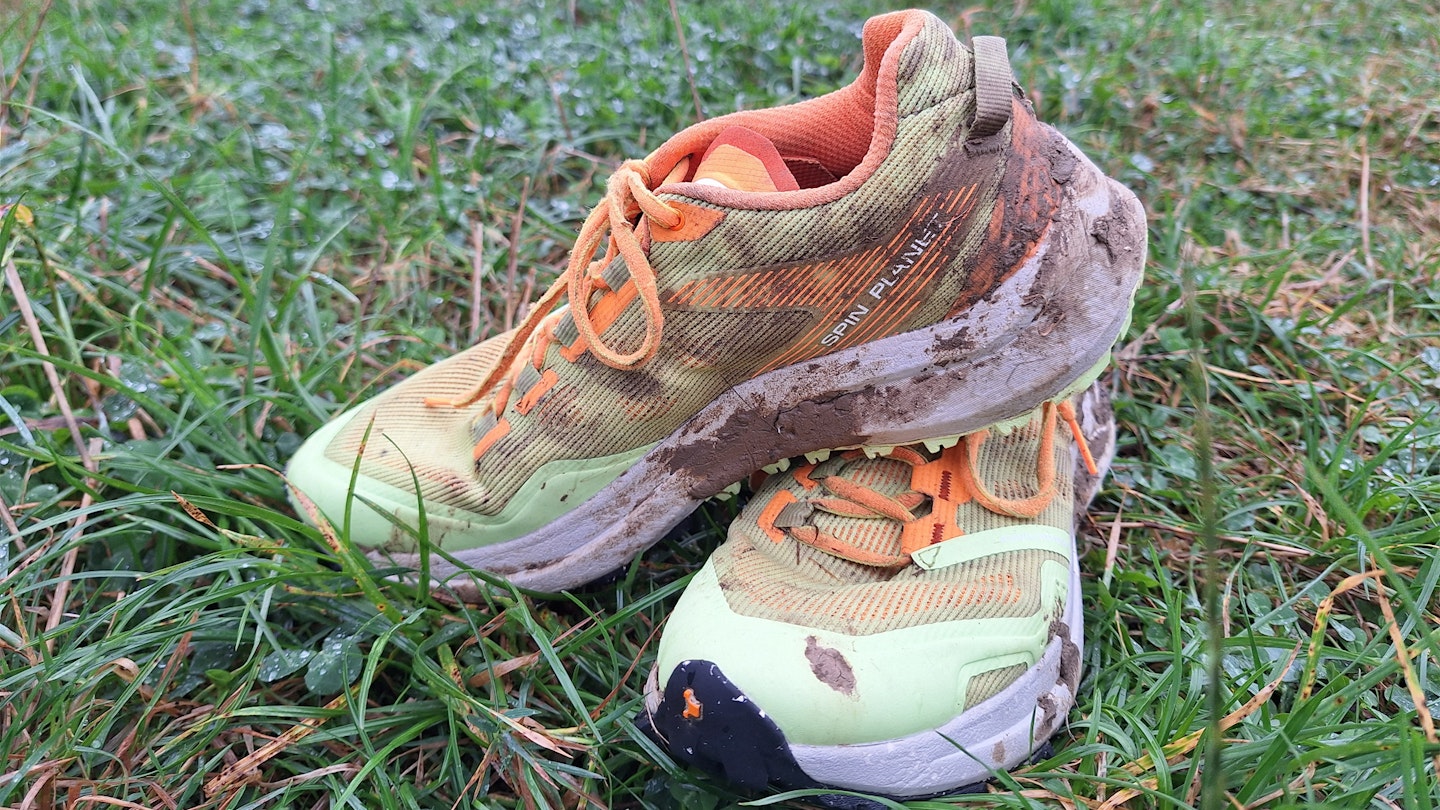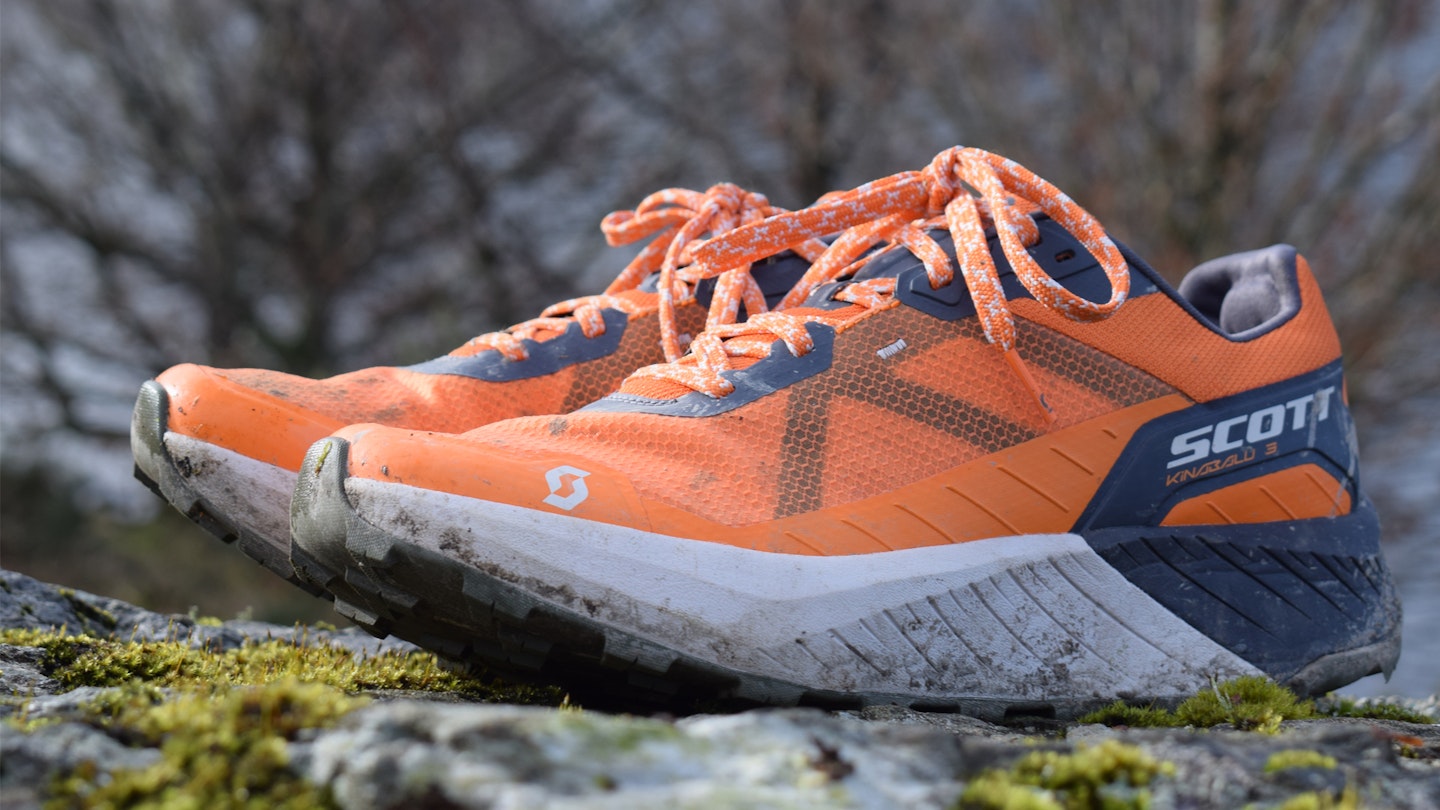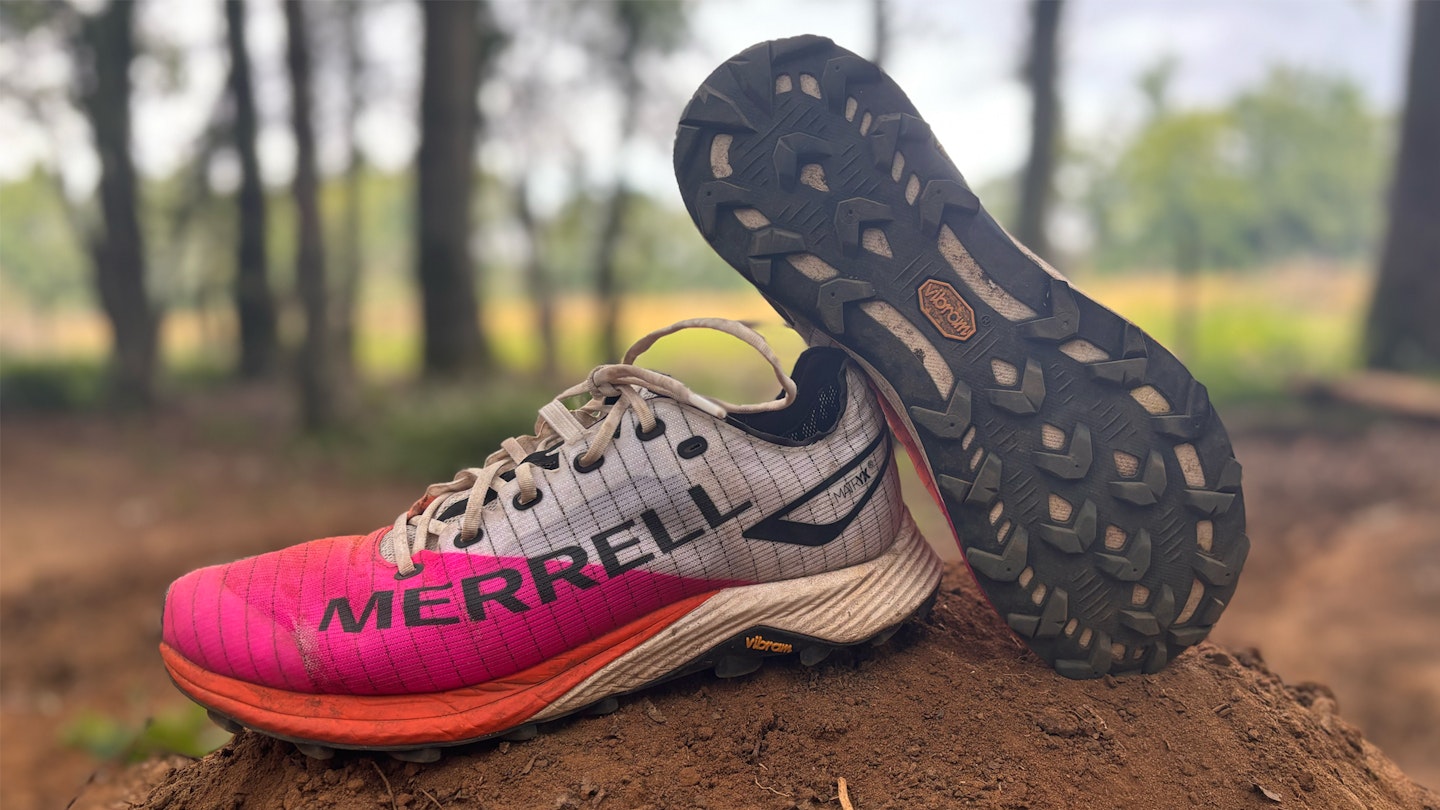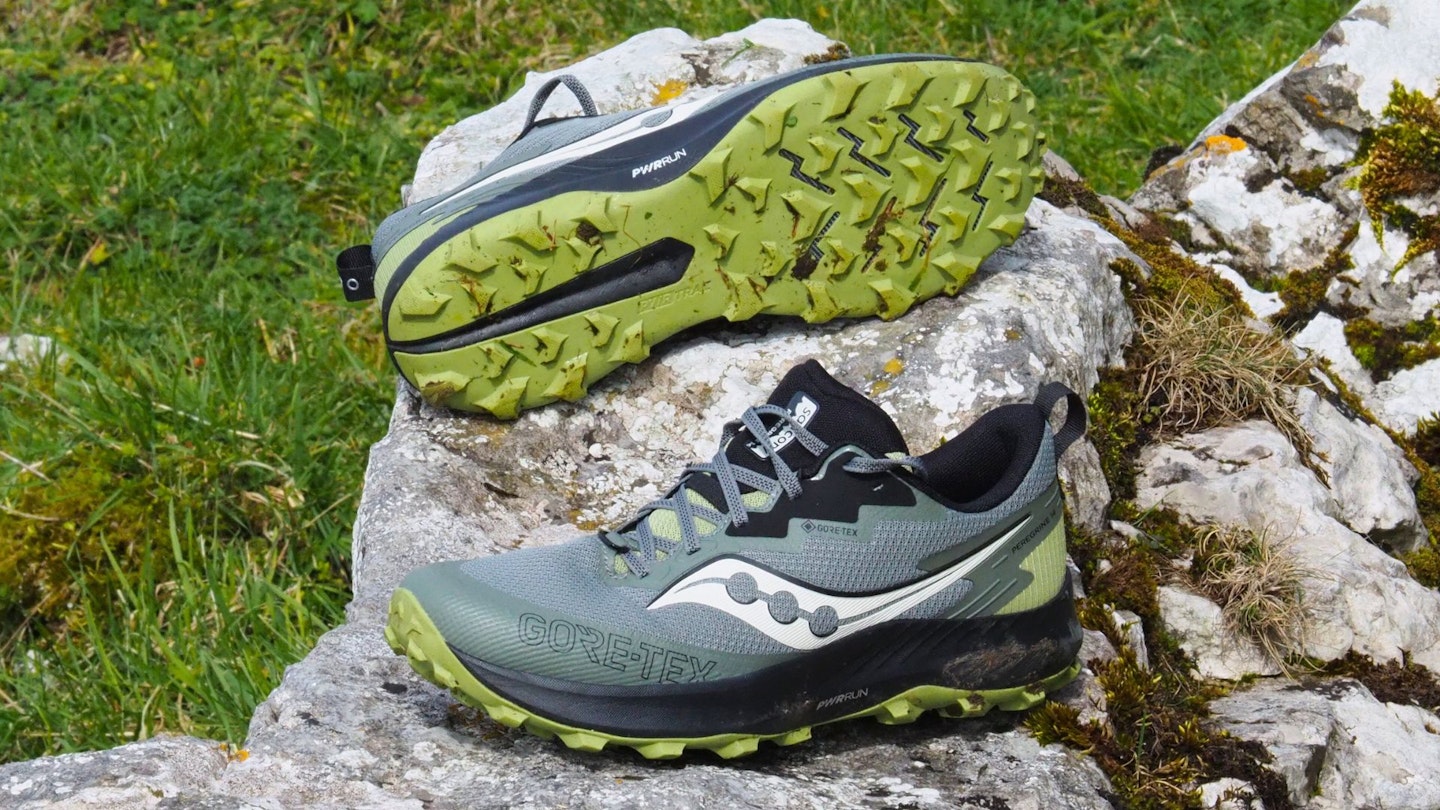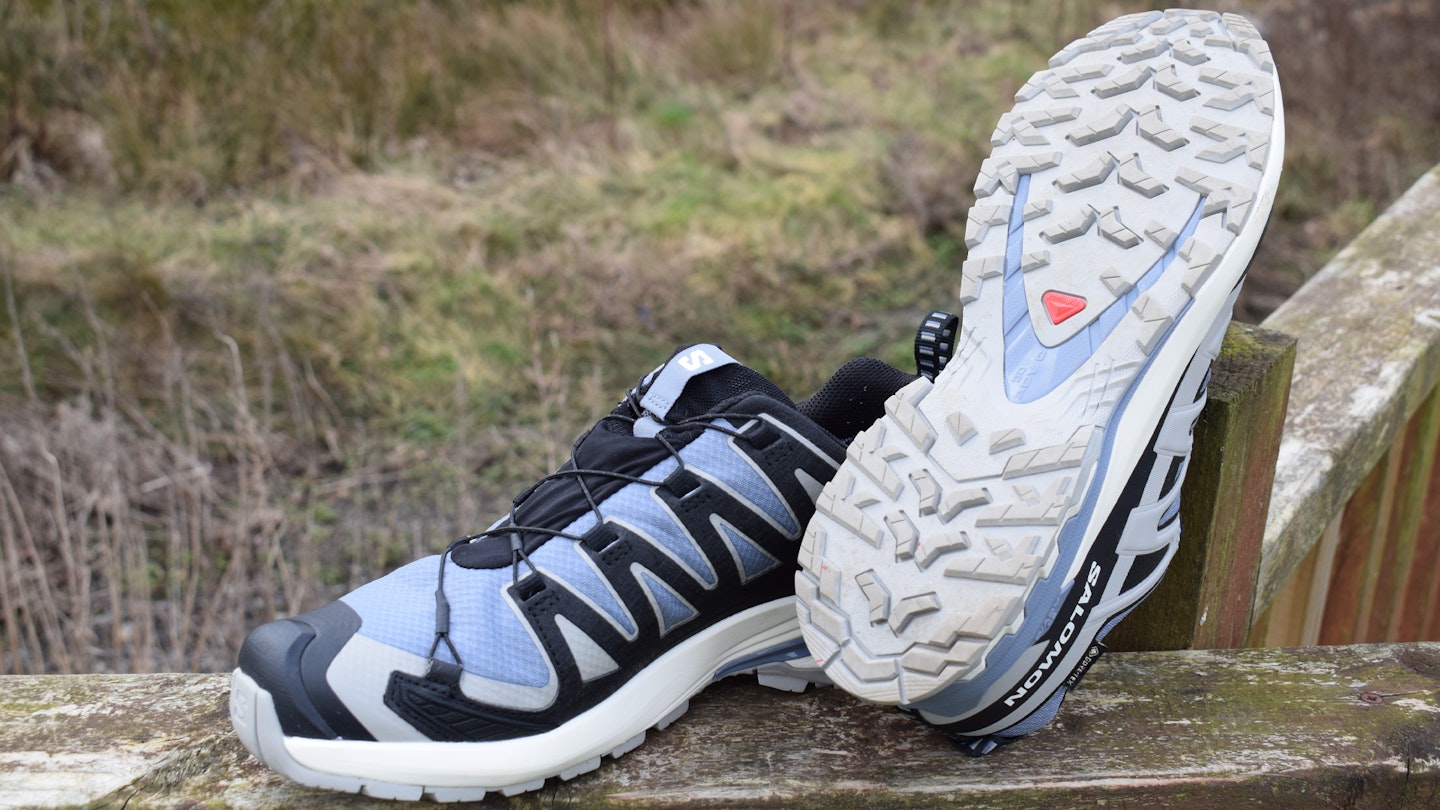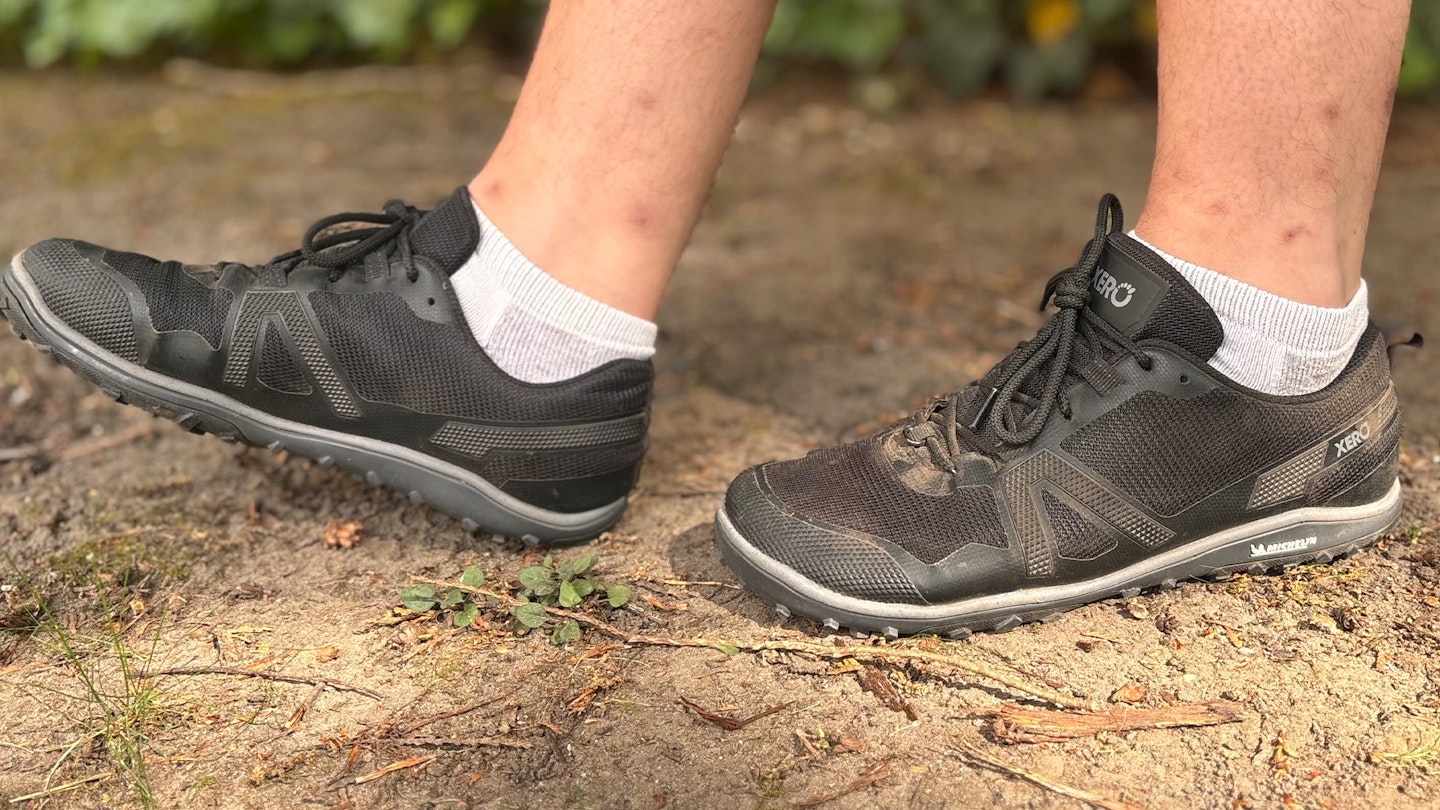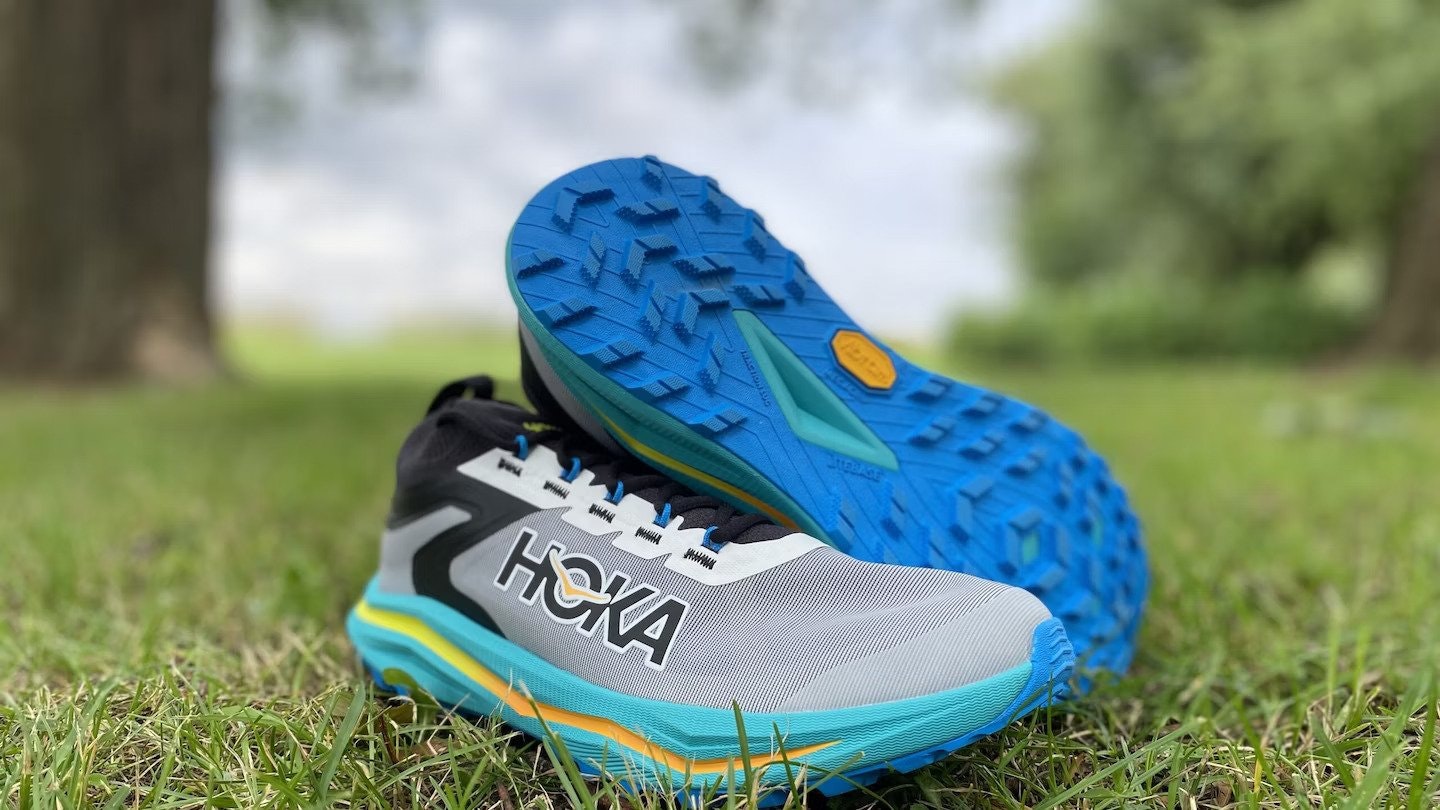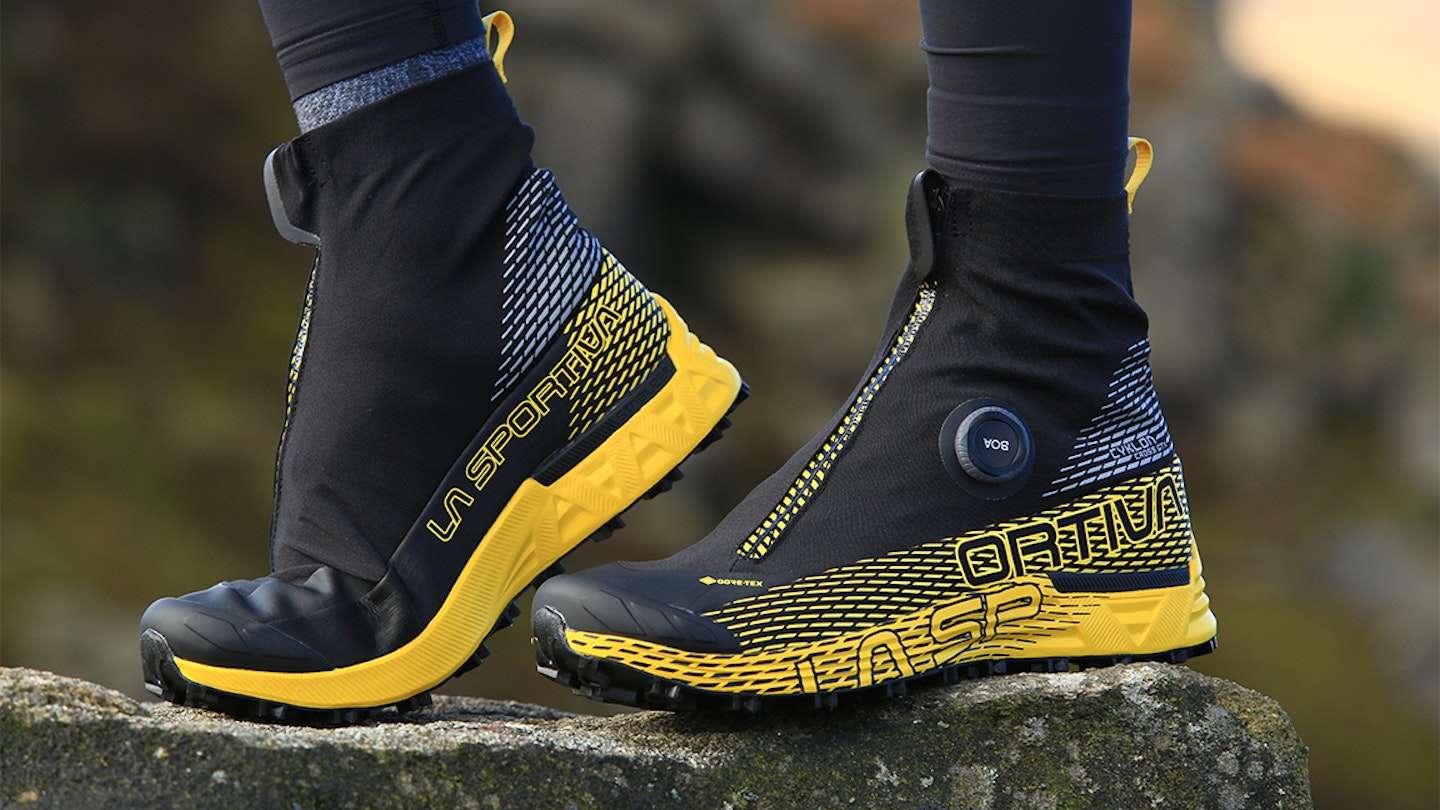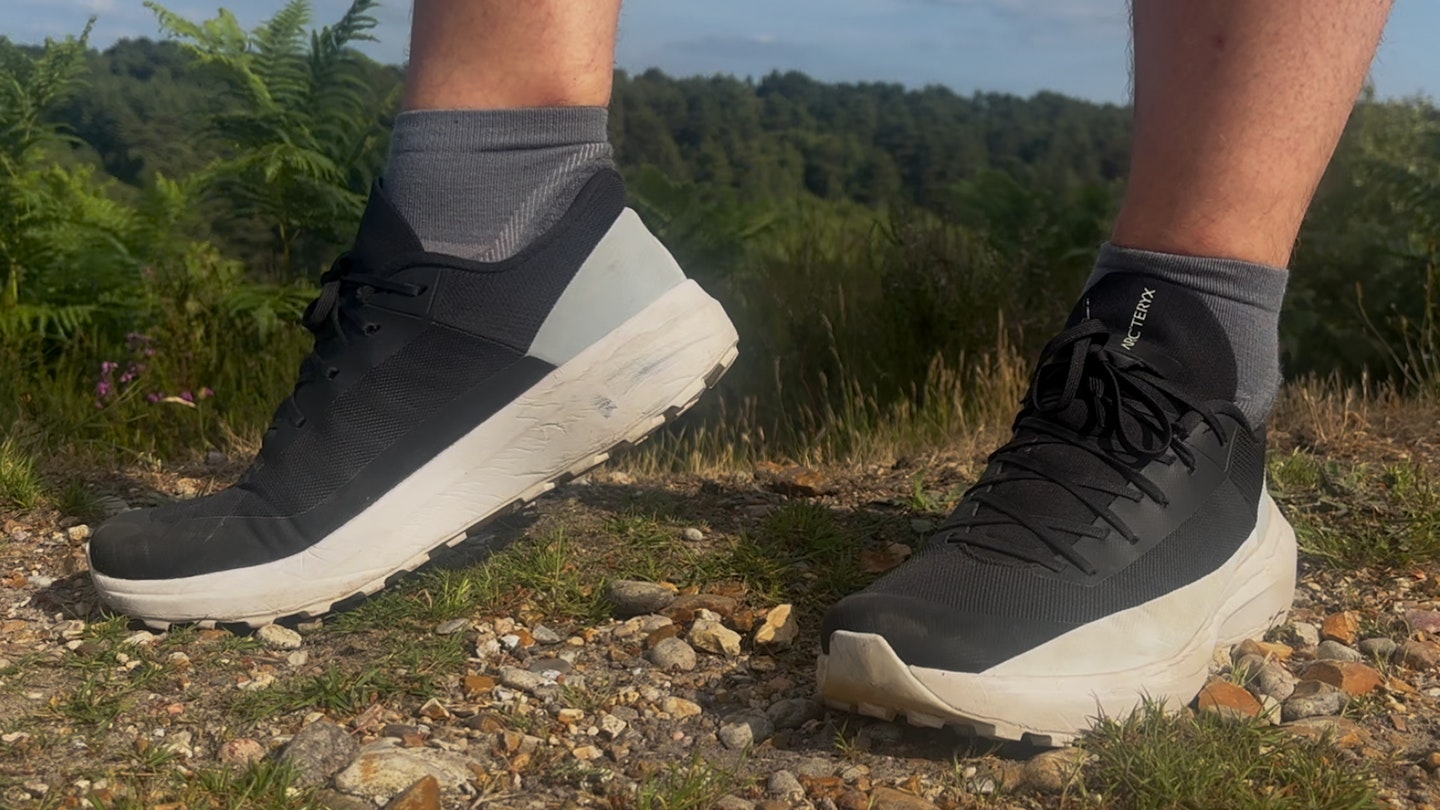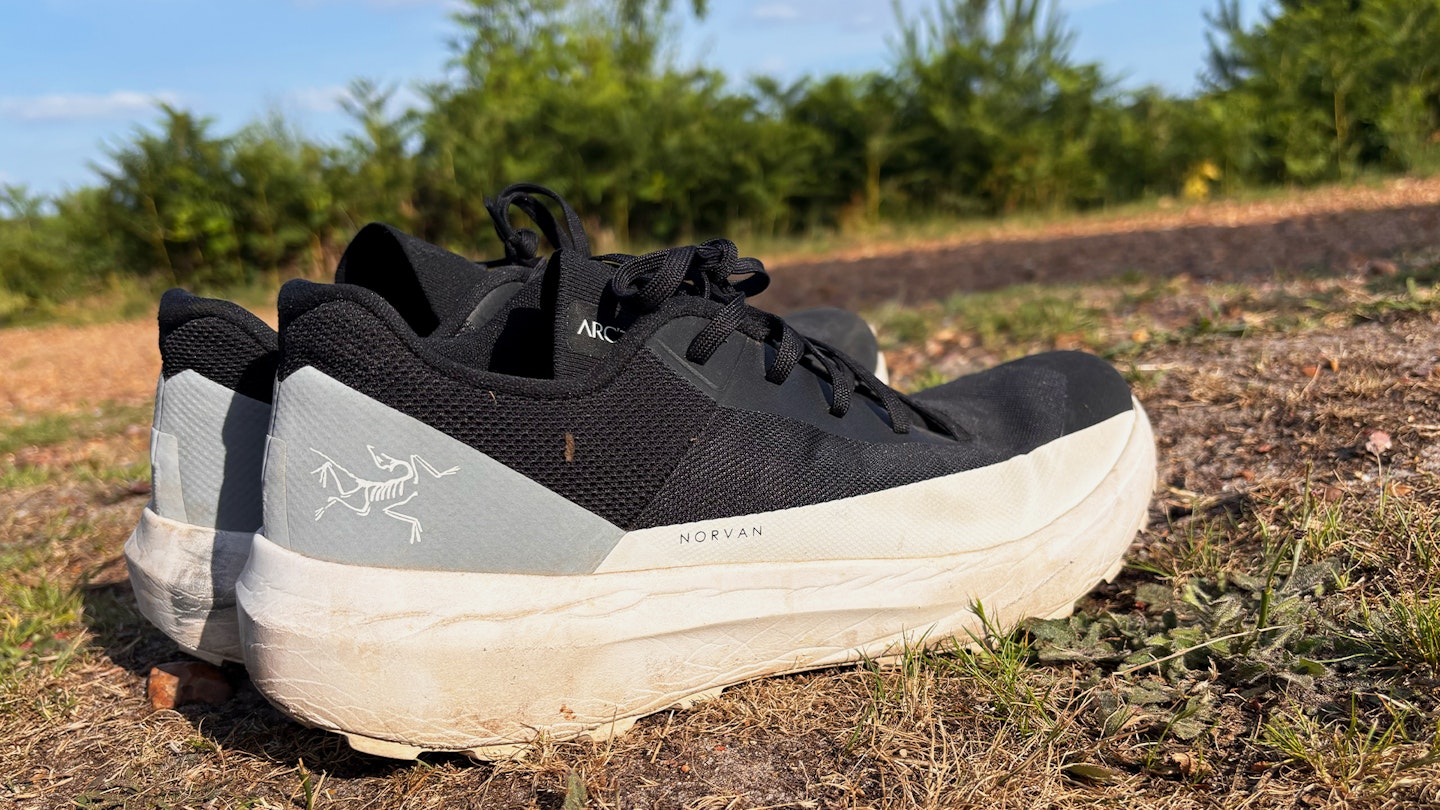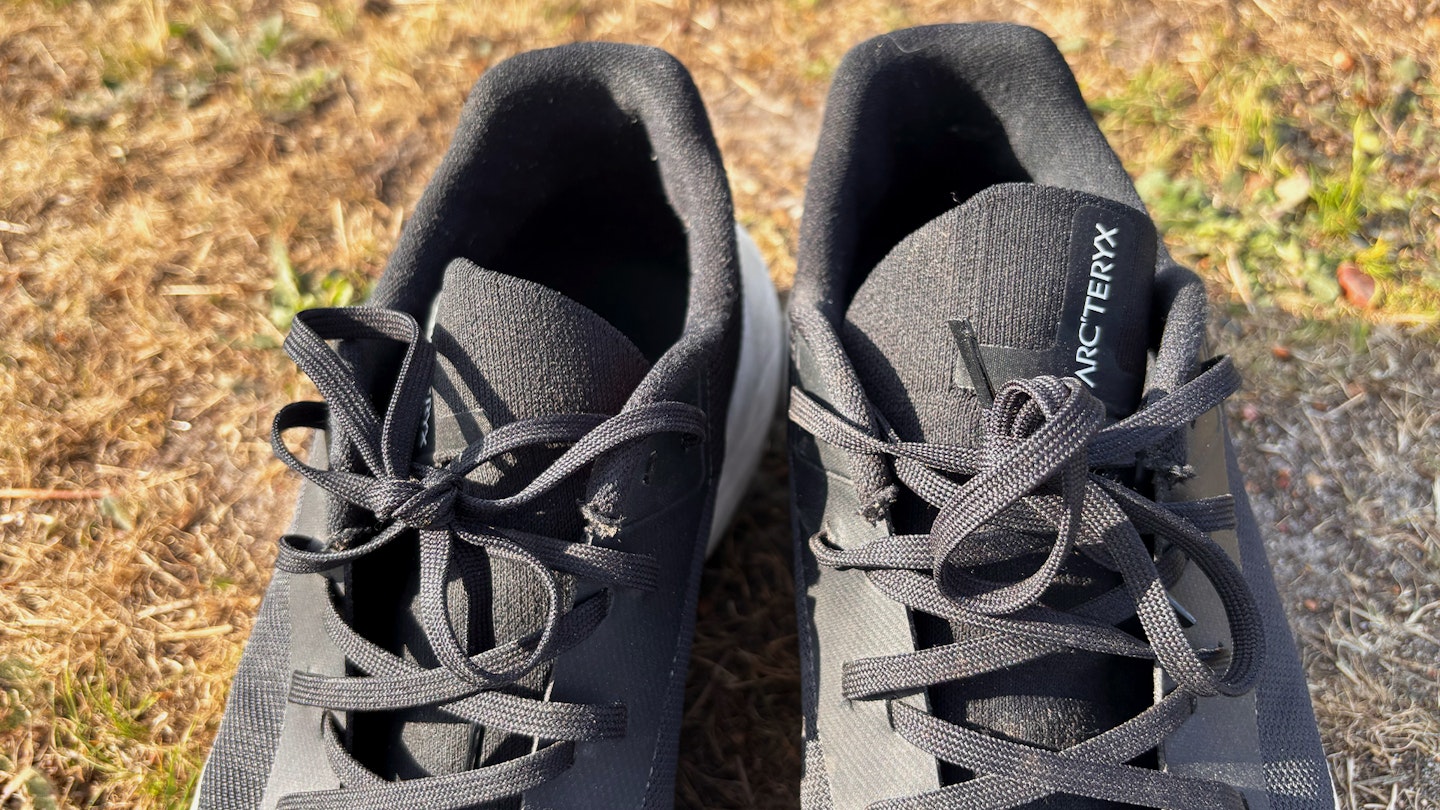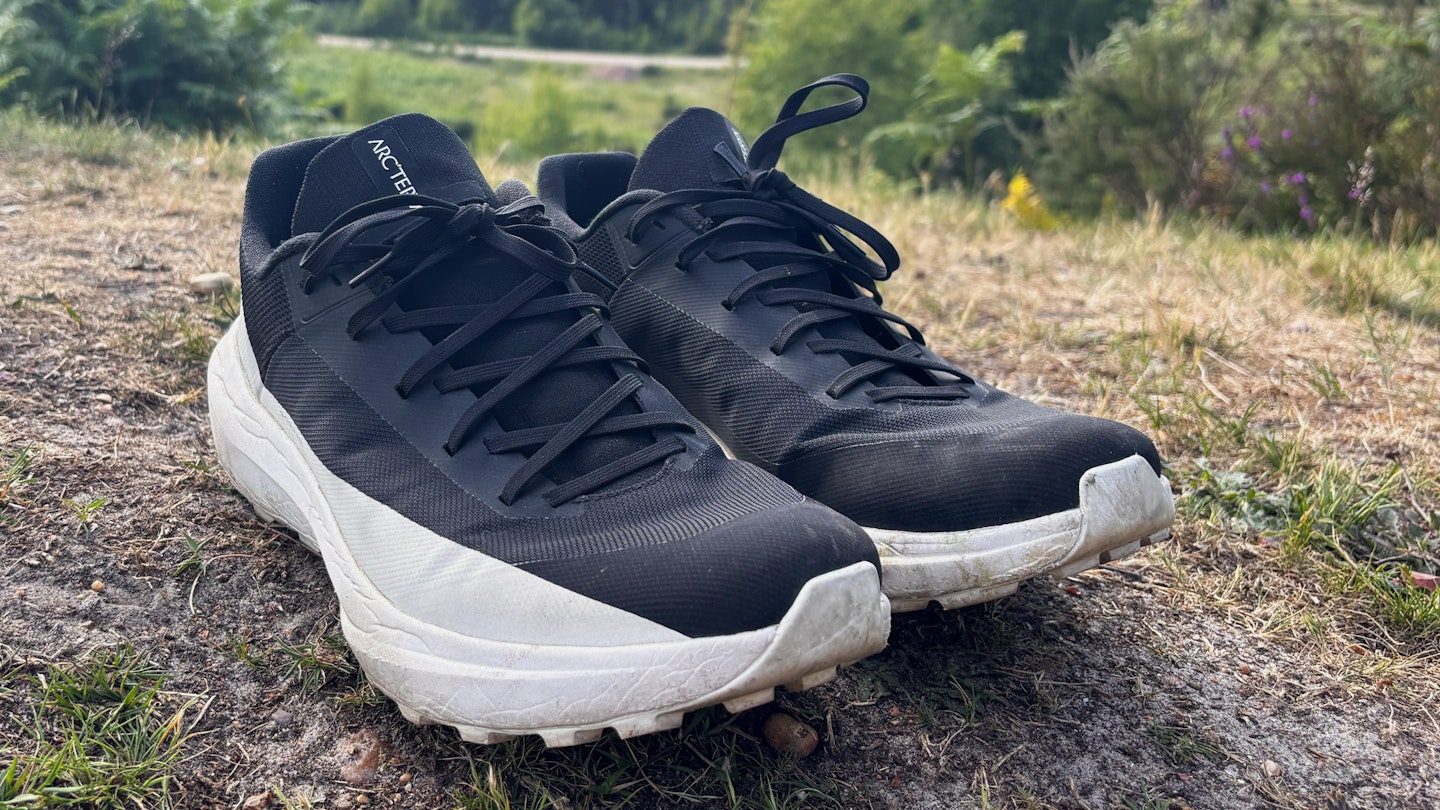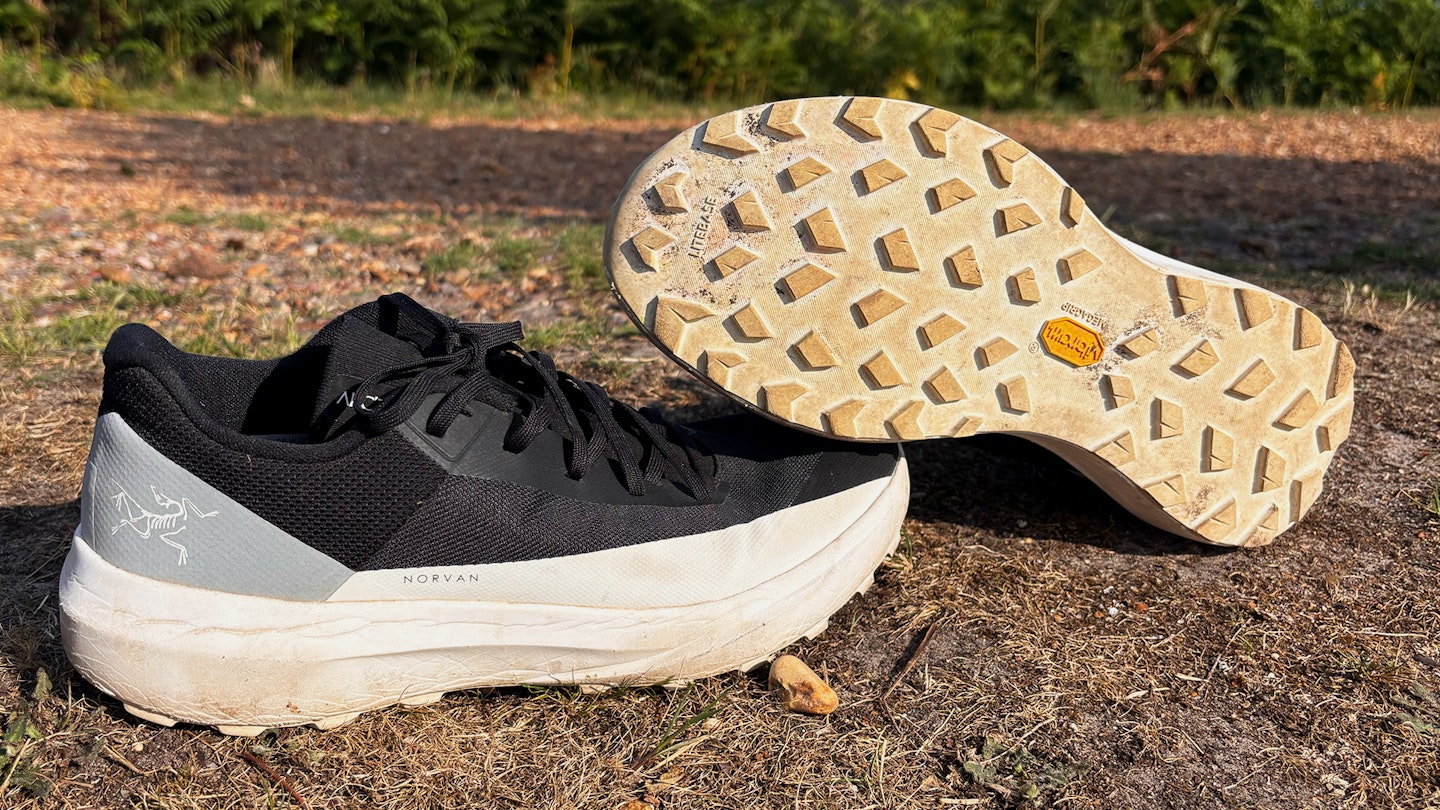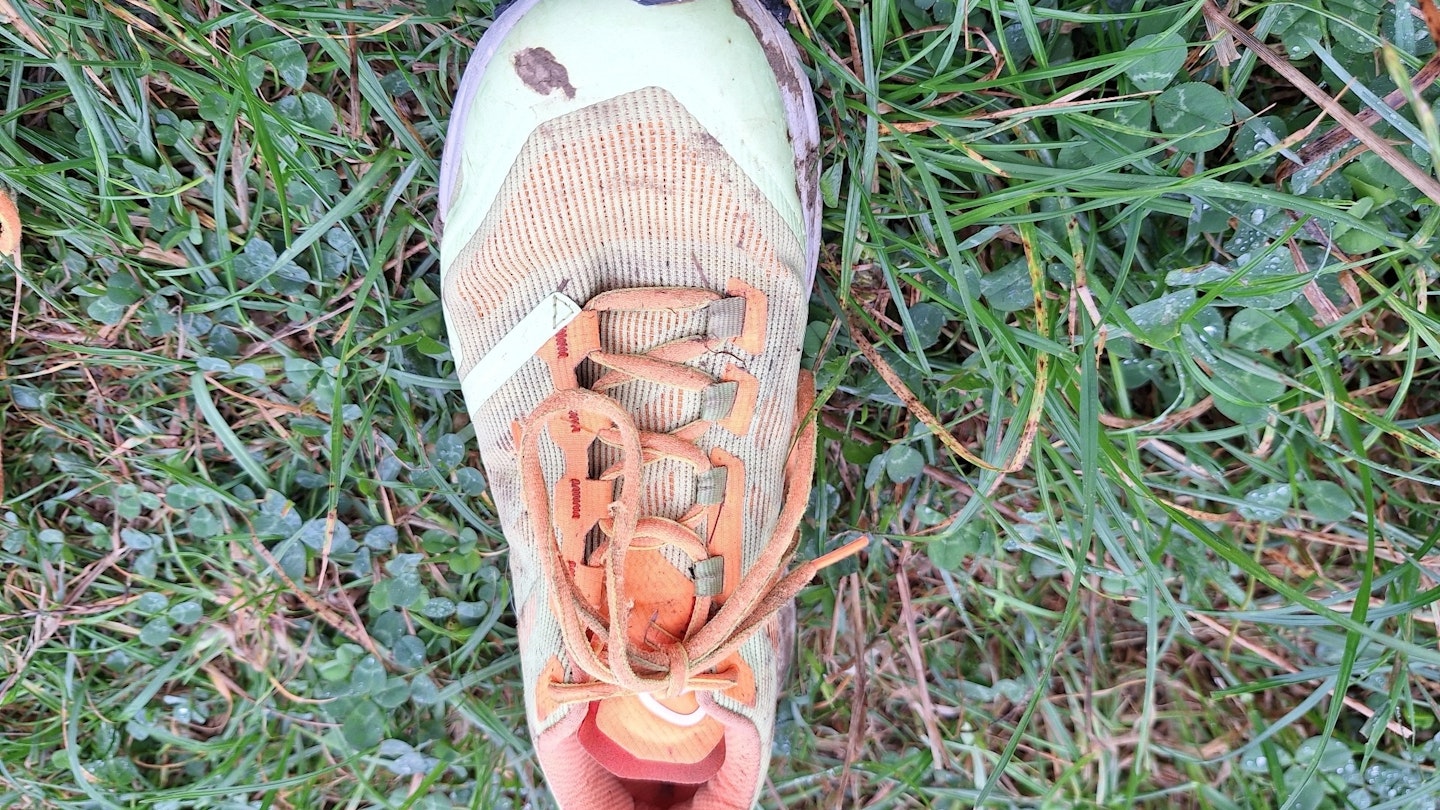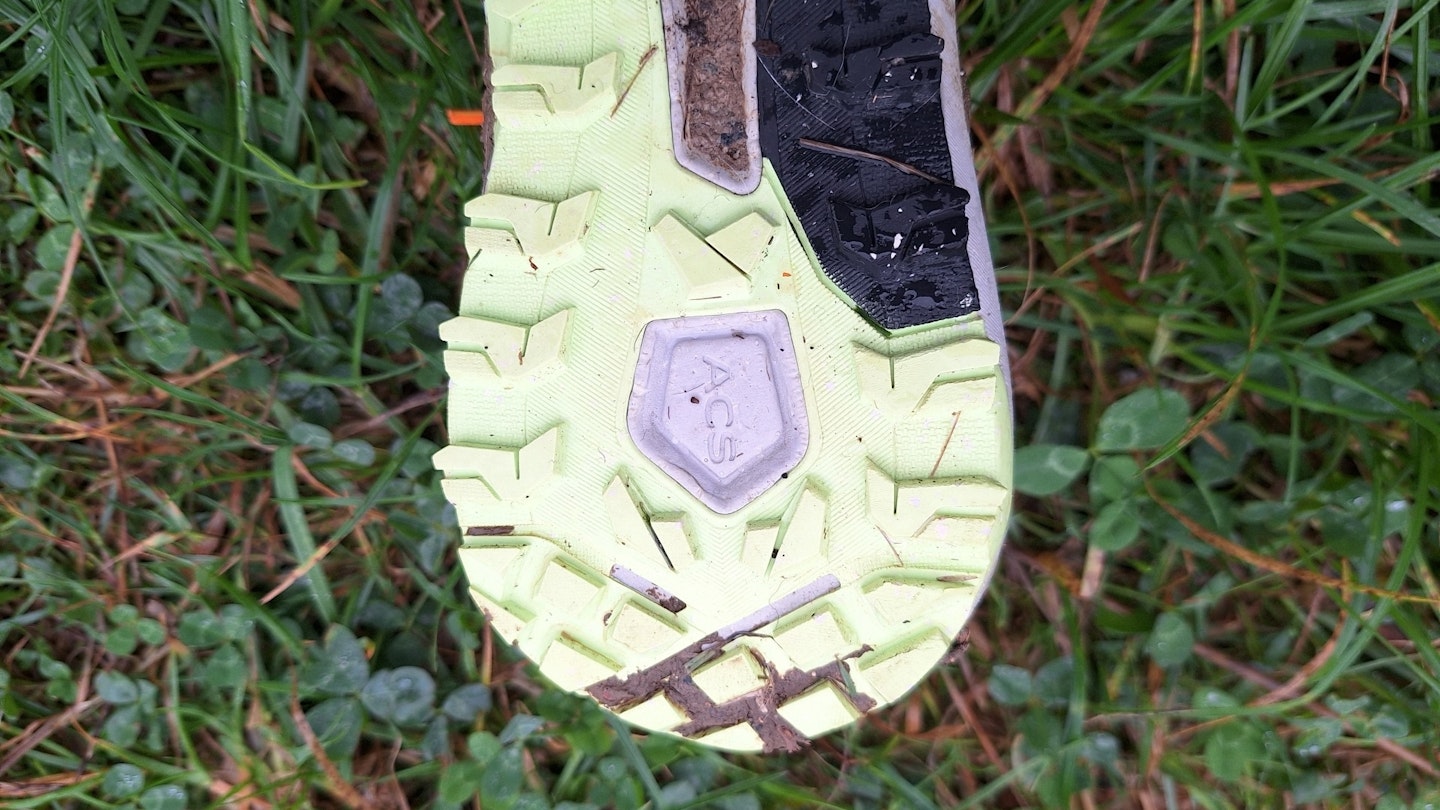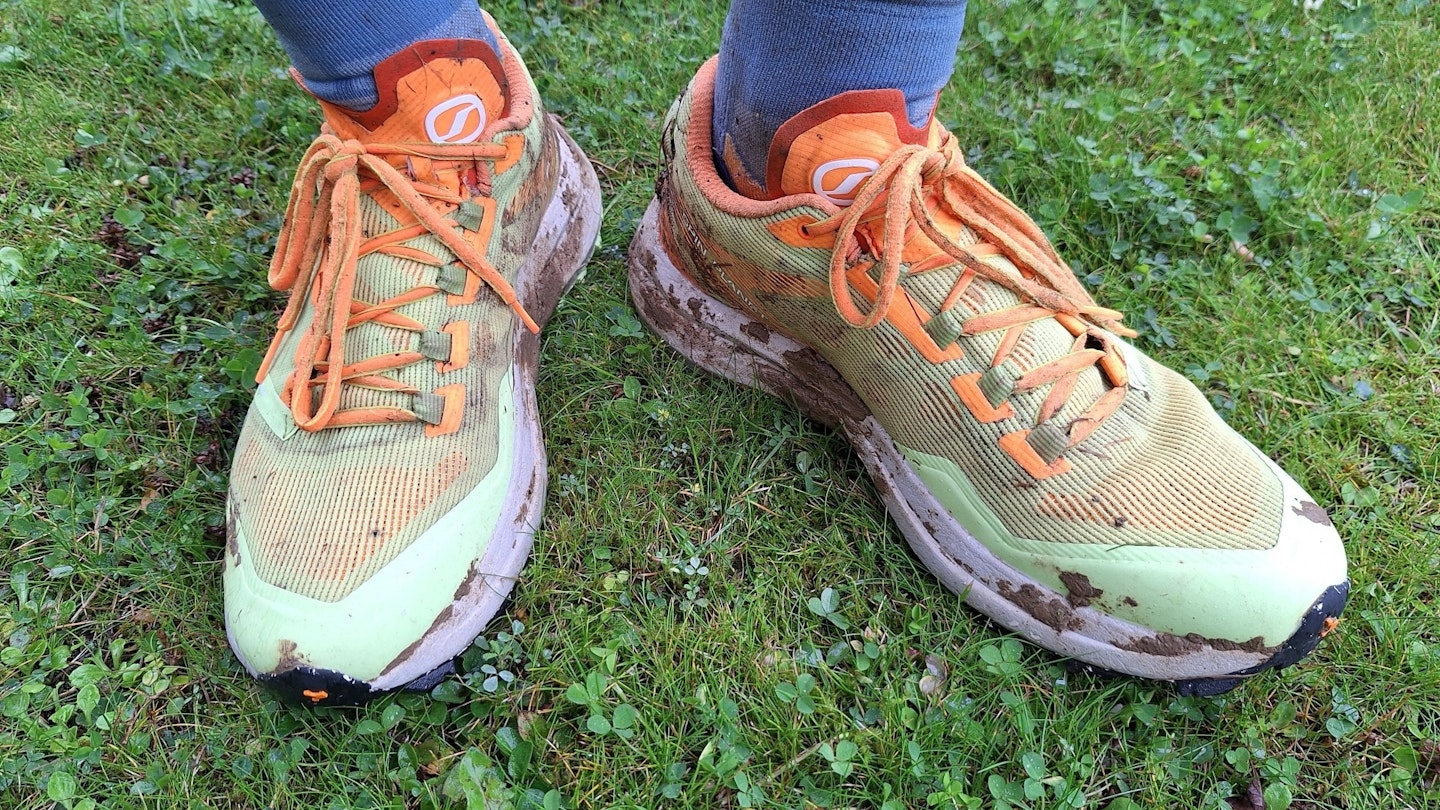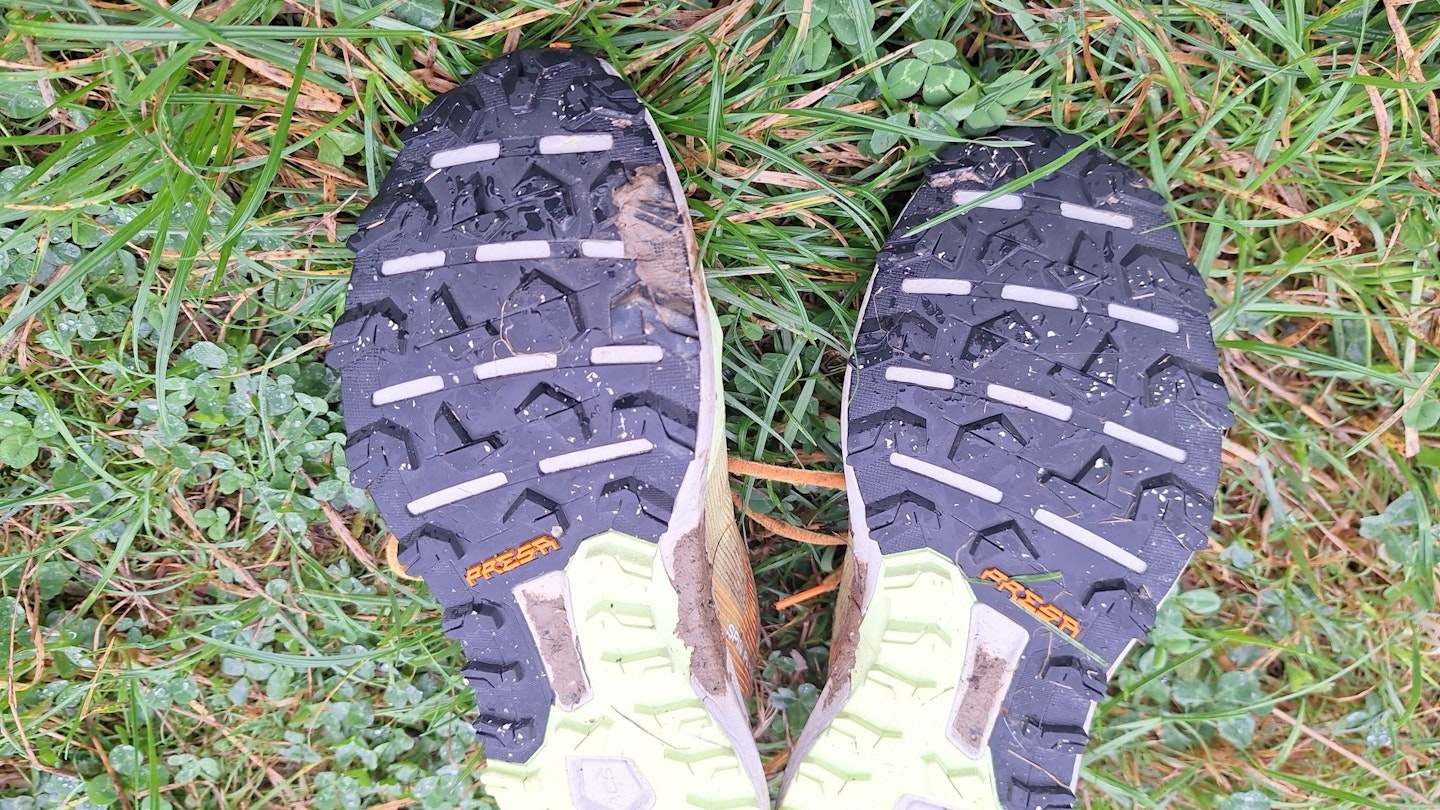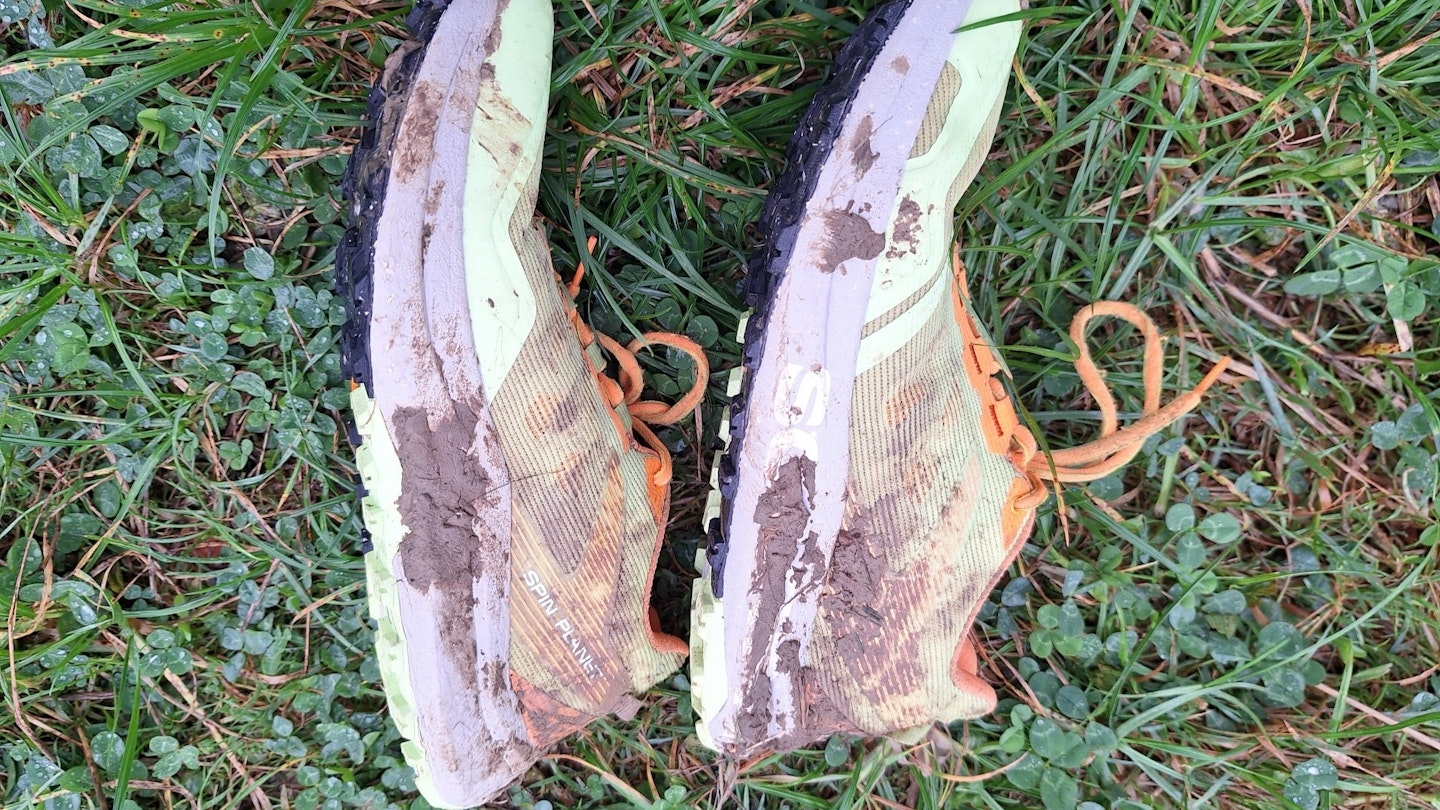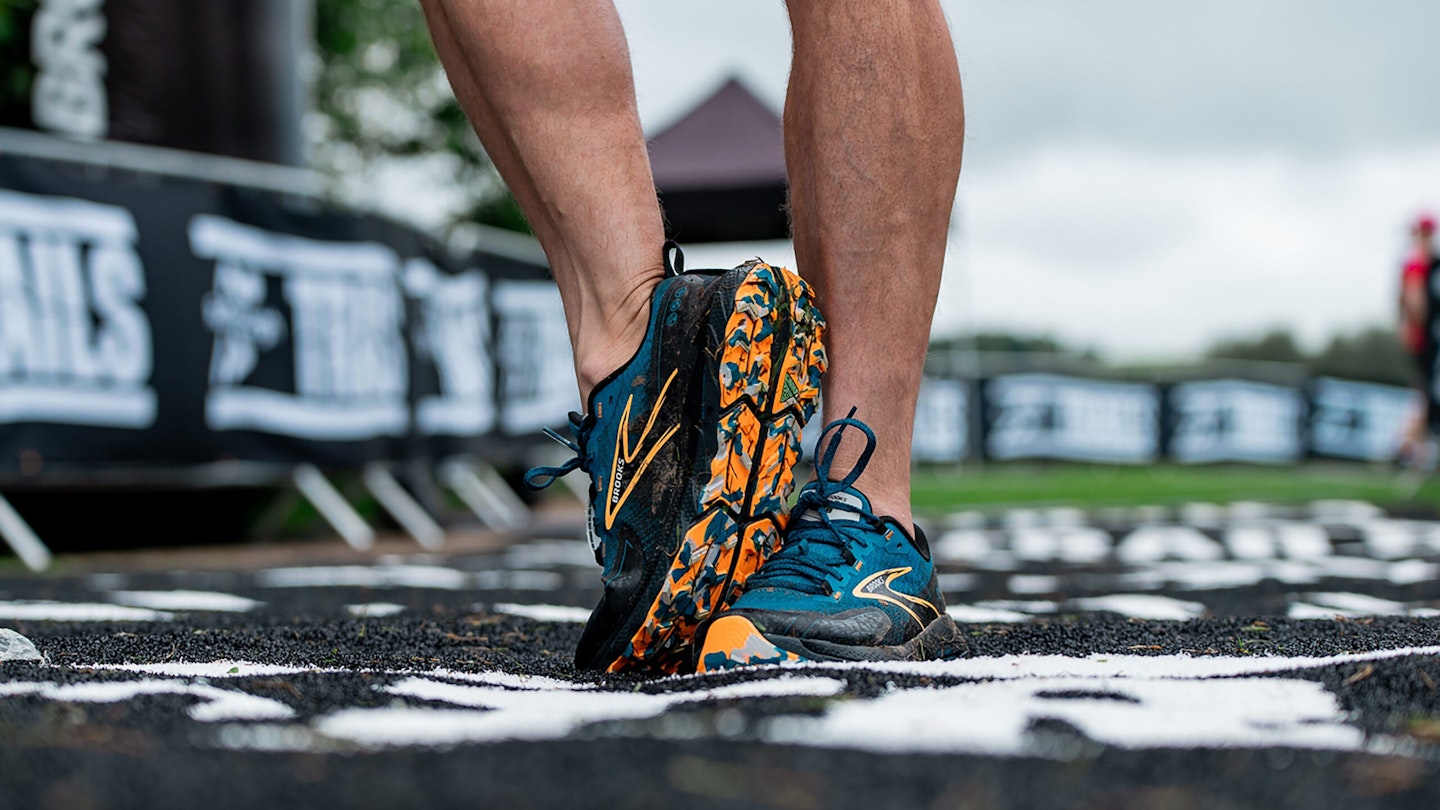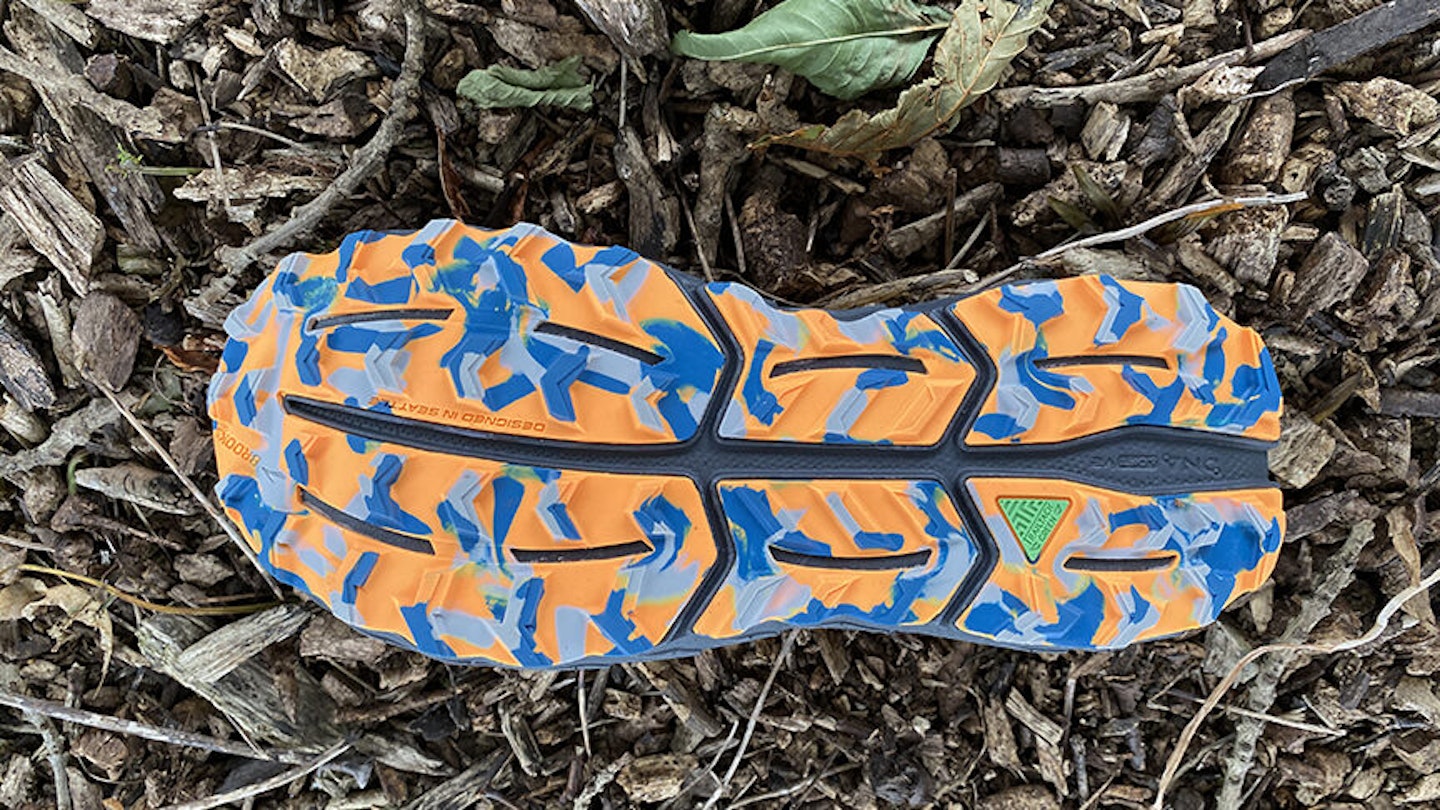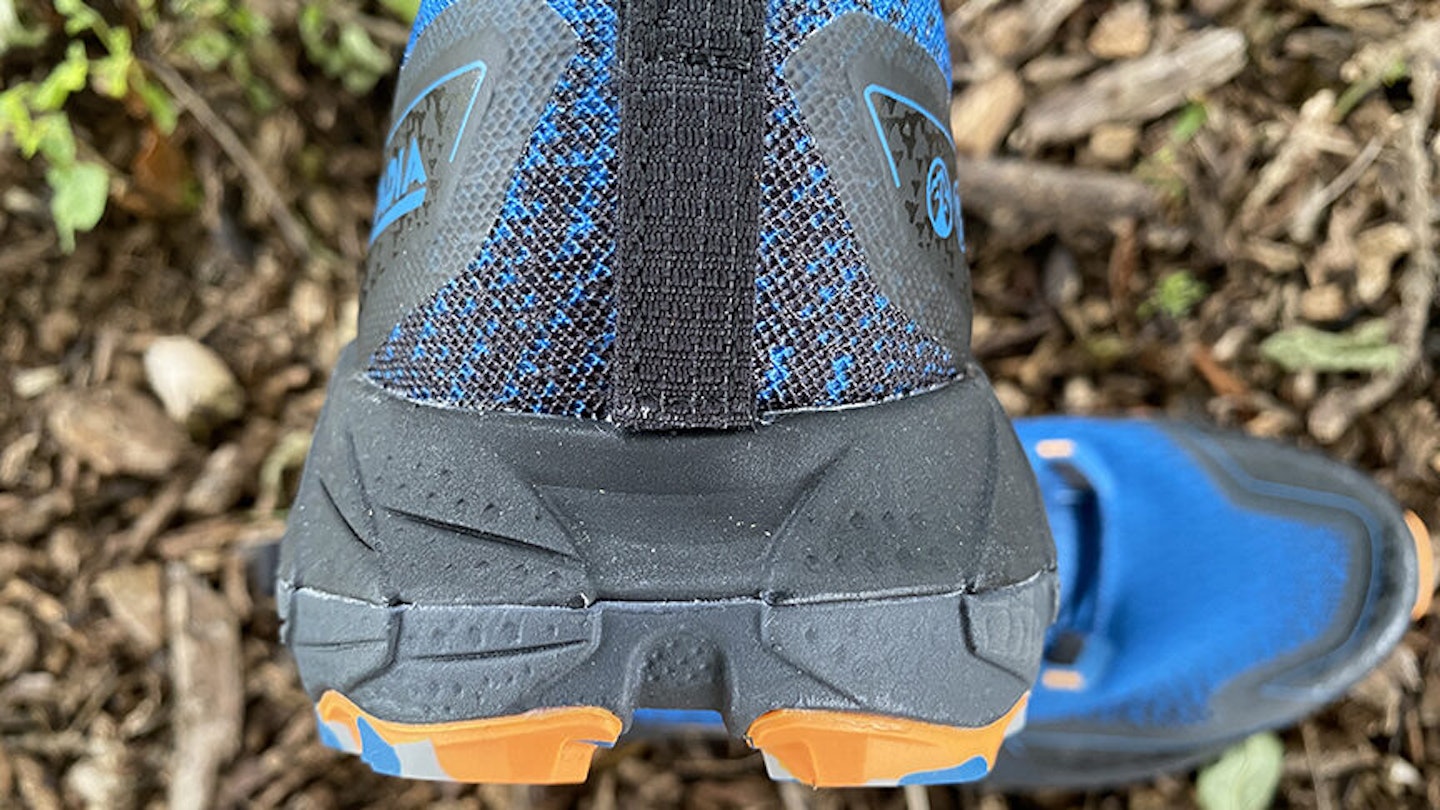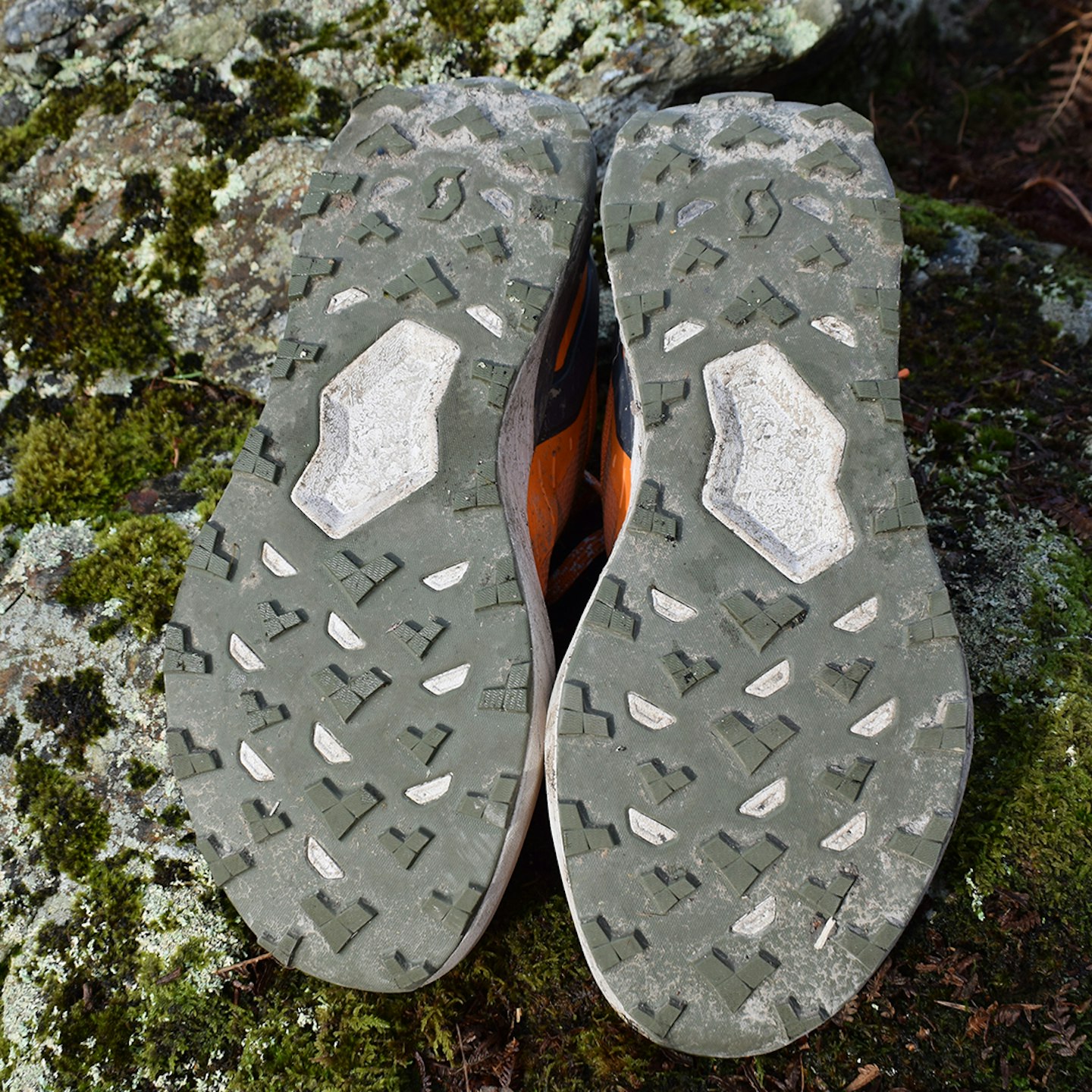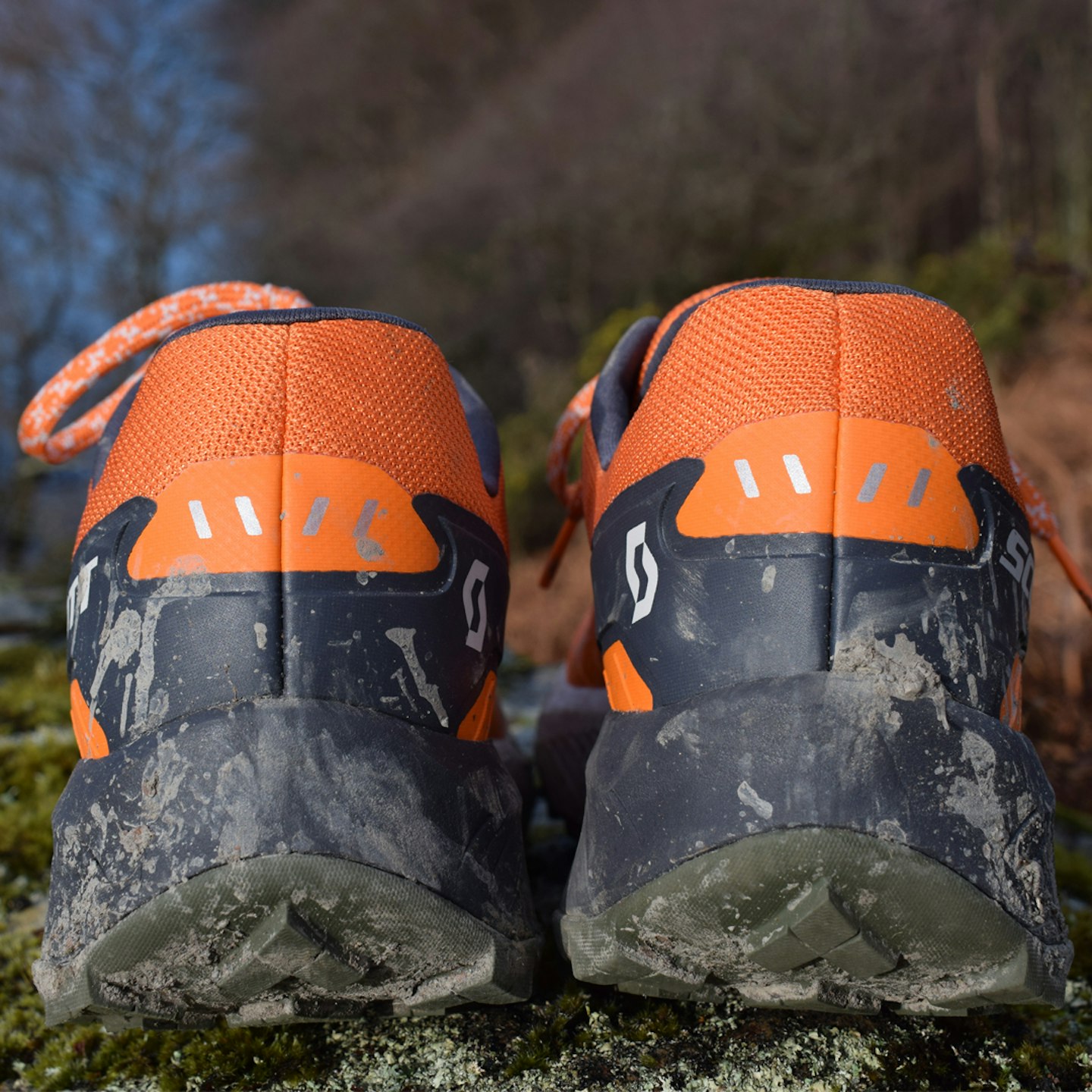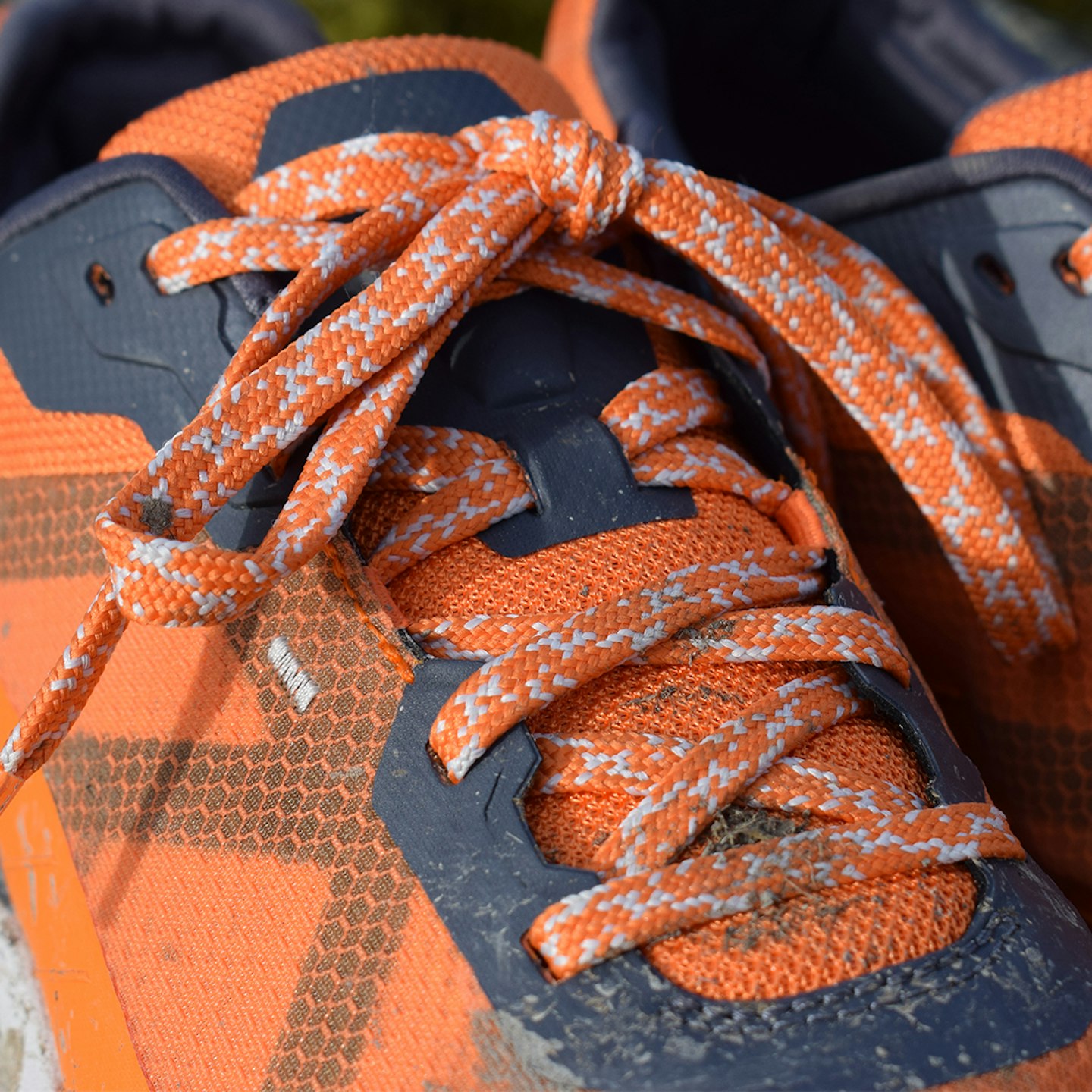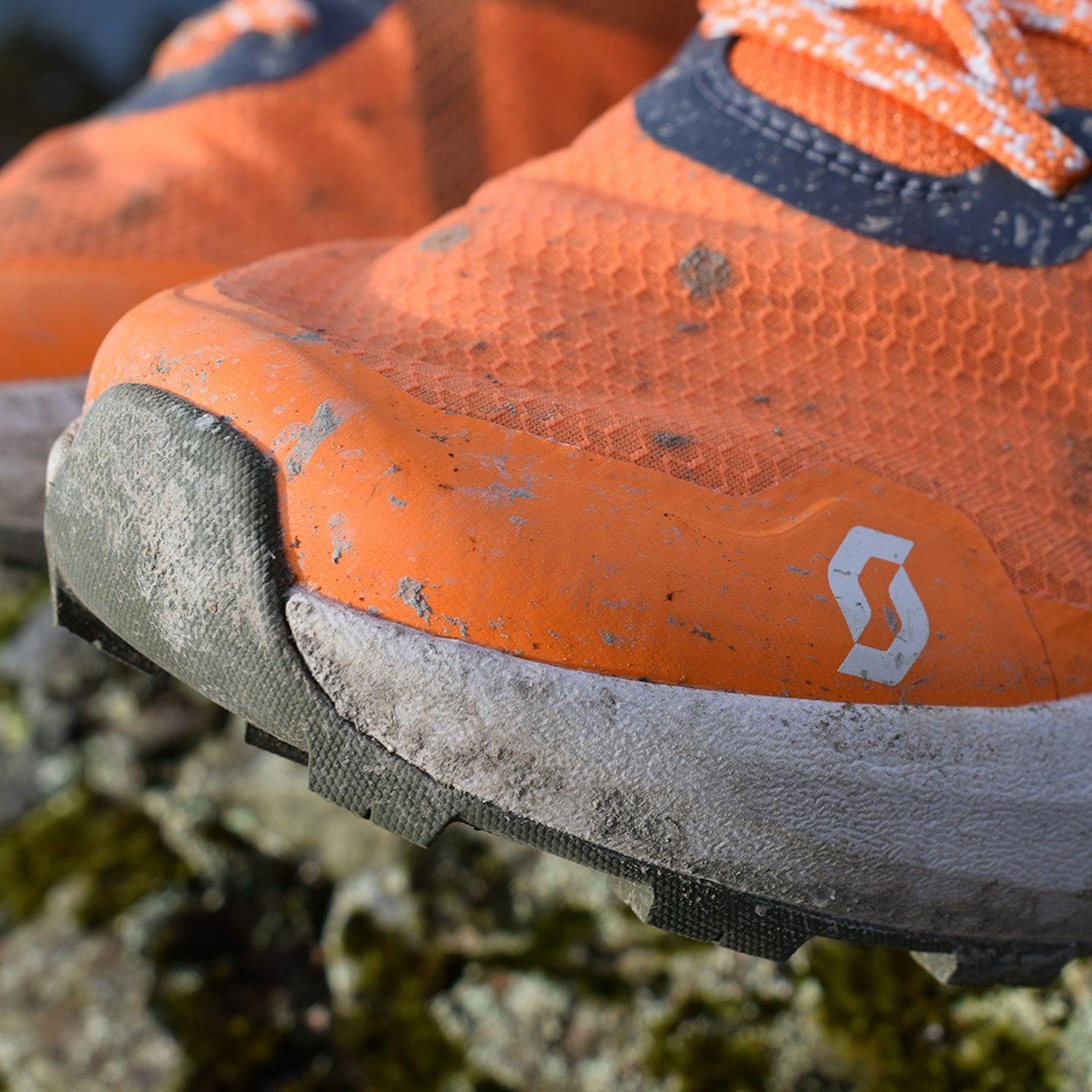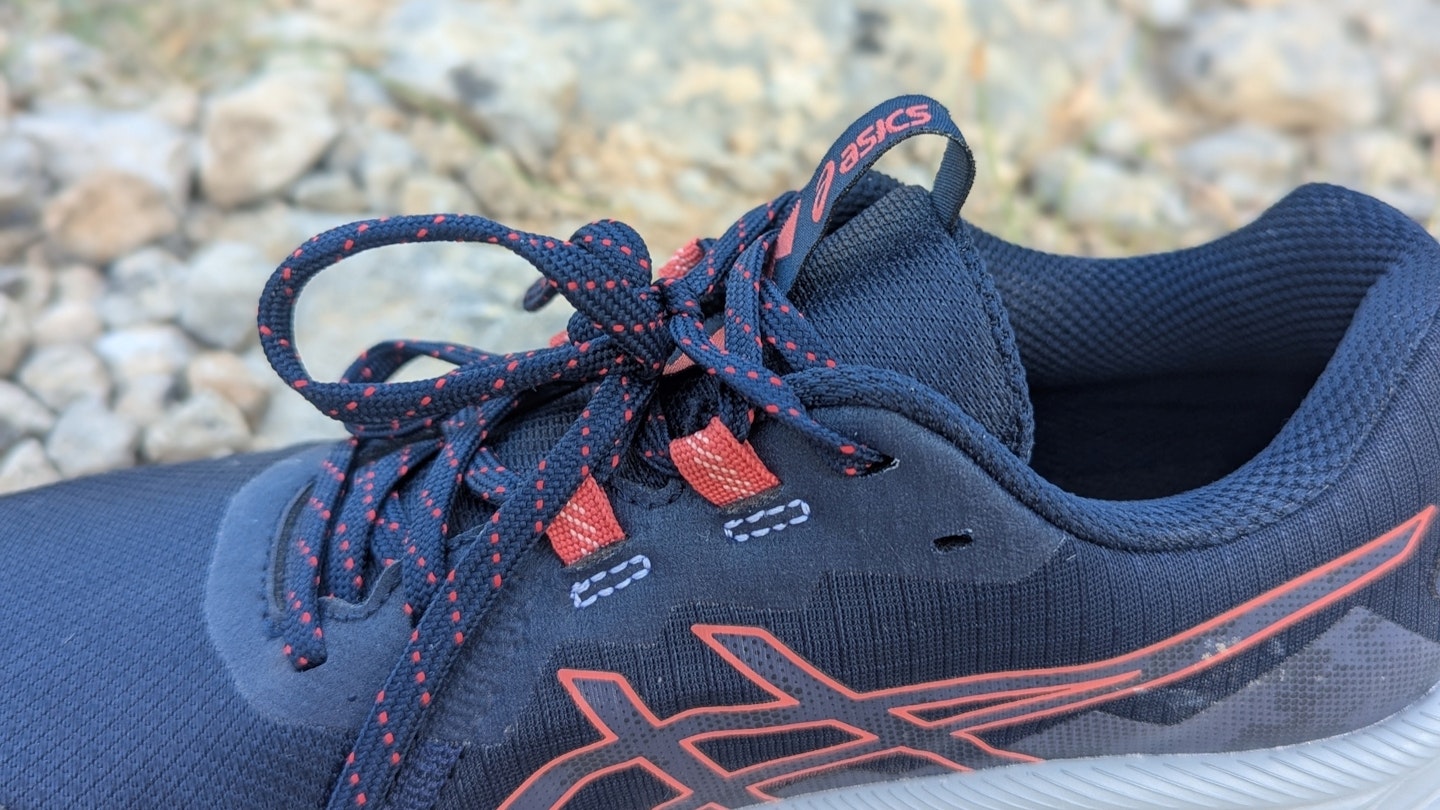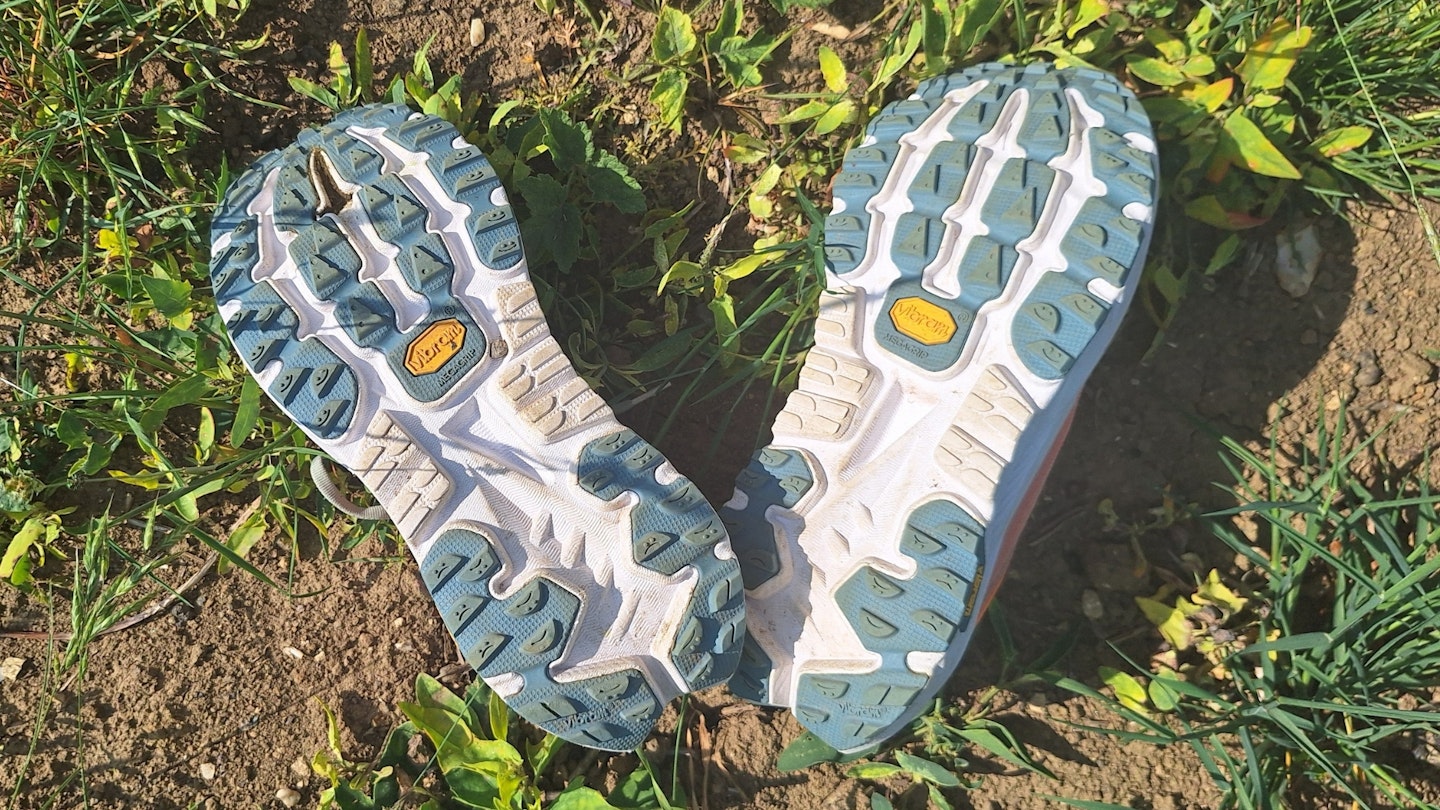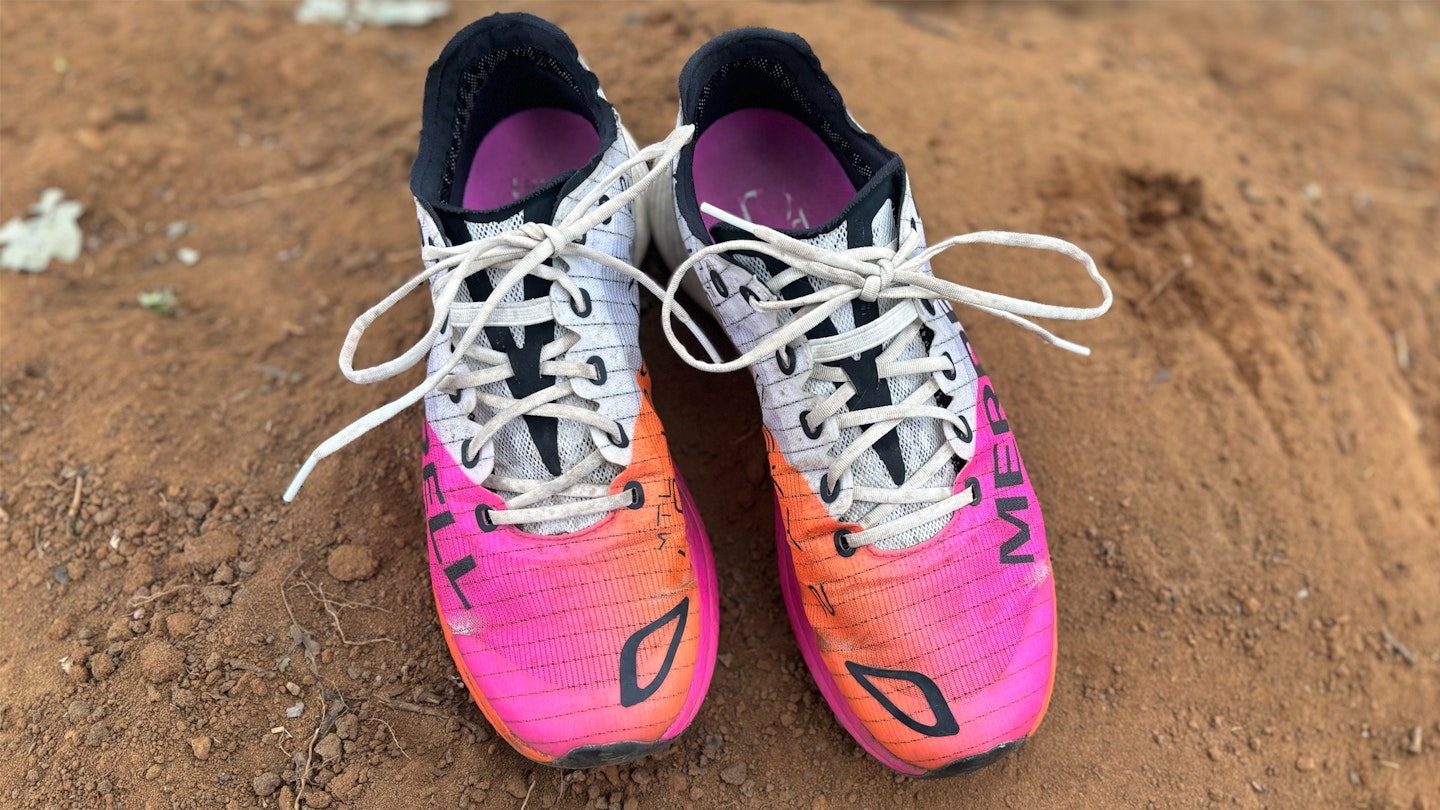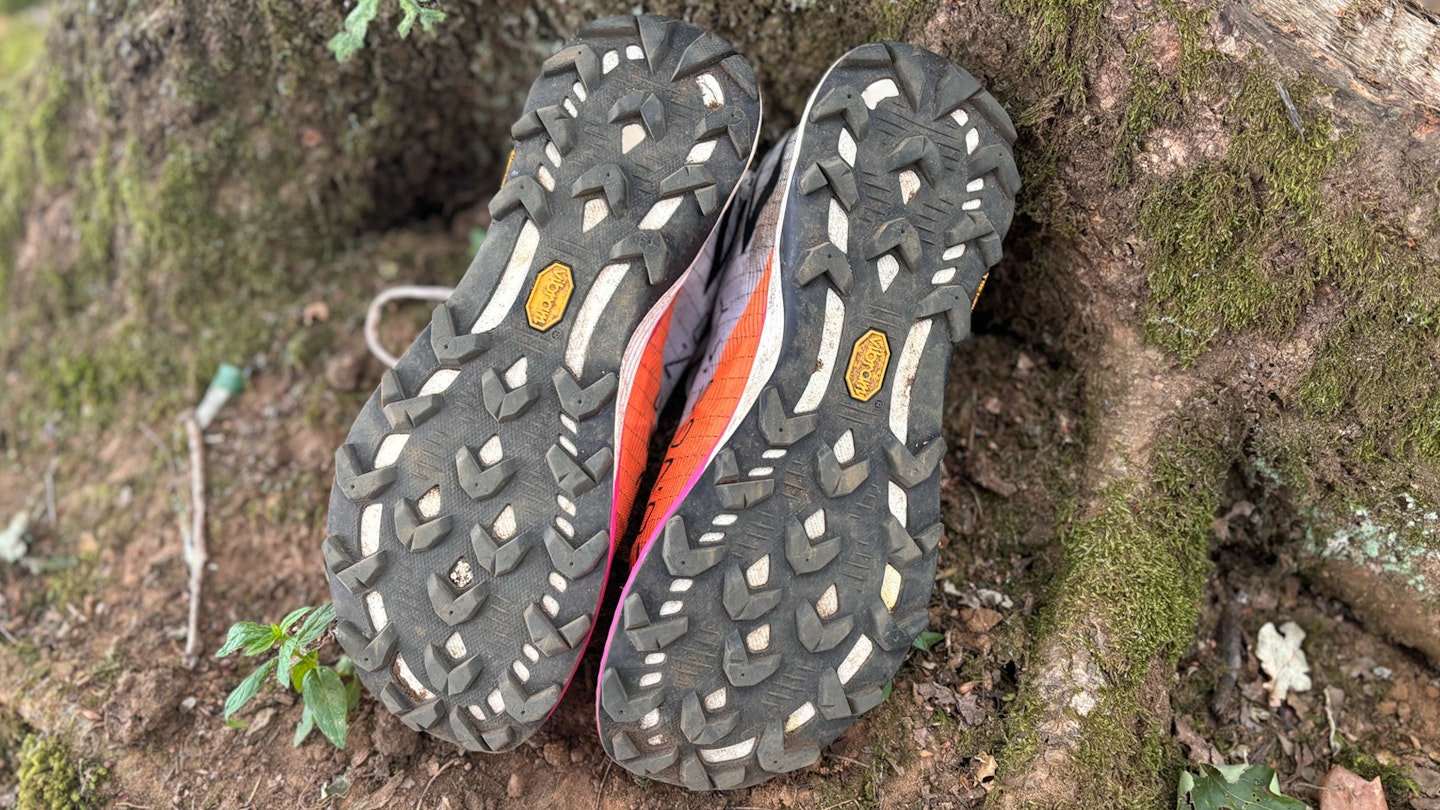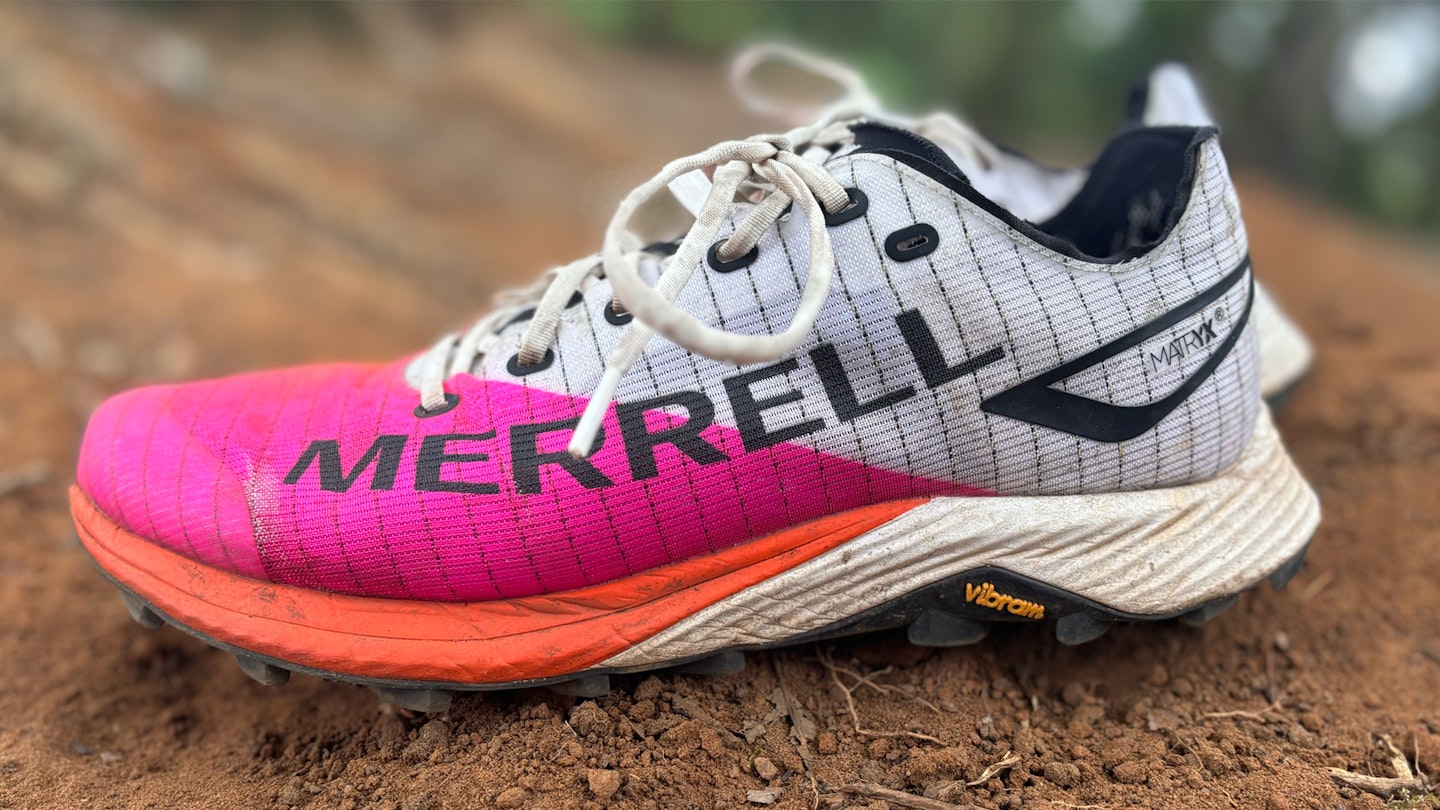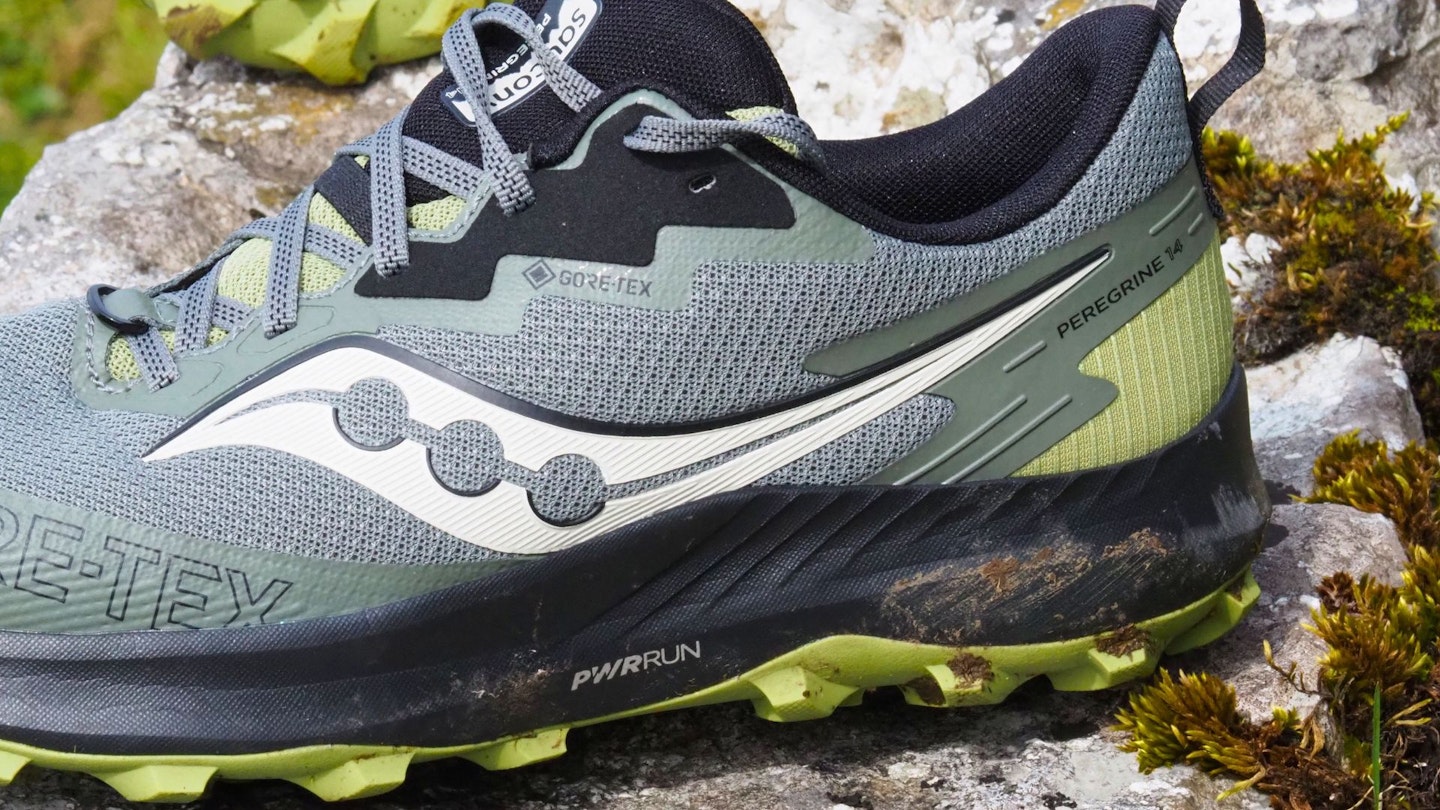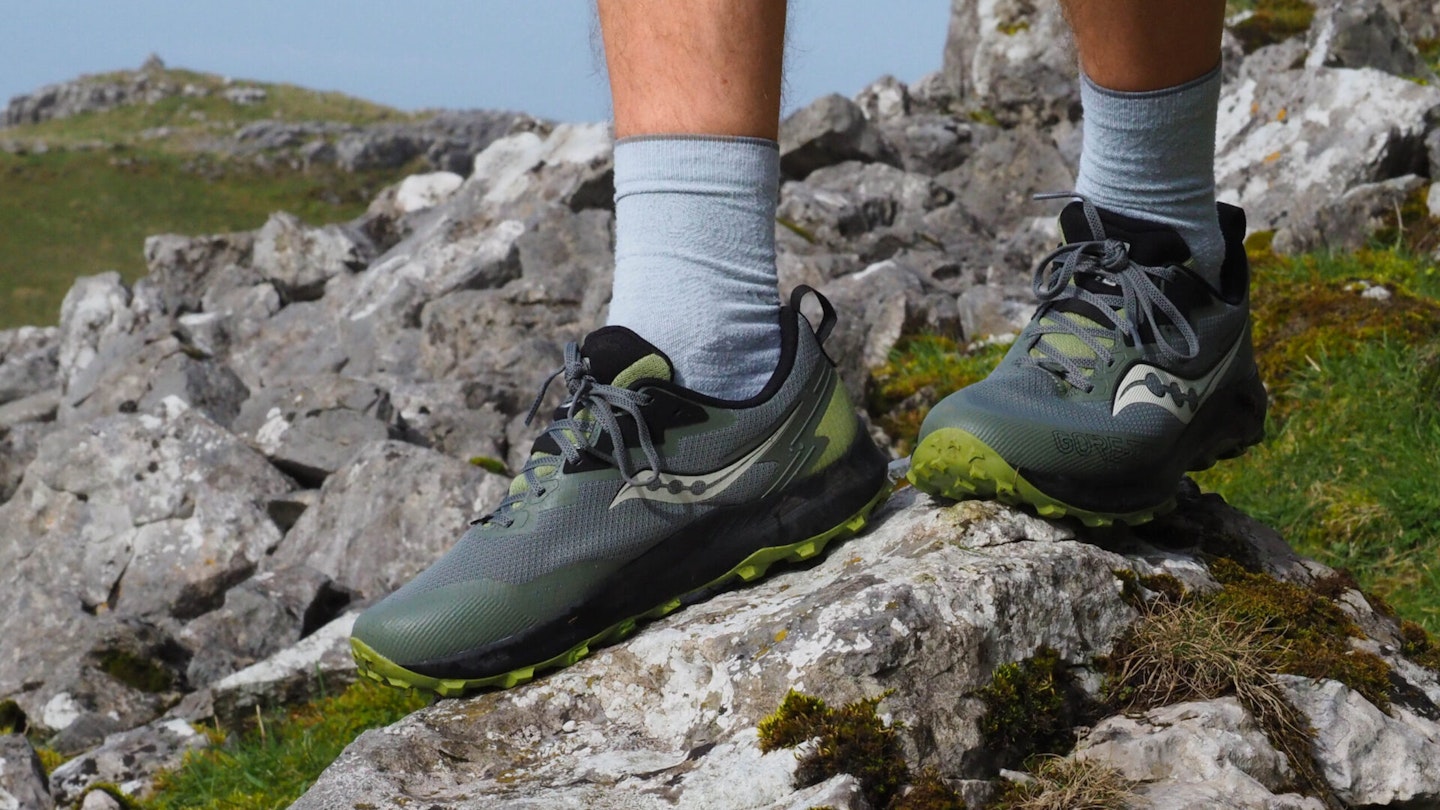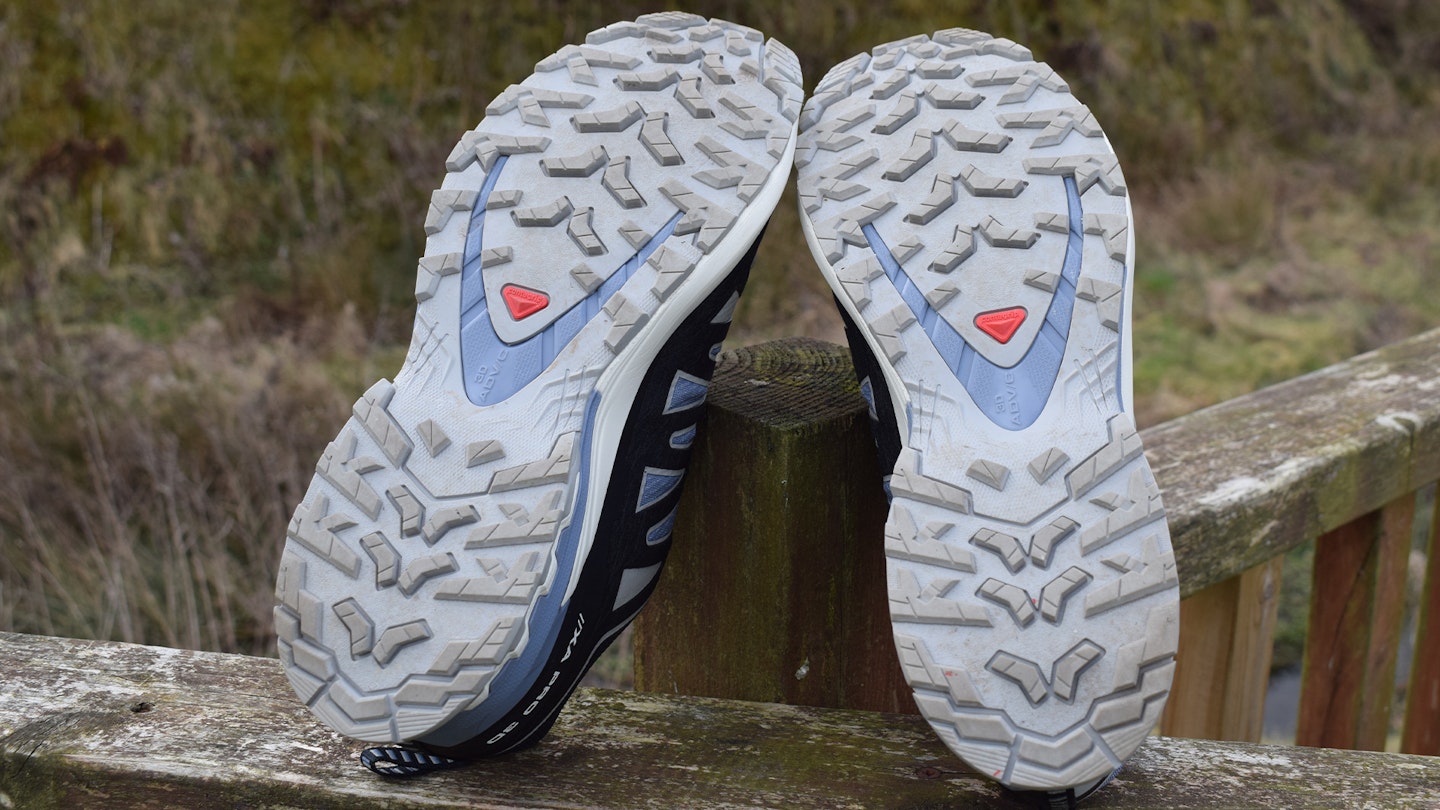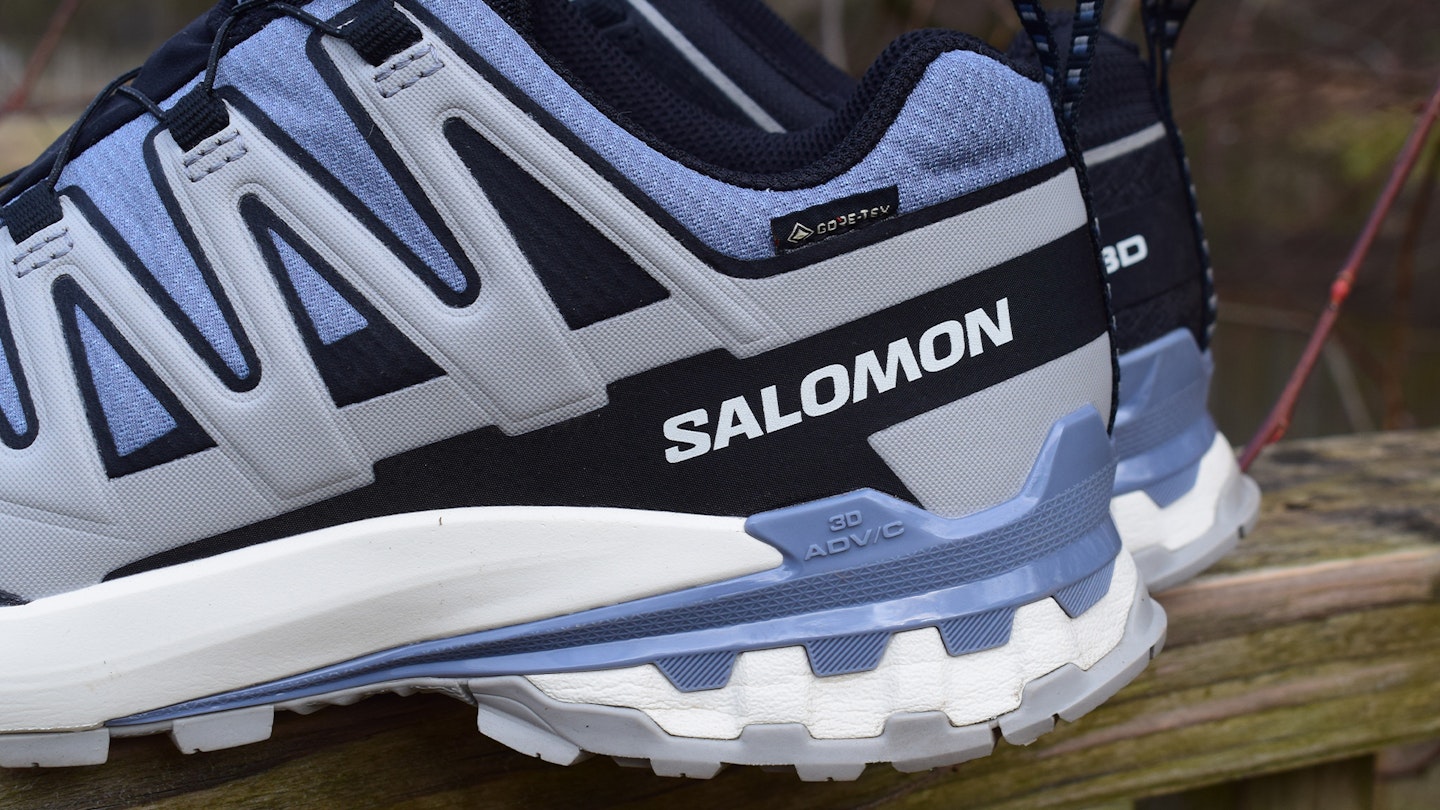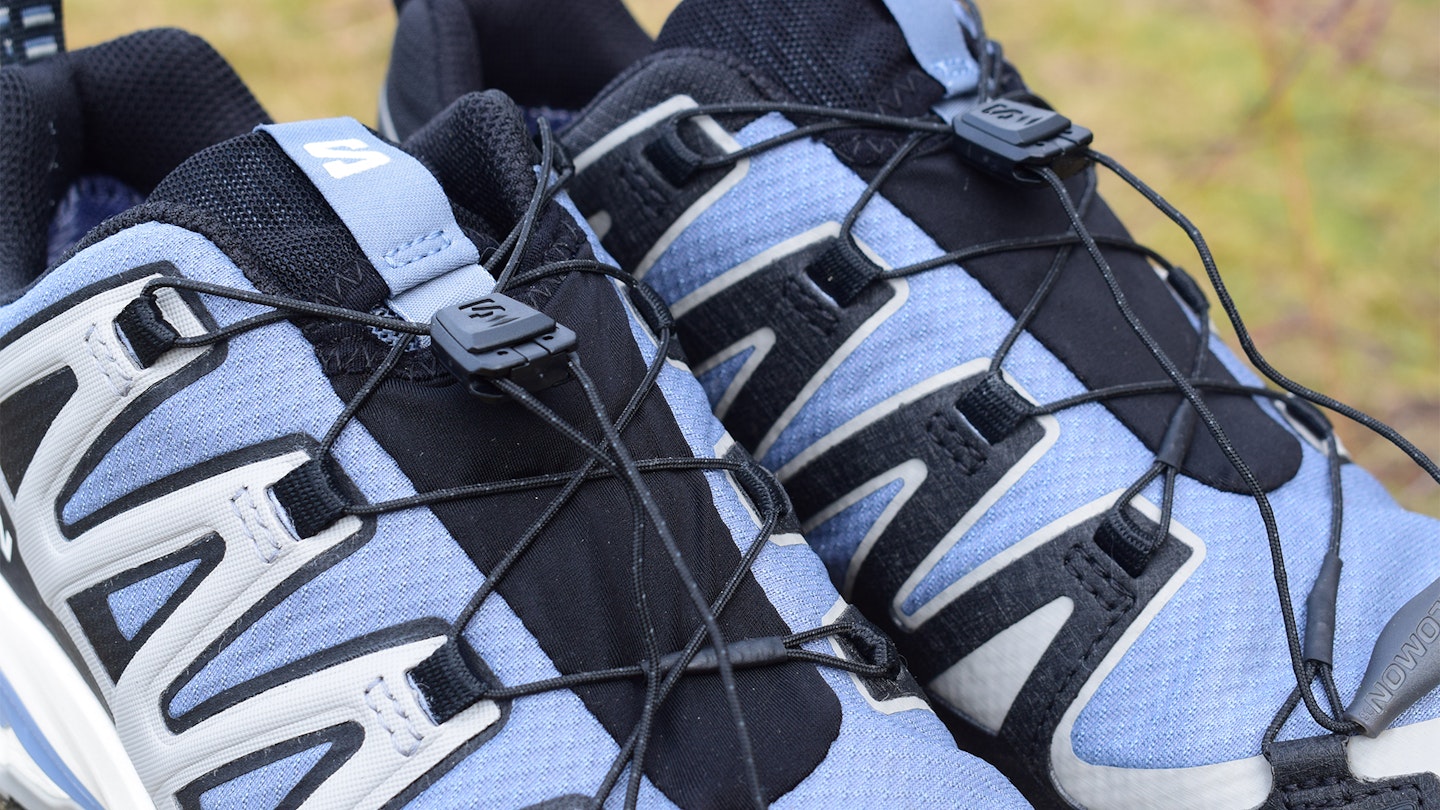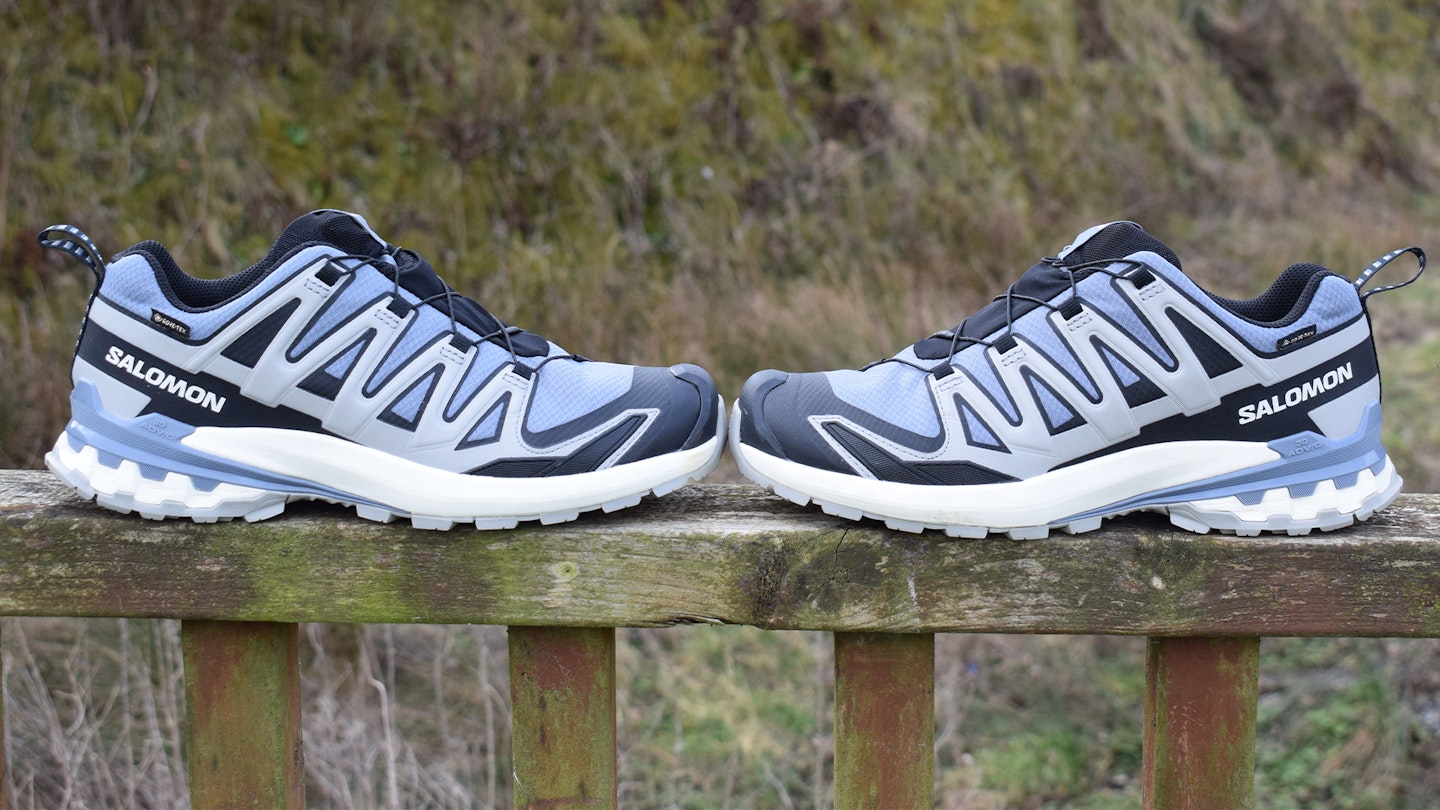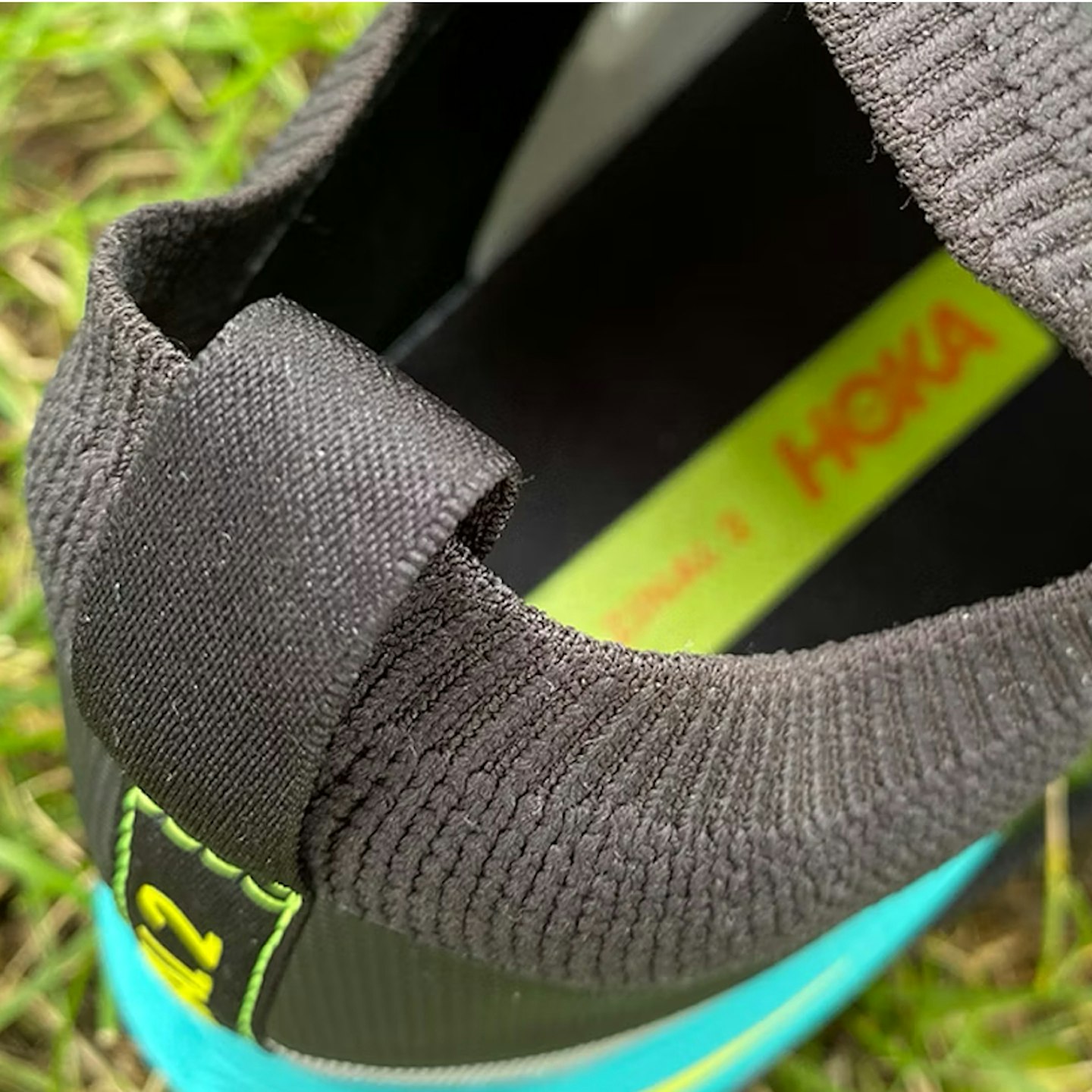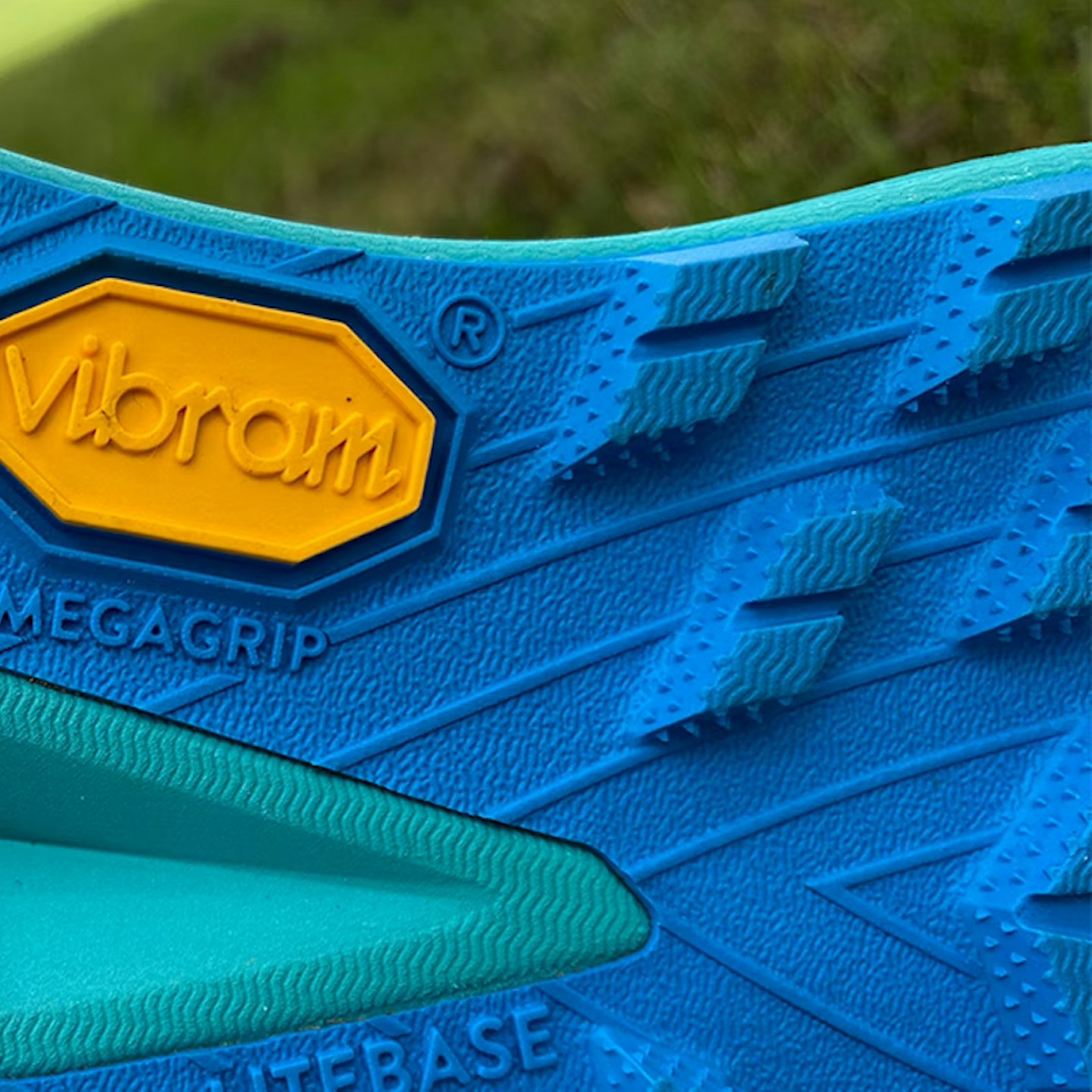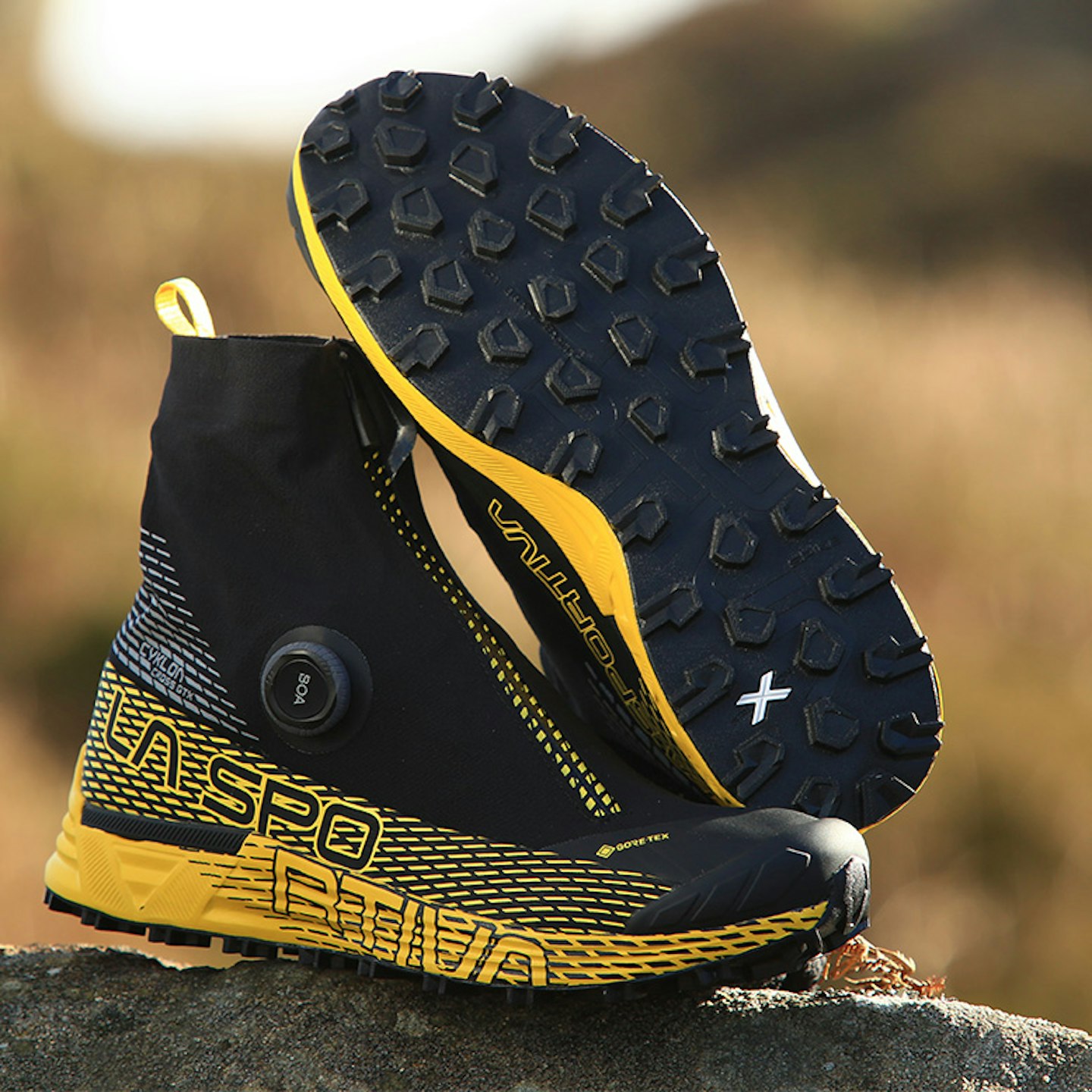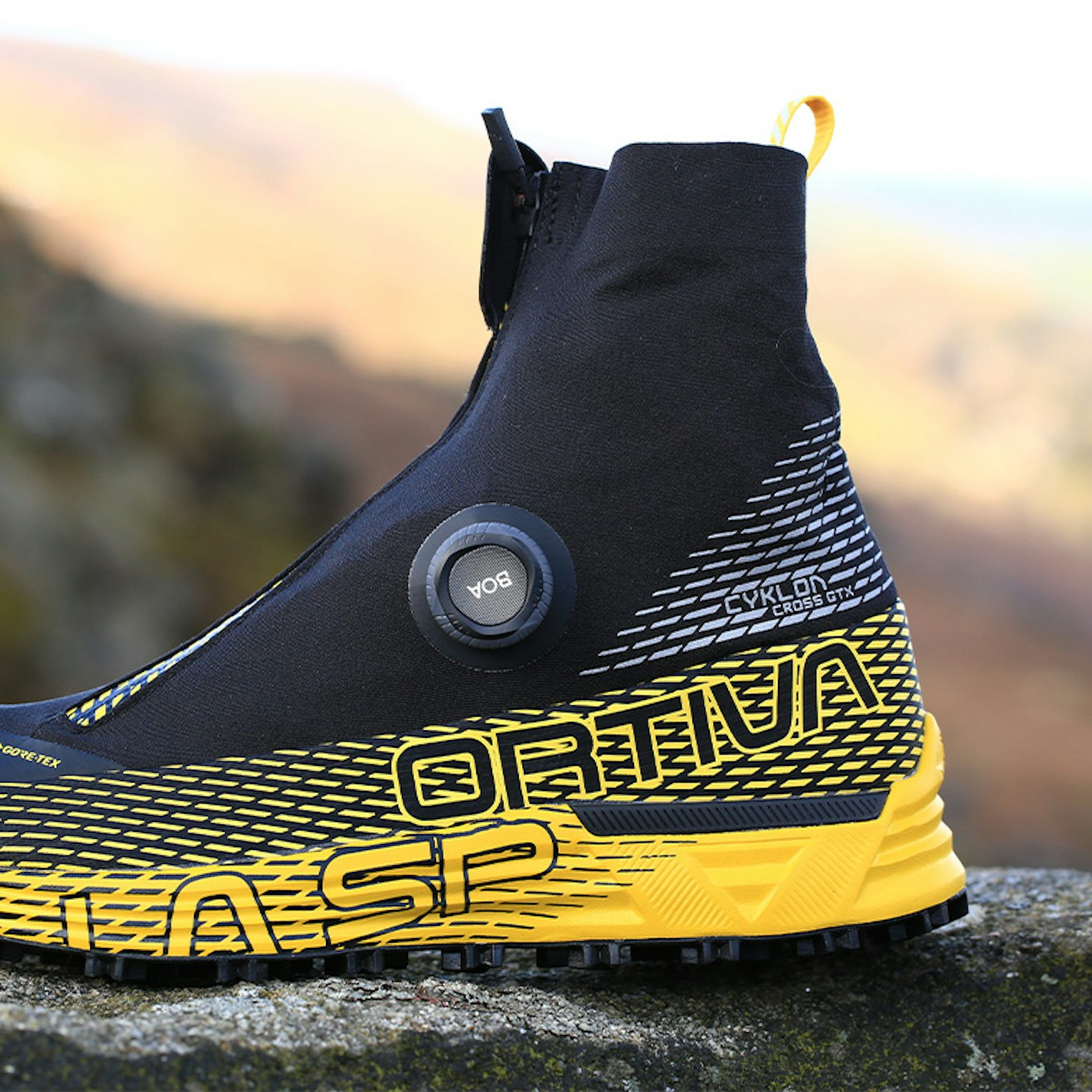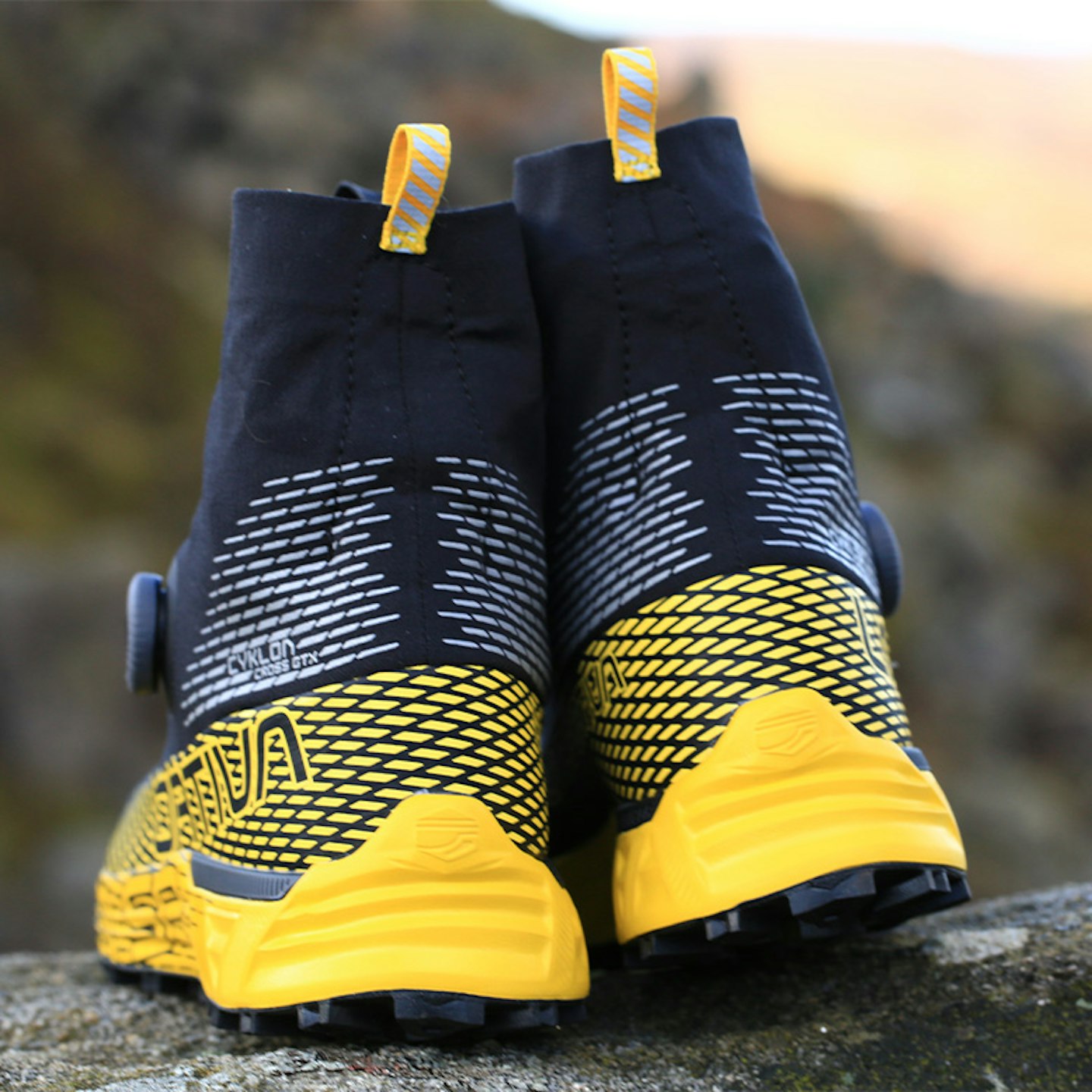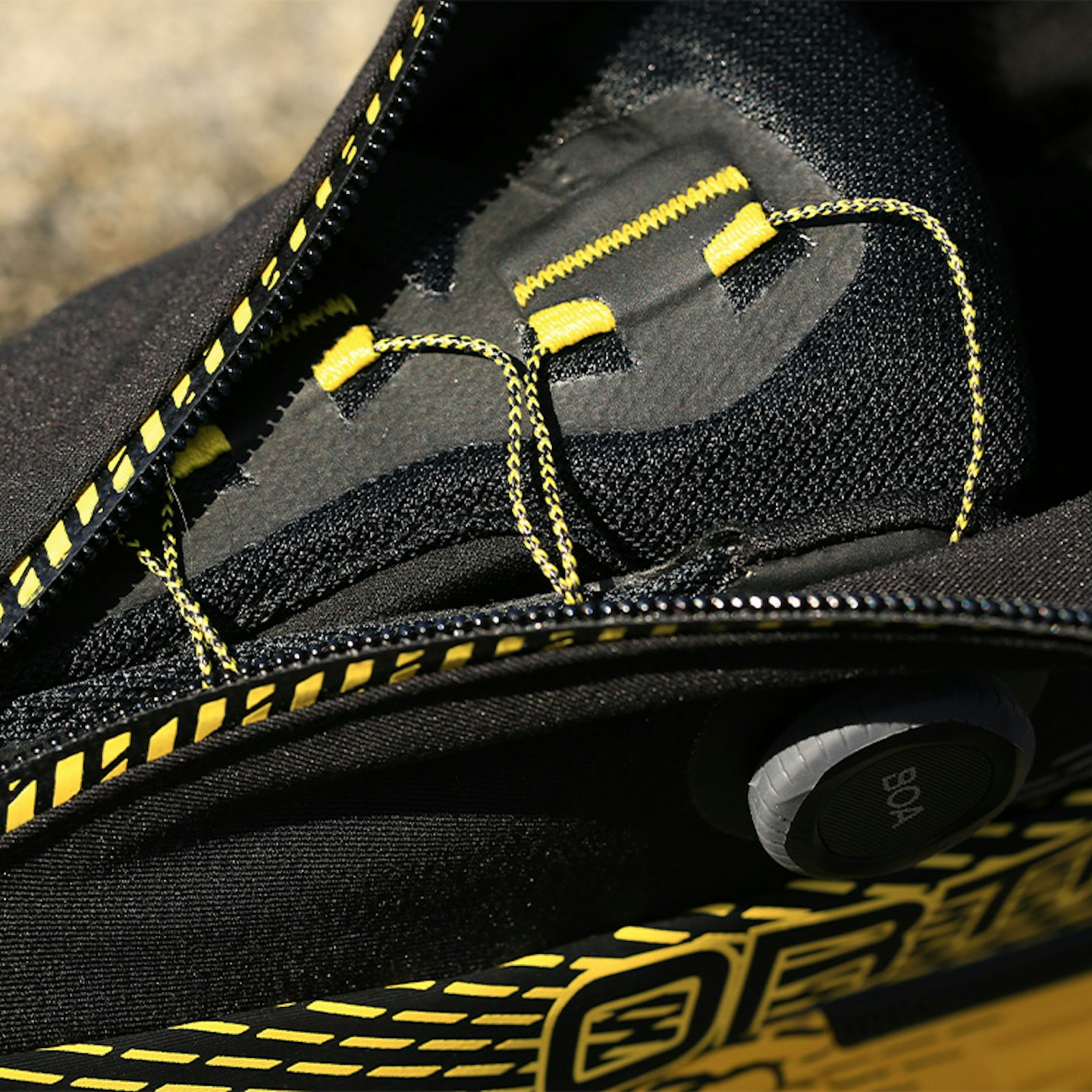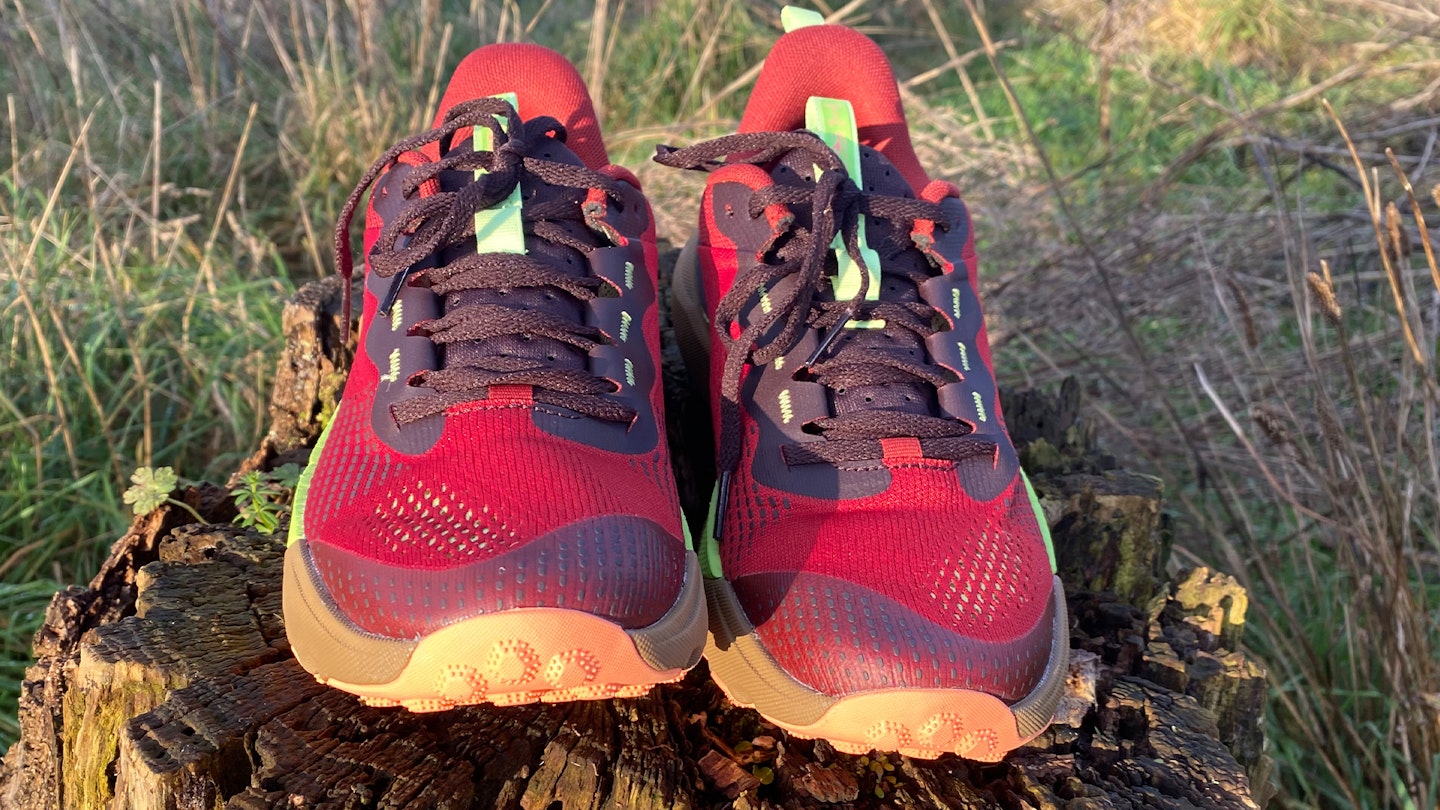No doubt you've heard by now that regular old road running is a bore, a chore, a monotonous grind that turns your kneecaps into ticking time bombs. Well, the rumours are true. Welcome to your new favourite hobby – let's talk about the best trail running shoes of 2025.
When you hit the trails, you'll need footwear that can stand up to rough and changing terrain. Not only does your shoe need to be durable and high-traction, but it's also got be cushioned and protective.
This is no easy feet – sorry – which is why we at LFTO test dozens of pairs per season. We even enlisted a women's running coach to test and review the 10 best women's trail running shoes, just to cover every base!
We also test so much because there are so many different approaches to the humble trail shoe. You might want a hardy, stiff, distance-ready ultra trail running shoe to carry you through an all-day training session.
Or (perhaps more likely) you're in search of a versatile road-to-trail running shoe that provides maximum comfort from pavements to park runs to the peak of Snowdon.
How we tested the best trail running shoes

The trail running gear we review always undergoes rigorous real-world testing, usually from Milo Wilson, LFTO's self-appointed running guru. The shoes in this roundup were also reviewed by Lily Canter, ultra woman and running coach, and James Forrest, the most prolific gear tester this side of the Mississippi.
As soon as a new trail shoe hits the scene, we allocate one of our expert gear testers and force them out of the office and into the hills.
We do occasionally destroy shoes in our testing, but these don't make the 'best of' list, naturally. Anything that appears in our roundups has survived some serious miles on a range of different terrains and distances.
We consider myriad factors when testing and reviewing trail running footwear, from the obvious, such as comfort and performance, to the less obvious and intricate, such as sustainability. Read more about how we test our trail running gear.
What are the best trail running shoes of 2025?

Best overall trail running shoe: Arc'teryx Norvan LD4
Best women's trail running shoe: Scarpa Spin Infinity (50% off!)
Best road-to-trail running shoe: Scott Kinabalu 3
Best ultra trail running shoe: Hoka Mafate X
Remember to account for your own personal running gait, foot size, and comfort level preference when choosing the best trail running shoe for your needs.
We've reviewed some excellent lightweight running shoes but if you're a runner who needs that bit more support and cushioning in a shoe, then consider a chunky option. Plus, it never hurts to peruse our roundup of waterproof trail running shoes.
Equally, if you prefer to have a good level of ground feel as you run, then we'd recommend you lean more towards minimalist trail running shoes than ones with a high stack and drop.
If all this sounds like jargon to you, why not take a look at our guide on how to choose trail running shoes to better understand the best style of shoe for your feet.
Editor's note: This is one of our most regularly updated articles, with new releases and new releases added all through the year. It was last updated 8th August 2025. Keep checking back for reviews of the best trail running shoes.
The best overall trail running shoes:
If there’s one shoe we’d happily use for every kind of trail run, the Arc’teryx Norvan LD 4 is it. This low-profile, stable, and impressively versatile shoe was the clear standout in our group test.
Across hot, dry conditions in the Surrey Hills (and some Spanish mountains!), the LD 4 felt confident and composed on everything from loose woodland paths to technical chalky climbs and even the odd bit of tarmac – god forbid.
The dual-density EVA midsole delivers a firm, stable ride that keeps you close to the trail, while still providing enough cushioning for long distances. We found it less plush than some competitors like the Hoka Speedgoat 6, but way more responsive and durable. After over 100 miles of testing, the foam still held up brilliantly.
The upper feels precision-engineered, with a modular mix of breathable mesh and tough TPU overlays. We especially liked the locked-in heel and protective toe bumper, though the laces have a tendency to slip loose if not double-knotted.
On the outsole, Vibram LightBase rubber keeps weight down while still delivering dependable grip on dry trails. Just don’t expect much bite in steep, muddy descents.
At £150, it’s not cheap – but if you want one trail shoe to handle almost everything, from road-adjacent loops to long-distance summer racing, the Norvan LD 4 is an exceptional option. We've also heard good things about the GTX version if you want water protection.
Read our Arc'teryx Norvan LD4 review or find the women's version here
Pros
- Great versatility between terrains
- Highly durable midsole and outsole
- Comfortable and locked-in upper
Cons
- Laces can slip and loosen
- Less cushioning than other options
| RRP: | £150 / $170 |
| Weight (per men's UK9): | 263g / 9.28 oz |
| Men's sizes (UK): | 6-13 |
| Women's sizes (UK): | 5-10 |
| Materials: | Upper: PFAS‑free polyester mesh with TPU overlays, Midsole: dual‑density EVA foam, Outsole: Vibram Megagrip LiteBase |
| Stack height: | 25 mm heel / 19 mm forefoot |
| Drop: | 6mm |
| Waterproof version? | Yes, GTX |
When you've tested as many shoes as our reviewer Lily Canter – ultra runner, professional coach, and seasoned LFTO contributor – it takes something special to claim her top spot. Out of the dozens of shoes she's put through their paces, the Scarpa Spin Planet stands out as the best overall women's trail running shoe this year.
The Spin Planet combines serious ultra-distance comfort with standout eco credentials. The 100% recycled EXO upper is impressively durable, breathable even in summer heat, and offers structured lateral support without feeling overly restrictive. It drains water almost instantly – during a torrential 10km race, Lily never once felt that telltale squelch – though its fluffy laces do tend to collect grass seeds and debris.
Underfoot, Scarpa's two-layer EVA midsole (45% recycled) delivers a firm yet forgiving ride that holds up mile after mile. Cushioning is substantial without going full maximalist, and the 4mm drop keeps you feeling stable on varied terrain. The slightly narrow toe box may be a dealbreaker for wide-footed runners, but for most, the fit will feel dialled in.
The Presa outsole's 4.5mm lugs are clustered for propulsion, braking, and stability, making the shoe a dependable performer on everything from stony tracks to grassy fields. It’s less at home in deep mud, where the lugs can clog, but remains grippy and confidence-inspiring across most conditions.
Sustainability is more than a marketing line here: 90% of manufacturing and materials sourcing happens in Europe, with more than half of production in Italy. While no shoe is impact-free, the Spin Planet pushes the industry in the right direction.
Read our Scarpa Spin Planet review or find the men's version here
Pros
- Strong sustainability credentials
- Excellent drainage
- Comfortable fit for long runs
Cons
- Sticky laces attract debris
- Unusual tongue fitting
| RRP: | £150 / $183 |
| Men’s sizes (UK): | 6.5 to 13 |
| Women’s sizes (UK): | 3.5 to 8 |
| Weight: | 290g / 10.2 oz |
| Drop: | 4mm |
| Stack height: | 28/24mm |
| Lug depth: | 4.5mm |
| Waterproof version: | No |
Though they may look more on the maximalist side, the Hoka Speedgoat 6 are a stunningly popular pair of trail running shoes. That's all down to their versatility and agility on the trail. After our first run in the Speedgoat, we were instantly impressed by their responsive feel, lightweight, and general zippiness. Very much a wolf in sheep's clothing, here's why the Speedgoat 6 remains a cult classic...
The shoe's lightweight yet durable construction includes an updated, breathable mesh upper that enhances ventilation while providing a secure fit. With a wider forefoot and midfoot design over previous iterations, the Speedgoat feels plenty stable over loose terrain and allows for ample toe splay.
The full-length EVA foam midsole, combined with the brand's signature Meta-Rocker technology, offers good impact absorption when it comes to running over more compact ground. This isn't at the expense of propulsion though, the curved form (4mm drop) literally rocks you off your feet, keeping that footfall rolling forward with much less effort than flatter, zero-drop shoes like the Vibram 5-fingers or the Merrell Vapor Glove 6.
Moving down to the outsole, the Speedgoat is equipped with 5mm zonal rubber lugs placement which ensures traction and grip both through lateral and medial planes of movement, which are a dream when tackling awkward ascents and loose terrain.
Through our testing, we found that the Speedgoat 6 excels best over long-distance. It's one of the only shoes we've been impressed with straight out of the box, and that says a lot. There's also a Gore-Tex version available for wet-weather running. Now vegan and made from recycled components, we're happy to see Hoka take steps towards improving sustainability.
Read our Hoka Speedgoat 6 review or find the women's version here
Pros
- Excellent cushioning
- Supportive and stable
- Good traction
- Relatively lightweight
- Rockered outsole
- Available in wider fit
Cons
- Not as breathable as some rivals
- Not geared towards ultra distances
- No Gore-Tex/waterproof version (yet)
| RRP: | £139.99 ($155) |
| Women’s sizes (UK): | 3½-10½ |
| Men’s sizes (UK): | 6½-13½ |
| Weight: | 286g / 10.1oz (men’s UK size 9) |
| Drop: | 5mm |
| Stack height: | Men’s 40mm heel, 35mm toe |
| Women’s 38mm heel, 33mm toe | |
| Lugs: | 5mm |
| Versions: | Regular, wide |
For runners chasing speed across long distances, The North Face Vectiv Pro 3 might be the most complete carbon-plated trail shoe yet. With a towering 43mm heel stack and a new dual-plate midsole system, it’s clearly tuned for ultra-distance racing, especially on hard-packed trails where you can open up and settle into a rhythm.
We found the ride incredibly soft and energetic underfoot thanks to TNF’s nitrogen-infused Dream Foam. A full-length carbon plate adds stiffness and snap, while a separate TPU plate just beneath the foot boosts lateral stability.
It’s not a shoe that loves to go slow, but get it moving and the sculpted rocker geometry helps maintain that forward roll with ease.
The upper’s internal support frame, durable mesh and textured laces make for a snug, race-ready fit, though the minimal gusseted tongue started to fray in our testing. Traction is decent across varied terrain, but thick clay tends to cling to the outsole. It's built to last, though; after multiple long test runs, ours showed barely any signs of wear.
At £225, this is a premium option aimed squarely at dedicated ultra runners. But if you're chasing big mileage and podiums, the Vectiv Pro 3 delivers a rare blend of comfort, structure and racing pedigree.
Read our full The North Face Vectiv Pro 3 review
Pros
- Excellent cushioning from soft, thick midsole
- Carbon fibre plate adds speedy stiffness
- TPU footbed plate provides lots of lateral stability
- Notched laces are fantastic for getting a precise fit
Cons
- Specalised for speed, so the shoes aren't happy at a slow pace
- Uber thick midsole takes away proprioception
| RRP: | £225 / $250 |
| Weight (Unisex UK9): | 303g / 10.7oz |
| Sizes: | UK 3.5–12 |
| Stack height: | Heel: 43 mm; Forefoot: 37 mm |
| Drop: | 6mm |
| Lug Length: | 3.5mm |
| Upper: | Seamless engineered mesh (TPU & recycled polyester), lightweight skeletal support frame with tongue wings; 51% recycled |
| Midsole: | Dual-layer DREAM nitrogen‑TPU foam with VECTIV 3.0 two-tier plate system (full-length carbon propulsion plate + recycled-carbon/TPU stability top plate) |
| Outsole: | One-piece SURFACE CTRL rubber with 3.5 mm lugs, 10–20% sustainably sourced rubber |
Our new top pick in the ultra category, the Cascadia 18 from Brooks is aimed squarely at trail runners who value stability, durability, and support above all else. We found this shoe impressively tough – having battered it on mountainous and muddy trails in the lake district over a particularly harrowing winter.
Now in its 17th generation, the Cascadia model has undergone more tweaks and overhauls than most cars at this point. Where the previous model (the Cascadia 17) presented a fairly roomy and relaxed fit, the Cascadia 18 has locked down its tightly-woven mesh upper, which now fits snugly and features an effective, wide-set lace system.
The slightly stiffer feeling won't be for everyone, but if you enjoy challenging trails, this one's the biscuit. Brooks have kept the rockplate from the last Cascadia, but it's now fitted inside the midsole foam, rather than sitting between the midsole and the outsole. This provides a firm, rigid underfoot sensation, meaning we didn't get much feedback from the ground, but did feel incredibly well protected from sharp rocks and other debris.
Rounding out the truly mountain-ready approach of the Cascadia 18 is Brooks' proprietary outsole unit, called 'TrailTack'. As the name suggests, this sole has great traction. We found it had solid bite and grip on all surfaces, from grass and mud to rock and scree. A truly versatile showing, with aggressive lugs separated by mud-shedding channels.
Brooks earn a bonus point for using 25% recycled content in their outsole, though hopefully the 18 will be even more sustainable.
Read our Brooks Cascadia 18 review or find the women's version here
Pros
- Outstanding traction
- Excellent stability
- Toughened toe-box
- Reasonably flexible
Cons
- Its chunkiness means it’s fairly hefty
- Not as agile as sleeker competitors
| Men’s sizes | 6-14 |
| Women’s sizes | 3-10 |
| Versions | Regular, wide |
| Weight | 322g / 11.35oz (men’s UK 8½ ) |
| Drop | 8mm |
| Stack height | 33mm heel, 25mm toe |
| Lugs | 4.5mm |
Best road to trail running shoes
New for 2025 in its third generation, the Scott Kinabalu 3 is back again with a “full re-design” and “improved comfort, protection and running efficiency”, according to the Swiss brand. We quickly found this description to be bang on – the Kinabalu 3 feels much more agile and cushioned than its predecessor.
The upper uses a tried and tested design, with soft and lightweight ripstop mesh covering the forefoot and top of the toe, and a sturdier thermoplastic polyerethane reinforcing the heel, toe, and sides. We noticed some decent flex in the polymer, with a fairly standard fit that feels locked in on the top but still accommodates your usual swell and splay.
The big highlight on the Kinabalu 3 is the midsole cushioning and rocker shape, which feels nicely springy and energetic, especially for a trail shoe that looks, at first glance, a bit chunky. The midsole is fairly thick, providing a comfortable and plush feel, and ultimately making us pleasantly surprised by how fast our test runs ended up being.
This is partially thanks to the rocker shape of the midsole which increases efficiency and gets you into a good flow on the trail. We were also quite impressed with the materials underfoot, which are all proprietary. Scott's 'Kinetic Foam' comprises the midsole and was notably light and responsive – Scott claim the material "provides 14% more energy than standard EVA".
Meanwhile, the proprietary outsole leans into this smooth flowing approach with 3.5mm chevron-shaped lugs. It's not a very aggressive pattern or depth, but similar to the North Face Vectiv Pro, it excels when you're wanting to move fast over hard packed paths in the hills or woodlands.
We tested this shoe on a mixture of trails in the Lake District, and while they certainly aren't fell running shoes, the Kinabalu 3 is an excellent pick for mixed terrain, including the odd pavement which, let's face it, we can't all avoid.
Read our Scott Kinabalu 3 review or find the women's version here
Pros
- Excellent midsole
- Good cushioning
- Light
- Comfortable ride
Cons
- Not the most aggressive outsole
| RRP: | £144.99 ($150) |
| Women's sizes: | 3-8.5 |
| Men's sizes: | 6-13 |
| Versions: | GTX, non-GTX |
| Drop: | 7mm |
| Stack height: | 29.5mm heel, 22.5mm forefoot |
| Lugs: | 3.5mm |
| Weight (men's UK 8): | 327g / 11.5oz per shoe |
Having tried (and binned) a load of budget footwear, we are so excited to say that the Asics Gel-Venture 10 is the best trail running shoe under £100, and it's not close. At £70, it offers a rare mix of comfort, support and road-to-trail versatility that punches well above its price tag.
This is a shoe for runners who value stability and cushioning over aggressive grip. The 10mm drop and AMPLIFOAM midsole, backed by Asics’ rearfoot GEL technology, absorb impact beautifully on hard surfaces, making it as happy on the road as on light trails.
It’s especially well-suited to neutral runners or underpronators, with the extra arch support offering noticeable protection over longer outings.
The fit is a strong point. The padded heel collar, thick tongue and secure lacing work together to lock the foot in place without rubbing, while the upper’s slightly padded mesh delivers decent breathability even in hot conditions. Toe box space is snug rather than roomy, so size up if you like extra wiggle room.
Underfoot, the 2.5mm arrow-shaped lugs grip well on grass, gravel and hard-packed dirt, though this isn’t a shoe for boggy or highly technical terrain. The outsole is rigid, which adds protection on rocky trails but limits ground feel.
At 274g (women’s UK5.5), it’s not the lightest, yet it never feels clunky for everyday running. Durability over years is untested, but the sturdy upper and overlays inspire confidence.
Read our Asics Gel-Venture 10 review or find the men's version here
Pros
- Excellent value for money
- Comfortable and well-fitting
- Performs on both road and light trail
- A stable shoe for neutral to underpronators
Cons
- Grip can be limited
- The 10mm drop won’t suit everyone
| RRP: | £70/$79.99 |
| Weight: | 274g/9.67oz (women's UK5.5) |
| Waterproof version? | Yes |
| Stack height: | N/A |
| Drop: | 10mm |
| Lugs: | 2.5mm |
| Women's sizes: | UK 5-10 |
| Men's sizes: | UK 6-14 |
Best ultra running shoes:
The Hoka Mafate X is a carbon-plated trail shoe that blends long-distance comfort with real race potential. After struggling to find a carbon shoe that felt secure and stable off-road, our tester was surprised by how well the Mafate X delivered on both fronts.
Thanks to its three-layer midsole, including plush PEBA foam, a forked carbon plate and a base of supercritical EVA, you get a mix of soft cushioning and noticeable forward propulsion. It’s not the lightest shoe out there, but the payoff is real comfort and performance deep into an ultra.
We found the fit to be a standout feature – a wide toebox and padded, moulded heel counter create a secure yet accommodating feel, especially for runners who’ve struggled with Hoka’s traditionally narrow trail shoes. The woven upper is breathable and drains well, though the laces feel slightly flimsy.
Underfoot, the Vibram Megagrip outsole and 3.5mm lugs handle dry trails and rocky ground confidently. Grip suffers a little in the wet, and this isn’t one for technical mountain days, but the overall ride is smooth, stable and protected.
At £185, it’s expensive but not out of line for a premium carbon shoe. If you’re chasing long-distance comfort with a bit of zip, and want a carbon plate that feels stable rather than twitchy, the Mafate X is one of the best options we’ve tested.
Read our full Hoka Mafate X review or find the men's version here
Pros
- Excellent comfort
- Stable carbon plate
- Great fit
- Solid traction
Cons
- Bulky design
- Heavy under foot
| RRP: | £185/$225 |
| Weight: | 294g/10oz (women's), 344g/12oz (men’s) |
| Men's sizes (UK): | 7 – 11.5 |
| Women's sizes (UK): | 4 - 8.5 |
| Stack height: | 49 mm heel / 41 mm forefoot |
| Drop: | 8mm |
| Waterproof version? | No |
The Merrell MTL Longsky 2 Matryx is built for the kind of mountain terrain that chews up lesser shoes and spits them out. It’s a leaner, lower-profile option compared to the chunky ultra-cushioned models dominating the ultra-distance scene, but that’s exactly what makes it so stable and confidence-inspiring on varied, technical ground.
The big upgrade from its predecessor is the Kevlar-reinforced Matryx upper – an ultra-tough weave that shrugs off rock scrapes and scree without feeling heavy or suffocating. There’s no give in the fabric, which keeps your foot locked in on steep ascents and sketchy traverses, though it does mean the fit is unforgiving if you like a little stretch.
Paired with Merrell’s FloatPro midsole, you get a ride that’s soft enough to cushion long miles yet thin enough for excellent ground feel. The 4mm drop encourages a natural gait, and at just 241g (UK9), it’s impressively light for something this tough.
Underfoot, the Vibram MegaGrip outsole with 5mm lugs is outstanding on wet rock, loose gravel, and muddy climbs, with reversed lugs at the heel for superb braking. It’s not the plushest shoe for endless fire road slogs, but when the route gets technical, it feels rock solid.
This is a specialist’s ultra shoe - not the most versatile, but one of the most dependable choices for big mountain missions where grip, durability, and stability matter more than bounce or plushness.
Read our MTL Longsky 2 Matryx review or find the women's version here
Pros
- Highly durable upper
- Great traction on wet ground
- Surprisingly lightweight
Cons
- Upper material doesn't stretch
- Less versatile than other options
| RRP: | £155 ($194.63) |
| Weight | 241g / 8.5oz (UK size 9) |
| Lugs | 5mm |
| Midsole | FloatPro 100% recycled TPU EVA foam |
| Outsole | Vibram MegaGrip rubber |
| Stack | 23.5mm (heel), 19.5mm (forefoot) |
| Drop | 4mm |
Best waterproof trail running shoes
he Saucony Peregrine 14 GTX sticks to its winning formula, offering minimal changes from its predecessor, the Peregrine 13, but delivering the same excellent performance we’ve come to expect. With a Gore-Tex Invisible Fit upper, this version strikes a solid balance between waterproofing and flexibility, though it still lags behind non-waterproof options in breathability.
The fit is spot-on, offering ample room in the forefoot with a secure heel hold, making it a reliable choice for a wide range of foot shapes.Its PWRTRAC outsole and 5mm lugs shine across all terrains, excelling on wet, dry, and muddy surfaces while shedding debris with ease.
Underfoot, the PWRRUN midsole provides just the right mix of cushioning and responsiveness for confident strides, while the shoe’s low weight (300g for GTX, 270g non-GTX) adds to its agility. Whether climbing technical hills or descending rocky paths, the Peregrine 14 keeps you stable and comfortable.
At £155 for the GTX version, it’s competitively priced, though its sustainability credentials are lacking compared to some eco-conscious brands. And if you don’t need the latest tweaks, the almost-identical Peregrine 13 offers similar performance at a lower price. Still, the Peregrine 14 GTX is a top contender for runners tackling variable terrain and mixed conditions.
Read our Saucony Peregrine 14 GTX review or find the women's version here
Pros
- Excellent fit and comfort
- Impressive all-terrain grip
- Reasonably lightweight
Cons
- Poor eco credentials
| RRP: | £155 ($140) |
| Women's sizes | UK 3 - 10 |
| Men's sizes | UK 6 - 13 |
| Weight | 300g / 10.58oz |
| Drop | 4mm |
| Stack height | 28mm/24mm |
| Lug depth | 5mm |
| Waterproof version? | Yes |
If you’re after a nimble, lightweight trail shoe, this isn’t it. But if you prioritise stability, durability, and all-weather protection, the XA Pro 3D V9 GTX is a serious contender. With a rugged build, Gore-Tex waterproofing, and Salomon’s signature Quicklace system, it’s as much a hiking shoe as a trail runner – ideal if you want one shoe that can do both.
The Contagrip outsole offers solid traction across mixed terrain, though its relatively short lugs don’t bite deep mud as well as more aggressive options. The firm EnergyCell+ midsole provides stability rather than bounce, and the 3D Advanced Chassis enhances control on technical ground.
It’s a tough, protective shoe that feels planted, but at 356g per shoe (UK 8.5), it’s on the heavier side. The fit is snug through the midfoot, with a reinforced toe cap for rock protection, though some may find the heel less locked-in than ideal.
Best for those who favour durability and support over agility, this shoe thrives on long, steady efforts in rough conditions. Not the most responsive, but it’ll get you where you need to go comfortably and in one piece. Definitely the most bombproof bit of kit on this list.
Read our Salomon XA Pro 3D V9 GTX review or find the women's version here
Pros
- Premium levels of protection
- Highly durable and sturdy construction
- Gore-Tex liner works well
- Versatile for hiking and trail running
- Grippy outsole
- Excellent quick lacing system
- Tough toe box
Cons
- Quite heavy
- Feel veery chunky on the foot
- Not much energetic return
- Extremely firm underfoot
- Heel isn't as locked in as we'd like
- Short lugs don't bite soft ground well
| RRP: | £160 / $160 |
| Weight (per men's UK 8.5): | 356g / 12.56oz |
| Men's sizes (UK) | 6.5-13.5 |
| Women's sizes (UK) | 3.5-9.5 |
| Drop | 11mm |
| Stack Height | 28.7mm / 17.3mm |
| Lug depth | 3.5mm |
Best of the rest: Minimalist, racing, winter...
If you're curious about barefoot running but nervous about going full caveman, the Scrambler Low EV strikes a brilliant balance. This is Xero’s most trail-capable shoe yet – lightweight, flexible, and grippy enough for technical ground, but still kind on your soles thanks to its TrailFoam insert and removable insole.
The zero-drop, high-splay fit is classic minimalist fare, giving your feet room to move and your legs plenty of proprioceptive feedback. The Michelin outsole grips well on dry dirt and loose ground, and while it struggles a bit in the wet, it’s still leagues ahead of most barefoot options for trail traction.
We found the upper to be soft, breathable, and surprisingly durable for such a lightweight shoe. Sizing runs large and the laces are a faff, but the overall feel is natural and sock-like – ideal for warm-weather training and short, fast mountain missions.
It won’t suit everyone, but if you're looking to strengthen your feet or move more naturally over rough ground, this is the barefoot shoe we'd recommend first.
Read our Xero Scrambler Low EV review or find the women's version here
Pros
- Great grip for a barefoot shoe
- Removable insole provides extra protection
- Open mesh upper is highly breathable
Cons
- Laces are thick, hard to pull tight
| RRP: | £150 / $149.99 |
| Men's sizes: | UK5.5-14 |
| Women's sizes: | UK3-12 |
| Weight: | 260g/9.2oz (men's UK8) |
| Upper material(s): | polyester mesh, TPU |
| Outsole material: | Michelin rubber |
| Drop: | 0mm |
| Lug depth: | 3-4mm |
The Hoka Zinal 2 has undergone significant improvements compared to its predecessor. It's notably lighter, featuring a reduced heel drop, taller, more aggressive lugs, and a stretch-knit collar that acts as a gaiter, seamlessly integrated with the tongue.
These changes enhance responsiveness and energy return, making it a great choice for shorter runs. Despite reducing some of Hoka's usual cushioning, the shoe still offers ample shock-absorption through the midsole, making it well suited to the roads and trails alike. It falls on the "Responsive" end of Hoka's cushioning scale.
The fully integrated stretch-knit tongue and collar are a standout design feature, offering easy slip-on access and keeping debris out. The shoe sits lower around the ankle than we're used to, but this is quickly forgotten once you get moving, and it certainly contributes to the light weight.
One minor drawback is the pull-tab on the rear, which may rub against the Achilles tendon when worn with super-low trainer socks. But this has an easy fix, which we're sure you can guess.
Read our Hoka Zinal 2 review or find the women's version here
Pros
- Incredibly lightweight
- Aggressive outsole with great traction
- Still has decent cushioning
- Close fit and firm lacing
- Stretch knit collar to keep out debris
Cons
- Plasticky upper can affect breathability
- Still too cushioned for some trail purists
- Sits very low round the ankle
| RRP: | £160/$180 |
| Weight (UK9): | 217g/7.61oz |
| Women’s sizes: | UK 4-9 |
| Men’s sizes: | UK 7.5-13.5 |
| Drop: | 5mm |
| Stack height: | 30mm |
| Lugs: | 5mm |
| Waterproof version? | No |
Our favourite winter trail running shoe for 2025. La Sportiva's Cyklon Cross GTX may seem imposing in its profile, but it's a remarkably comfortable and versatile winter trail running shoe. When worn with running leggings, it blends in seamlessly and doesn't appear outlandish.
The integrated gaiter is highly effective at keeping out dirt, snow, and puddle splashes. Initially, we were skeptical of the BOA lacing system, but it's a fantastic addition to a shoe like this. It offers a snug fit that's easily adjustable and quick to fasten or release.
The Cyklon Cross GTX boasts an exceptional outsole featuring La Sportiva's Frixion White compound, known for its durability and superb grip. Combined with its aggressive lug pattern, this shoe excels in muddy and snowy conditions, and it's also compatible with La Sportiva's AT Grip spikes for icy terrain.
While it provides ample debris protection and generous underfoot cushioning, it does have limited toe protection, featuring only a minimal TPU toe cap. This is worth considering if your routes involve rocky terrain. Nevertheless, for cold conditions, this is our top pick.
Read our full La Sportiva Cyklon Cross GTX review
Pros
- Versatile
- Excellent debris protection
- Incredible grip
- Perfect for slushy British terrain
Cons
- Minimal toe protection
- May look a bit odd in shorts (though this may be a pro for some)
| RRP: | £209.95 ($225) |
| Women's sizes | UK3.5 - 9 |
| Men's sizes | UK5 - 12.5 |
| Drop | 7mm |
| Stack height | 26.5mm/19.5mm |
| Lugs | 6.5mm |
| Weight (UK9) | 350g / 12.34oz |
With some of the best grip we’ve tested all season, the Under Armour Infinite Pro really impressed us on wet, muddy trails. The full-length Vibram Megagrip outsole and hexagonal lugs made short work of boggy cross-country courses, offering secure traction even during sharp direction changes. This is a trail-specific shoe through and through – don’t expect it to be forgiving on tarmac.
Despite not being advertised as waterproof, we found the thick upper lining kept our feet dry through puddles and mud, although it did trap heat. There’s a trade-off in comfort, too: the toe box is tight (even for narrow feet), and the HOVR+ midsole felt much firmer than expected, causing fatigue on longer runs. Sizing up is a must.
Cushioning around the heel and ankle support is solid, and we appreciated the rugged design touches like pull loops and debris protection. Sustainability-wise, these don’t offer much yet—but Under Armour have plans for improvement by 2030.
At £125, they’re decent value for a grippy, mud-ready shoe. We’ll keep reaching for them on parkruns and XC races, but they’re not our go-to for double-digit mileage.
Read our full Under Armour Infinite Pro Unisex review here
Pros
- Great grip for all terrains
- Waterproof upper sole
- Practical colours
Cons
- Small toe box that squashes your toes
- Minimal cushioning
| RRP: | £125 / $140 |
| Weight: | 323g / 11.4oz |
| Sizes (unisex): | UK 3.5-11 |
| Waterproof version? | No |
| Drop: | 8mm |
Get discounts from Run 1000 Miles!
A lot of the shoes we recommend above are available, usually at a great price, on Sportsshoes. So remember, if anything caught your eye, you can save 15% on trail running gear by signing up to our Run 1000 Miles Challenge. Get your bespoke discount code here and enjoy the savings at Sportsshoes.com!
How to choose the best trail running shoes for you
Carbon: For many of us, the summer or dry spells are all about running that bit quicker, and there's no argument carbon provides runners with more response on the harder, more uniform trails this season provides. Some will run faster, while some will benefit from the reduction in impact carbon provides. Yes, there's a cost, but it's well worth the investment.
Breathability: In the same way you'd look for fabrics that breathe in t-shirts, go for materials that allow air and water vapour to escape from inside the shoe while also allowing cooler air from outside to enter.
Weight: Of course, there's no definitive weight in a running shoe as more than any other product, it's very much individual. But, as a general rule, summer shoes are lighter and swifter feeling, so you'll be thinking of shoes that weigh less than 300g for that rip-roaring 10km PB.
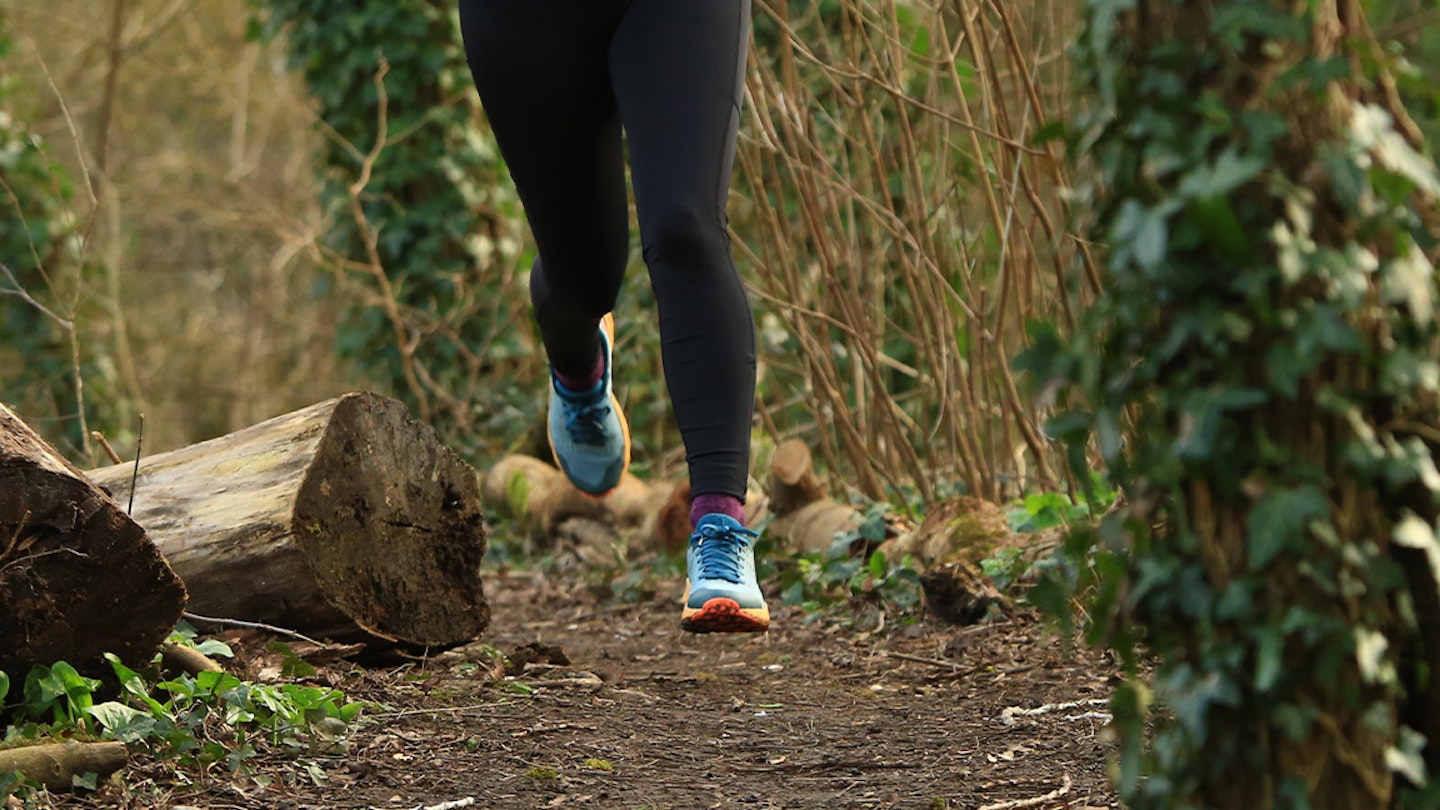
If you're thinking long distance though, think about additional cushioning and, therefore, in some, but not all, additional weight, bringing the shoes into the mid-300s.
Toe box: The rocks will be there year-round, so look for protection in that department.
Drop: There's almost a generational gap here. Older shoe models work off an 8mm-12mm drop for a higher, more cushioned ride, while many of today's shoes come in at around 4mm-6mm for a closer-to-the-ground, faster feel. As with any shoe advice, it's always about what feels good personally.
In theory, it's worth progression to lower drop shoes as they do feel quicker (half the job), but it can be at a cost for your calf muscles. There are lower drops as well, with 0mm replicating barefoot. The jury is out at the moment as to what is best!
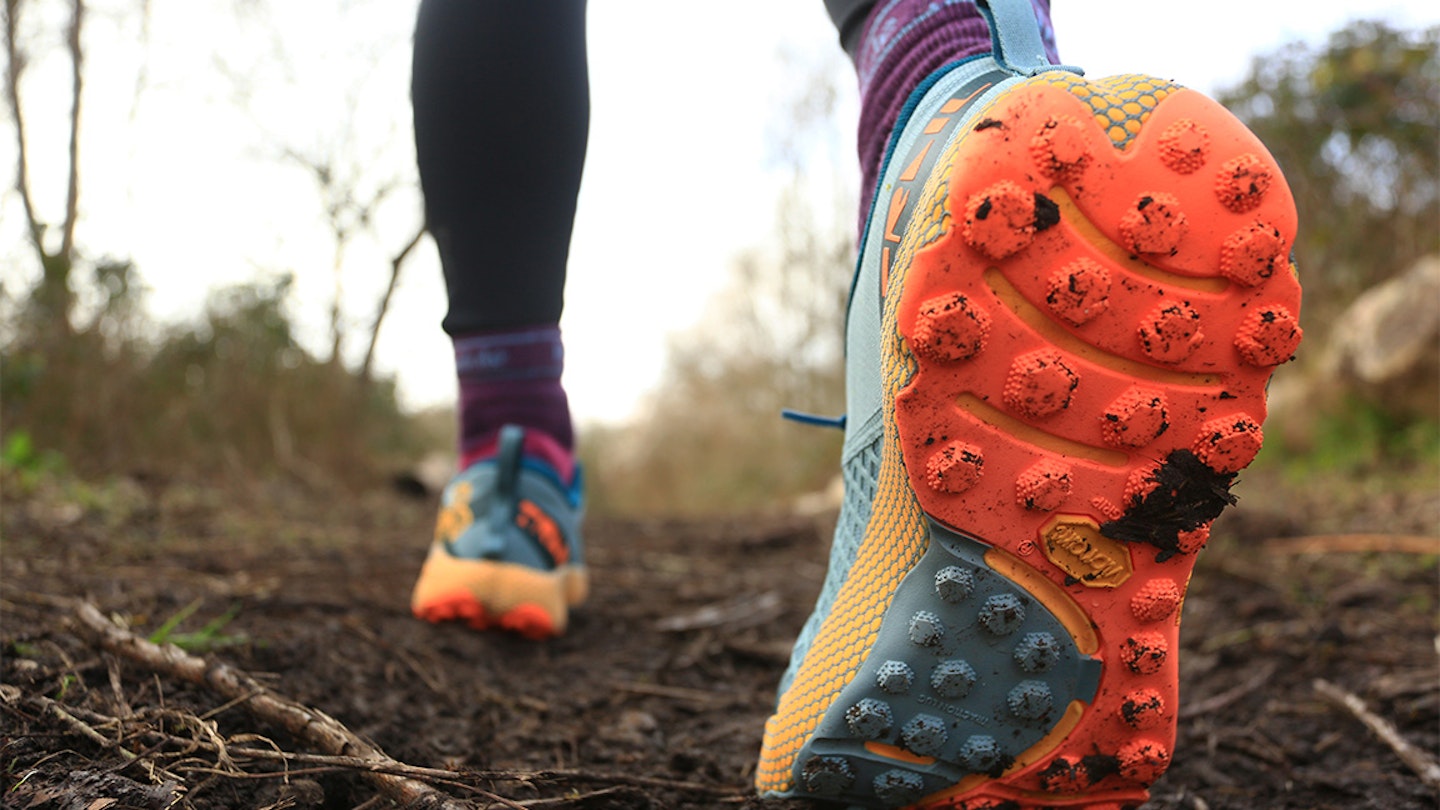
Midsole: EVA, PU, TPU or Pebax are the foams of choice for most brands. All offer softness and flexibility to different degrees.
Fit: There's the traditional lacing system, of course, but the Salomon system and the Boa fit in a variety of brands, including La Sportiva and Adidas do offer superb stability on rough, steep terrain. Consider the surfaces you'll be running. Tough descents and contouring lend themselves to this new fit system.
Lug length: Summer shoes will offer less in the grip department, so lugs around 3mm at the most, while winter shoes go all the way up to 6mm and even beyond on occasion. Rubber, of course, wears quicker, so longer lug-length shoes need to stay strictly off-road!
If you want even more info, take a look at our full guide on how to choose a pair of running shoes.
Are trail running shoes worth it?
If you're planning on exploring more off-piste than your usual pavements and local park, then we'd highly recommend you invest in a pair of trail running shoes like those reviewed above. As you transition from road to trail, you’ll find you need extra help in stabilising your feet and pushing off from the ground as you run.
In any case, good footwear is really important for the health of your joints and injury prevention. We believe you should always be in a decent pair of shoes, which is why our editor spent months getting his two sons to try loads of kit and whittle down a list of the best kids' running shoes.
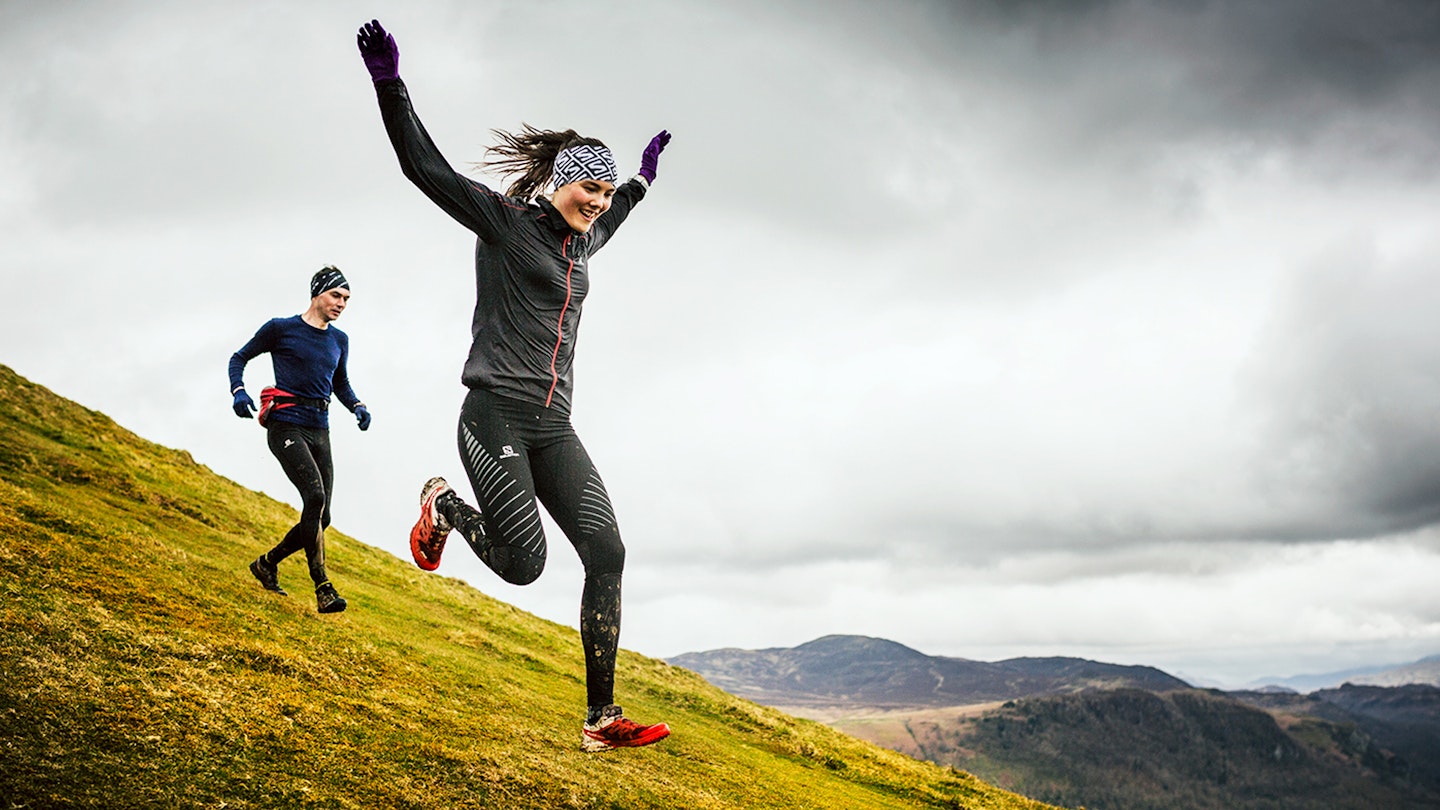
This is because trails can be wet and slippy, with loose terrain and unpredictable bumps and dips. You need running shoes with extra protection to ward off errant rocks and roots, and lugs along the outsole (grippy spikes on the bottom) to latch onto the ground and help propel you forwards as you enjoy the trail.
The more off-road and wild you get, the more likely you’ll need longer lugs and more protection from the elements. You may even want to consider a semi-aquatic shoe like the Vivobarefoot Hydra for when the trails get boggy after a good British watering.
If you’ve got lofty ideas of building up to the longer distances, you should definitely consider grabbing a stability-focused long-distance trail running shoe with a bit of extra cushioning (we've just spotted a discount on the Brooks Cascadia 18, which fits the bill nicely!) to keep you comfy as the miles stack up.
Can you use trail running shoes on the road?
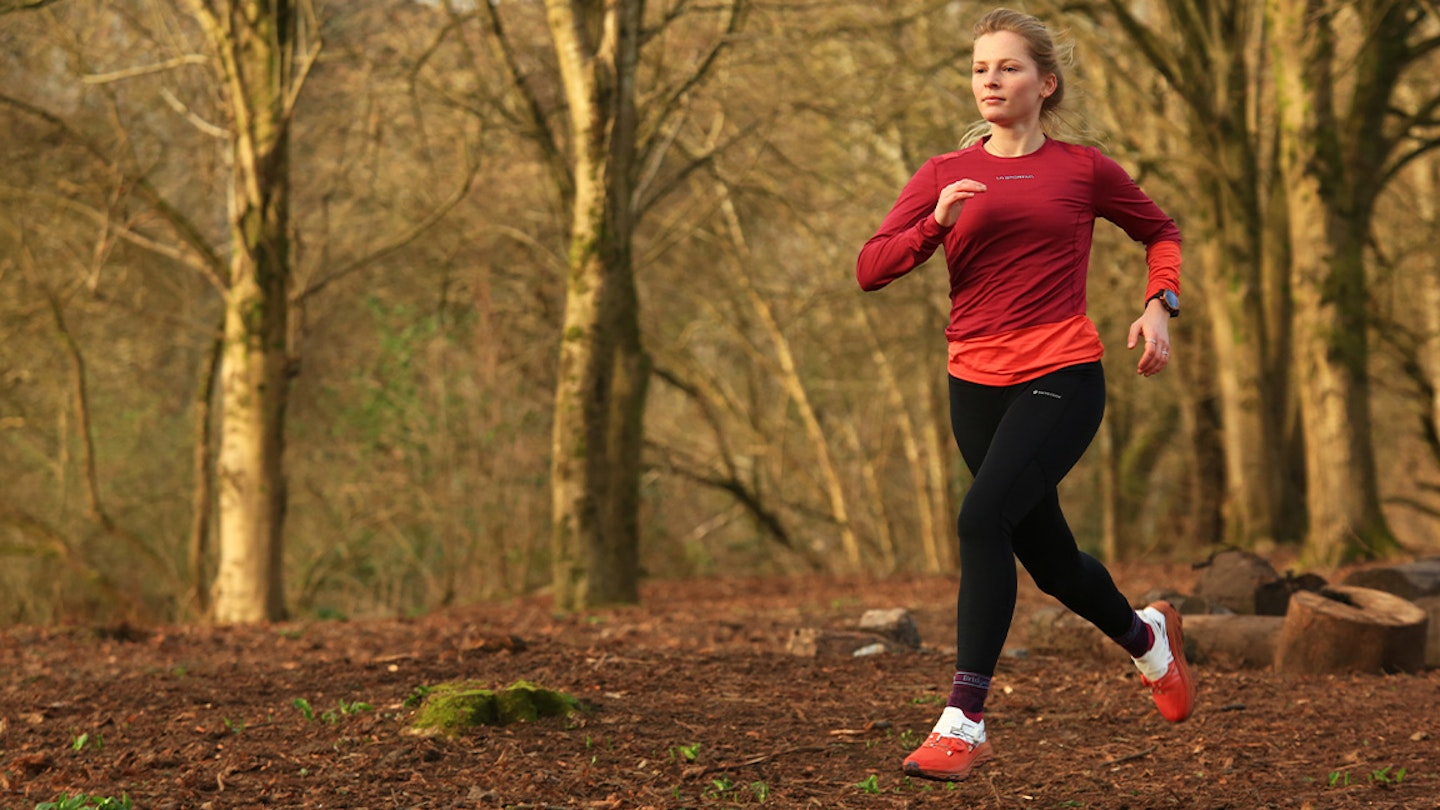
Many trail running shoes will not feel comfortable to wear on the road for extended periods of time. This will especially be true for those with long lugs along the bottom, which will dig into the soles of your feet as you run if the shoe has a slim midsole. Thankfully, there’s a specific category of trail running shoes emerging in recent years called road-to-trail.
It’s in the name, but these handy run shoes strike the perfect balance between cushioning, midsole impact absorption, and grip, to deliver a shoe that can cope with extended sections of road running as well as some mildly muddy and gentle trails. These days, mostly everyone will need to contend with both road and trail on their everyday run routes, so investing in a road to trail shoe can make your runs much more enjoyable and smooth.
Are trail running shoes good for hiking?
Trail running shoes are good for some types of hiking when you want optimal speed and agility (even if you aren't running), such as fastpacking or short, sharp treks. Trail running shoes are lightweight and have grippy soles - key traits for these types of hikes. However, trail running shoes lack the durability and support needed for long distance or technical hikes, where walking boots are much better.
How trail running shoes should fit
The size you choose for your next pair of trail running shoes really depends on what distance you're planning to run. Now we’re not suggesting you go crazy and order several sizes up from your usual digits, but it’s worth bearing in mind that as you run, four-times your bodyweight goes through your feet upon impact with the ground. That’s basically like repeatedly hitting the soles of your feet with a frying pan for the duration of your run.
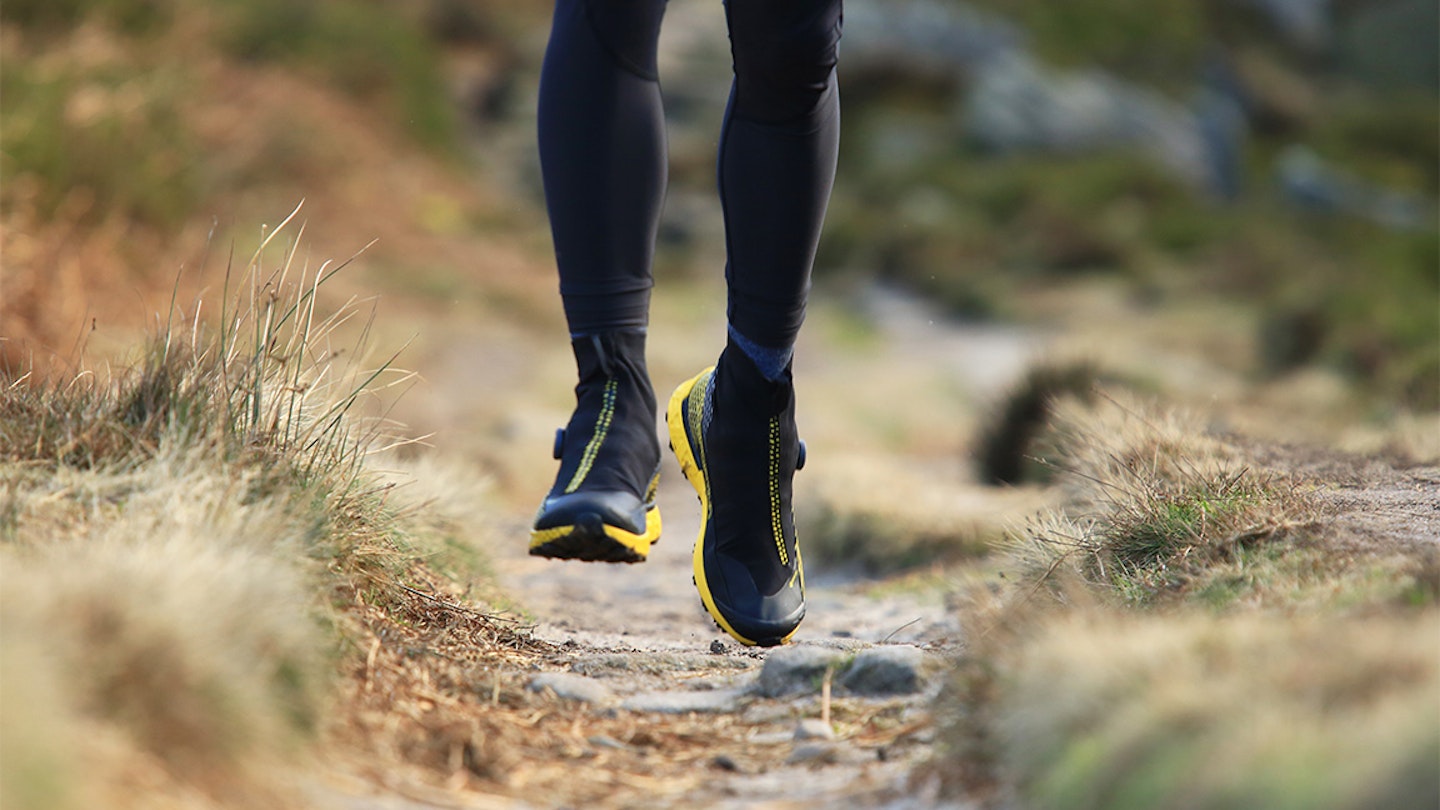
Obviously, this is going to have an impact on your feet - they will swell. So to ensure you remain comfortable and rub-free, it’s worth sizing up 0.5-1 sizes on what you’re normally used to wearing, especially if you’re planning on running long distances. Other than that, make sure if your feet are particularly wide you get a wide-fit shoe or look at brands like Altra whose shoes are designed with extra room in the toe-box. Equally, if your feet are extra narrow, you’ll need slimmer shoes like some Salomon ones, in order to still be able to achieve that locked-in, blister-free fit.
When to replace trail running shoes
When it comes to deciding when to replace your trail running shoes, you may be tempted to follow the same rule you would with your road running shoes. That is that typically, we replace running shoes every 500-800km. However, since trail running shoes are (sometimes literally) put through the wringer much more when out on the trails, you may want to adjust this depending on how much you’ve managed to wreck them in the good muddy stuff.
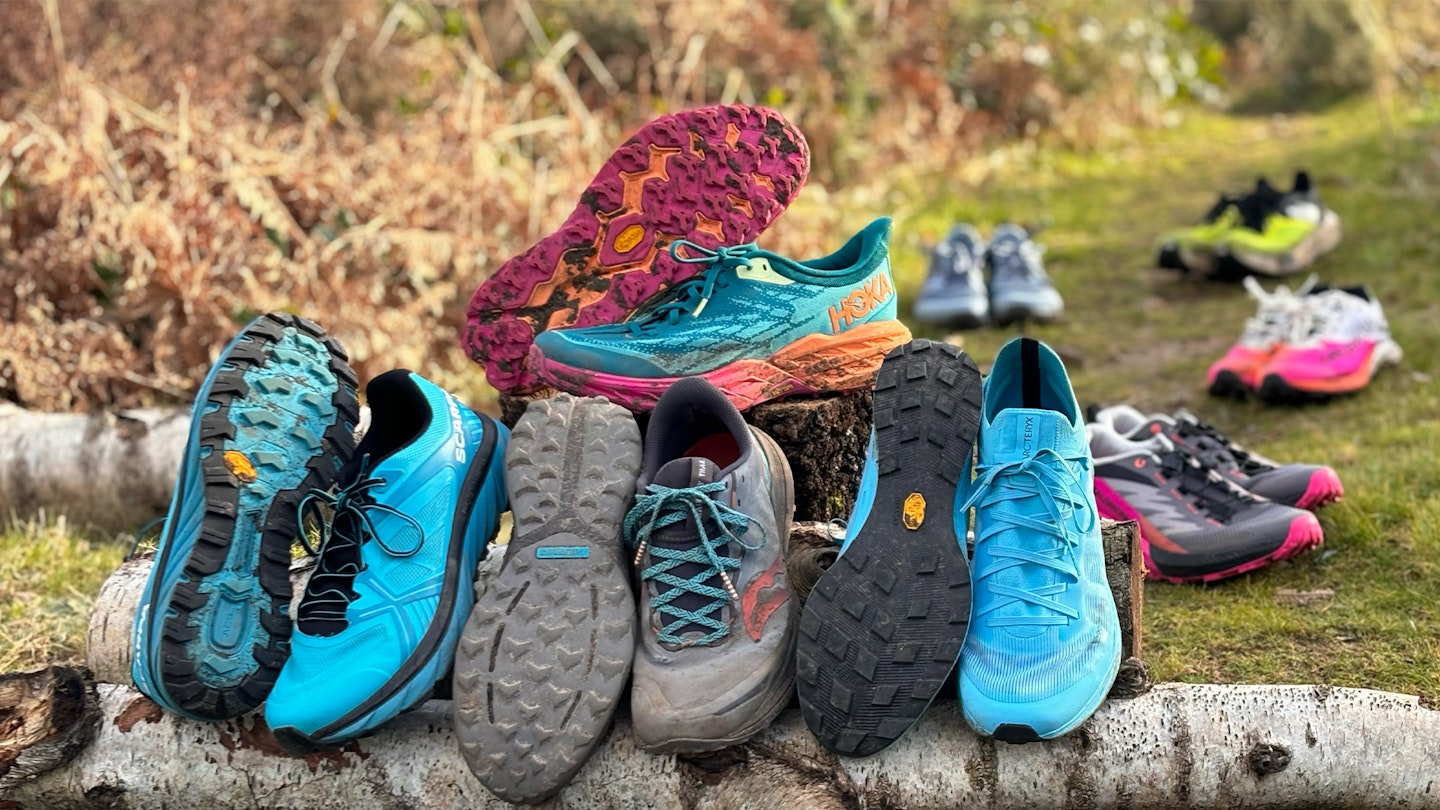
Other factors to take into account when considering the right time to replace your trail running shoes are whether the midsole has been substantially flattened from repeated impact, and how worn the lugs are along the bottom. Trail shoes are first and foremost used to give you traction when running along slippy and unpredictable terrain, so if the main component that provides traction is worn out, it’s probably time to reinvest in another pair like those we've reviewed above.
Caring for your trail running shoes
Outdoor footwear gets a hard life. If you want to keep yours performing as well as they can for as long as possible, a little TLC is needed. Keep fabrics clean to maintain breathability, and waterproof fabrics need reproofing every so often to maintain water repellency. Here are the products we'd recommend to help extend the life of your running trainers...
Keep your shoes dry
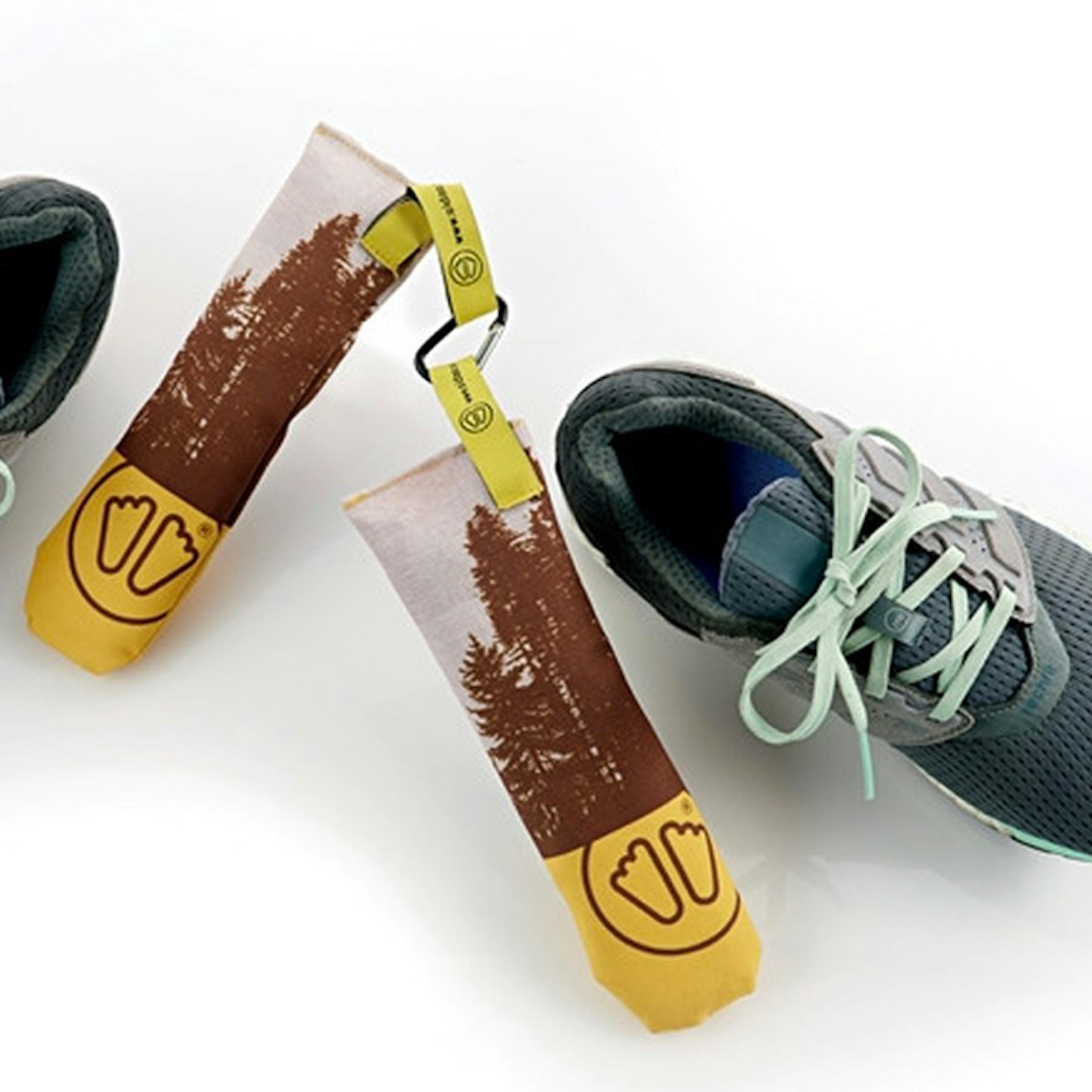 Sidas
Sidaswww.sidas.com
While the other products in this list will keep your shoes squeaky clean on the outside, these dryer bags will help soak up the moisture from your running shoes on the inside. Keeping them feeling fresh and free of that post-run 'pong'. We've never come across such a handy product to help refresh our kicks after wet runs. These sacks are stuffed with 100% cedar wood, which absorbs moisture out of the inside of a shoe four times quicker than air drying. They're also re-useable – simply hang them up to dry after use for six hours in between runs, then they're ready to go again!
Keep your shoes clean
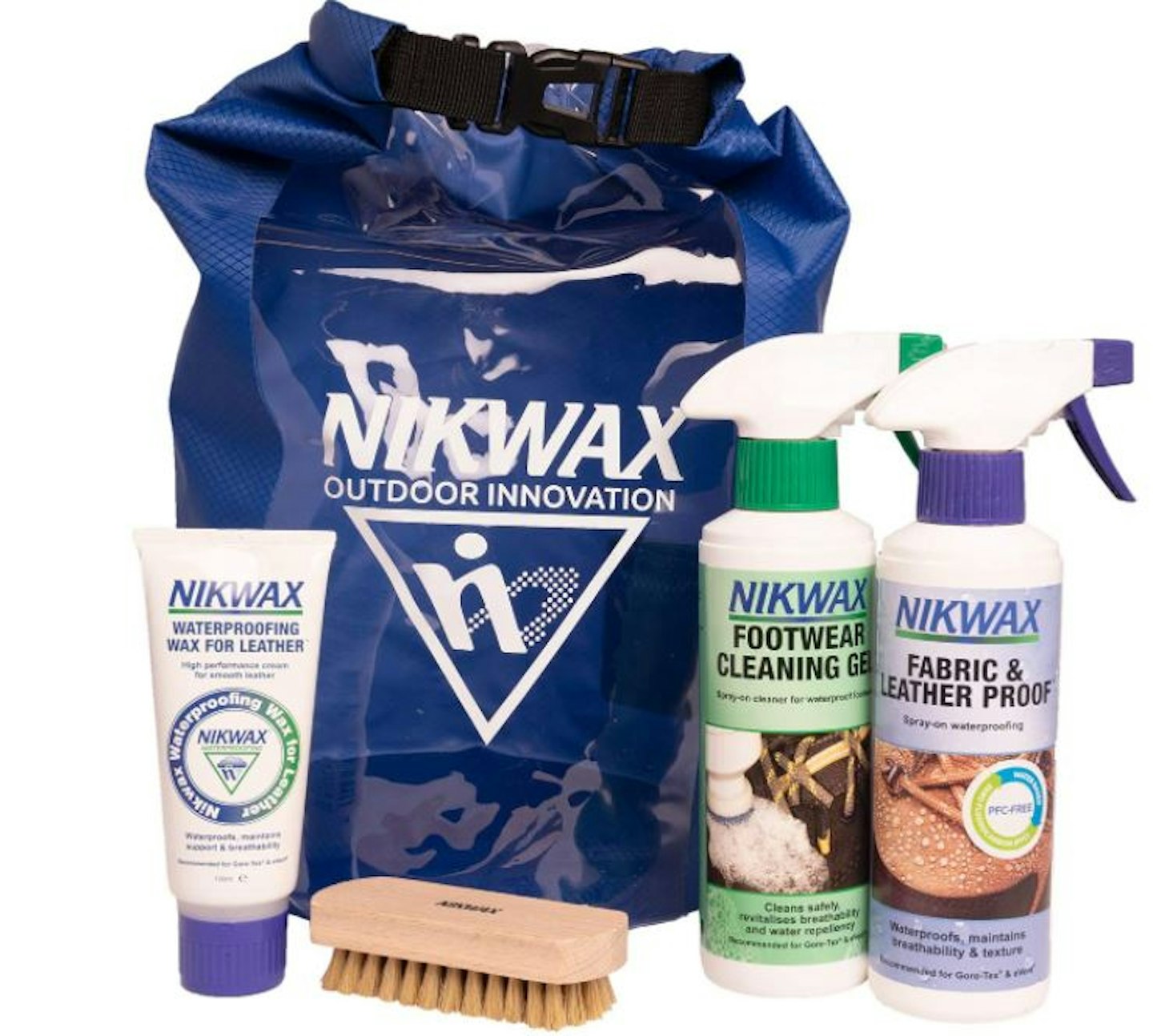 Amazon
AmazonThis Nikwax bundle is a footwear care kit for leather and fabric materials, complete with a brush and a dry bag. This kit earns high marks for its sustainability credentials, and the included dry bag proves invaluable during extended running trips and adventures.
Keep your feet protected
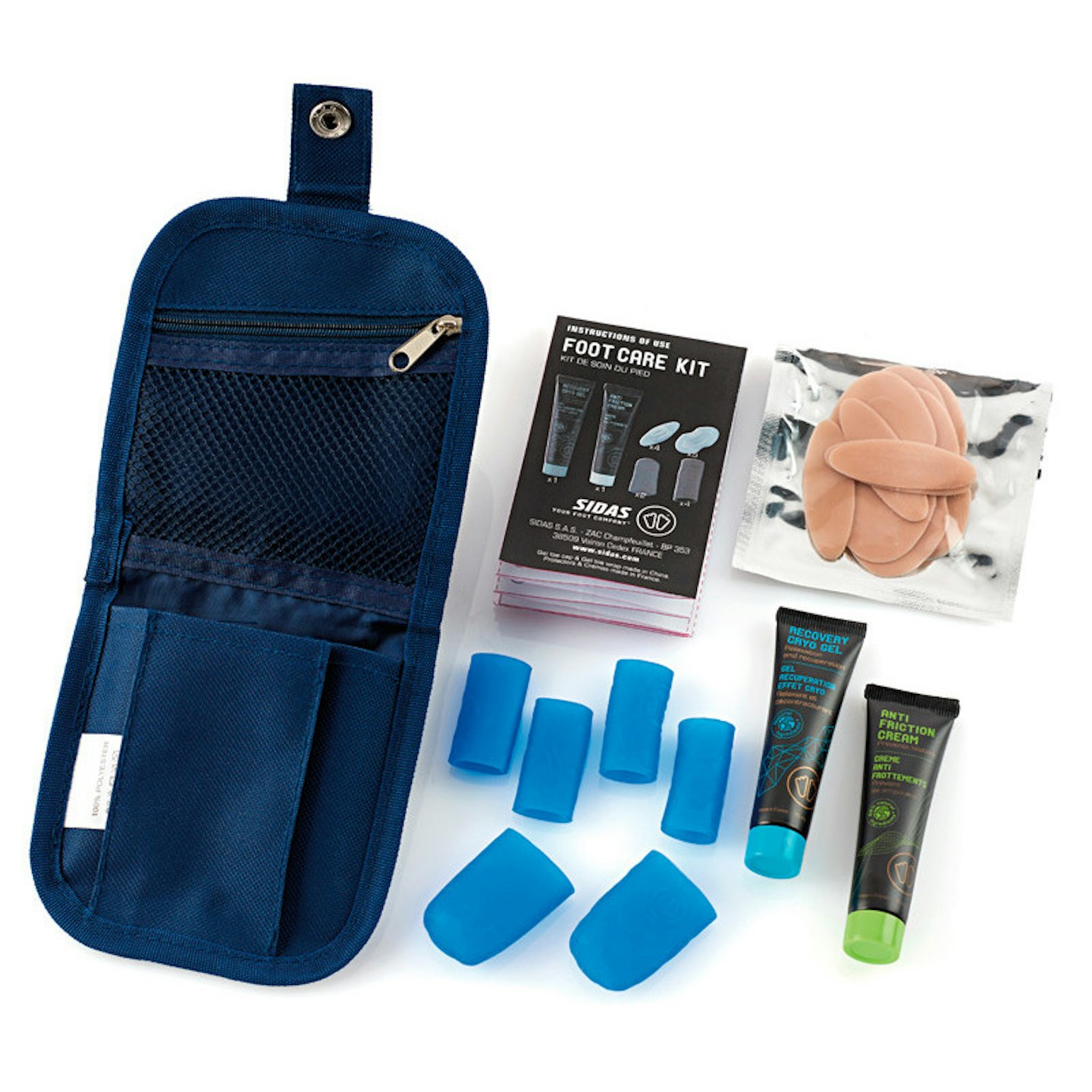
www.sidas.com
This compact Footcare Kit from Sidas contains a bundle of mini-sized items geared towards caring for your feet over long distances, and getting you to the finish line pain-free should any issues flare-up mid-run. This is truly a Hail Mary rolled up in one smart little pouch!
Those who enjoy long days out on the trails will know that they often come hand in hand with sore feet, black toes, and sometimes blisters. The Sidas Footcare Kit is small enough to fit into any running pack and includes heel and toe protection pads to stick over blisters, gel toe sleeves to protect against black toes, or lessen any pain from black toes already forming (make sure your trail running shoes have a little extra room in the toe-box to accommodate these). Along with two 15ml tubes of anti-friction cream and recovery cryo gel.
About the authors

The shoes in this roundup were tested and reviewed by three legendary trail runners who spend most of their lives on the move: LFTO's own Milo Wilson, ultra woman Lily Canter, and mountain man James Forrest. The article as a whole was authored by Milo – hi there! Ahem–
As Live For The Outdoors' full-time trail running tester, writer, and guru, Milo leads our gear coverage and destroys shoes year-round in some of the UK’s most technical terrain. He specialises in shoes that can handle rocky ridgelines, mountain scrambles and long days far from civilisation, where he is most comfortable.
A nimble feel and reliable grip matter most to Milo, which is why he's such an obsessive champion for the Merrell MTL Longsky 2 Matryx. His reviews are rooted in deep testing knowledge, a critical eye and a slightly masochistic love of scrambling into remote places.
James and Lily are both full-time outdoor writers, ultra-endurance athletes and published authors.
James, based in the Lake District, is an ultralight gear obsessive who fastpacks up fells for fun, and rates maximalist trail shoes like the Hoka Speedgoat 6 that are light, cushioned and capable of serious elevation. He holds a record for climbing all 446 mountains in Ireland and Northern Ireland.
Lily is a hardcore ultrarunner with a preference for no-nonsense, high-performance footwear with plenty of durability for going the distance – the Scarpa Spin Planet was a recent favourite of hers. She recently completed the 190-mile Northern Traverse and is the author of Ultra Women: The Trailblazers Defying Sexism in Sport.
Between them, the trio have tested hundreds of trail shoes across every type of terrain and condition. If a shoe’s in this list, it’s because it earned its place.


